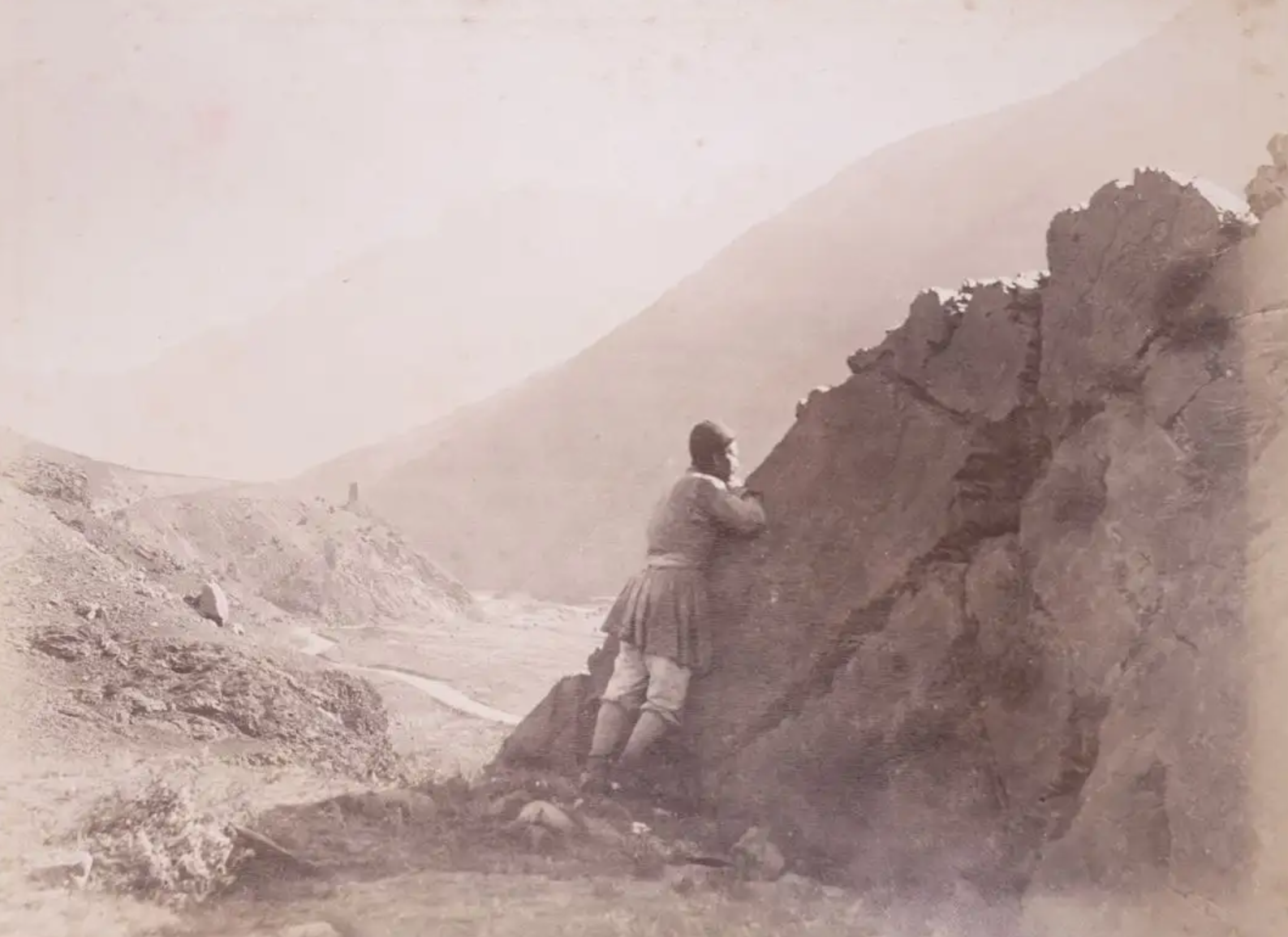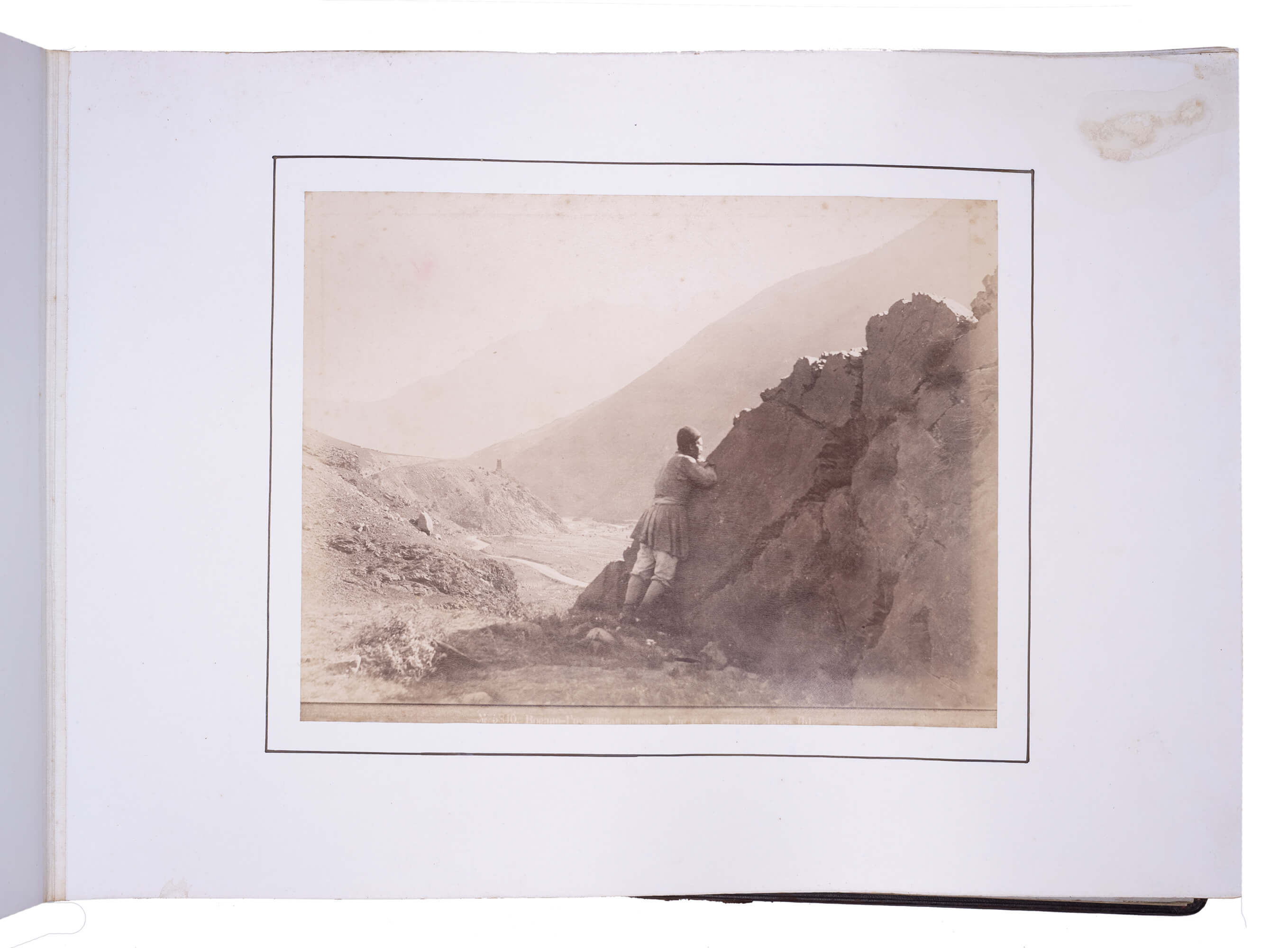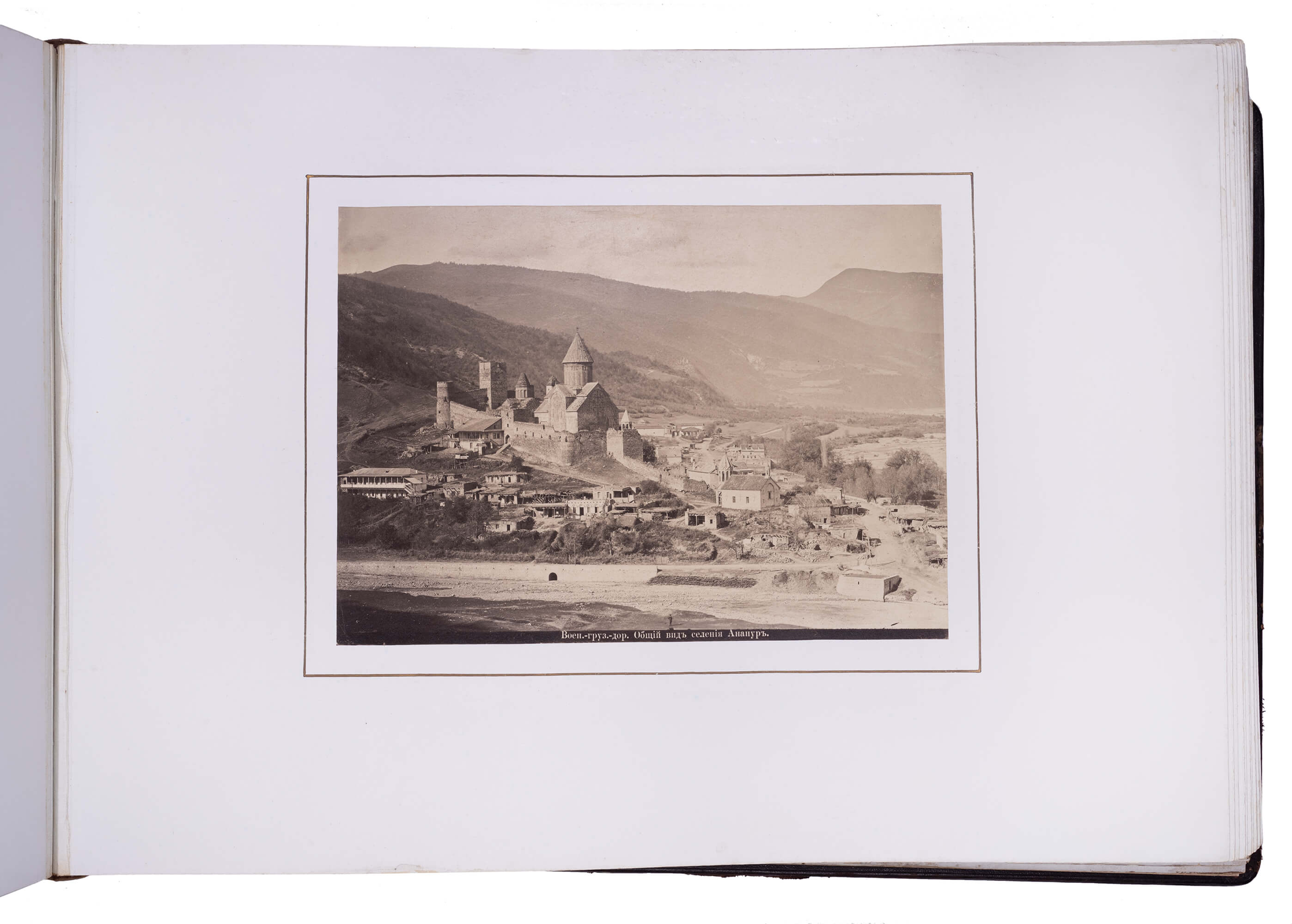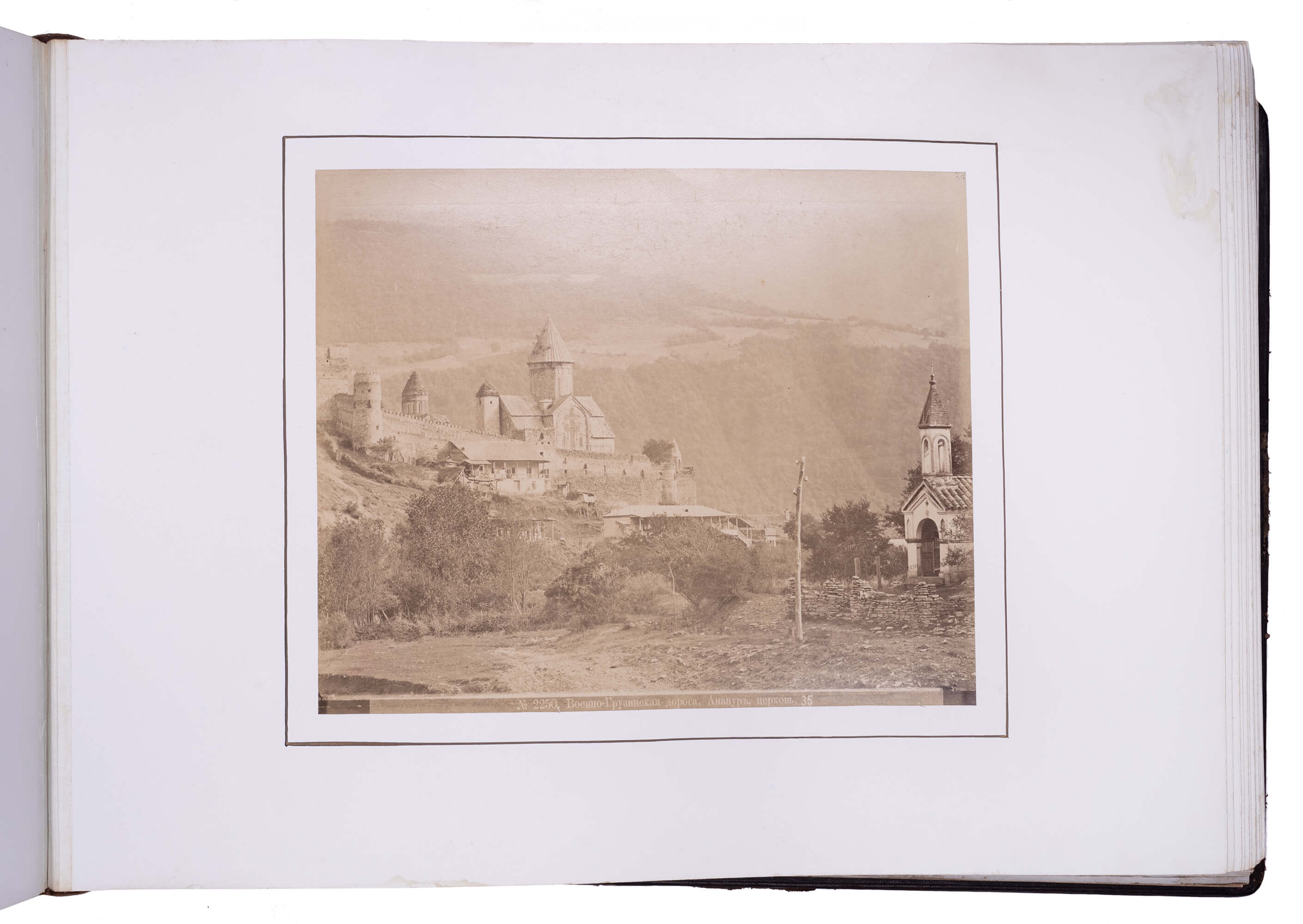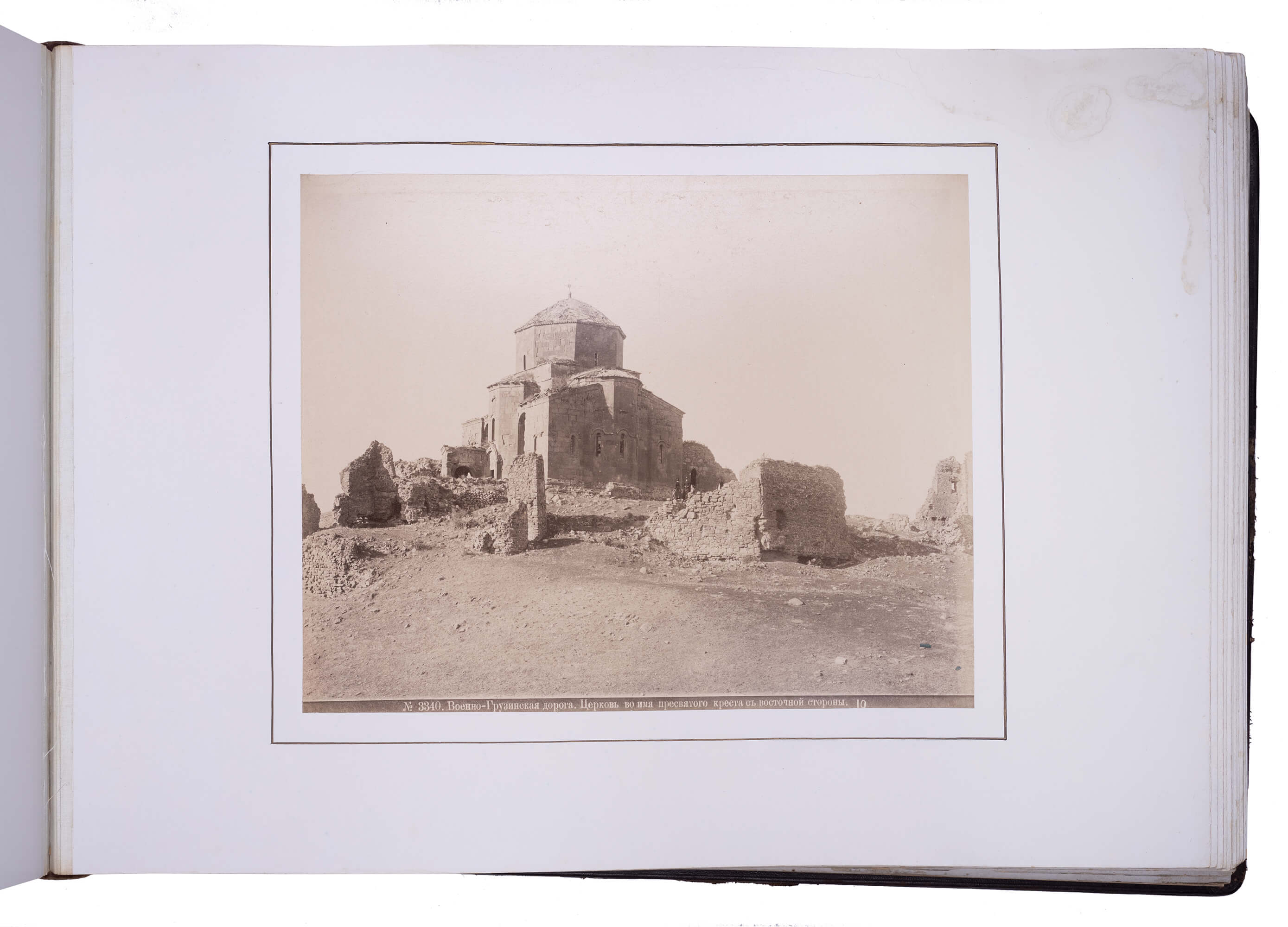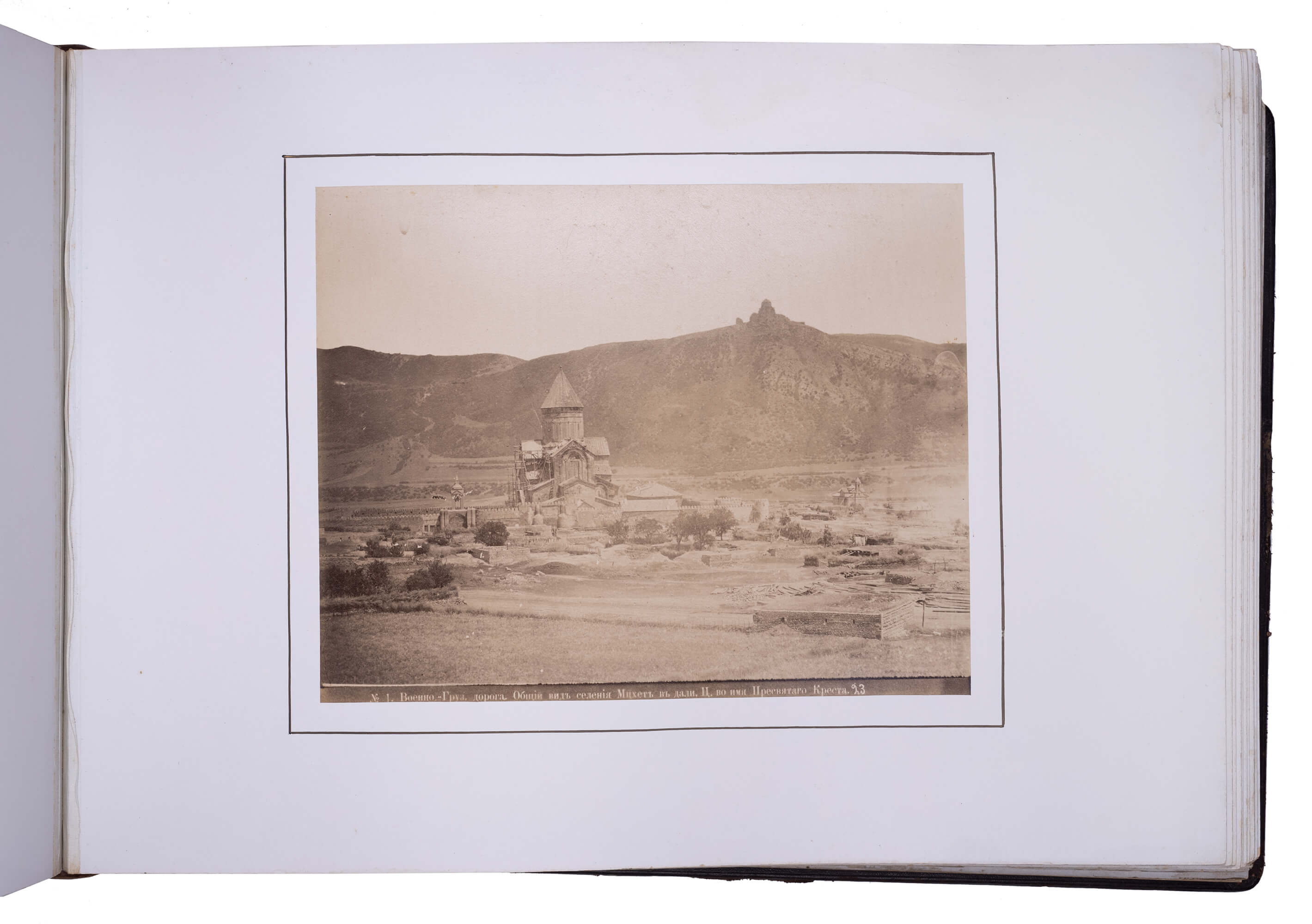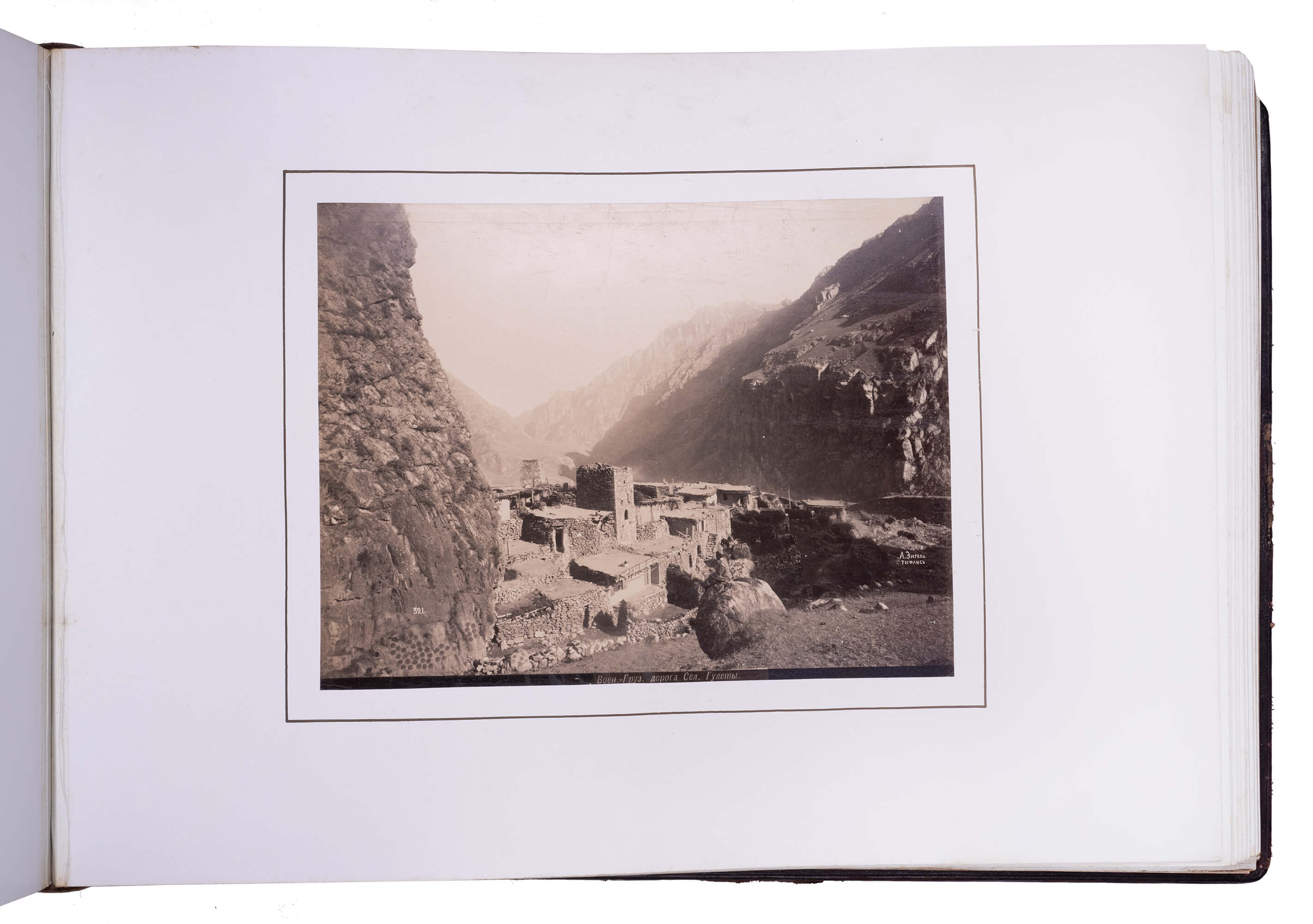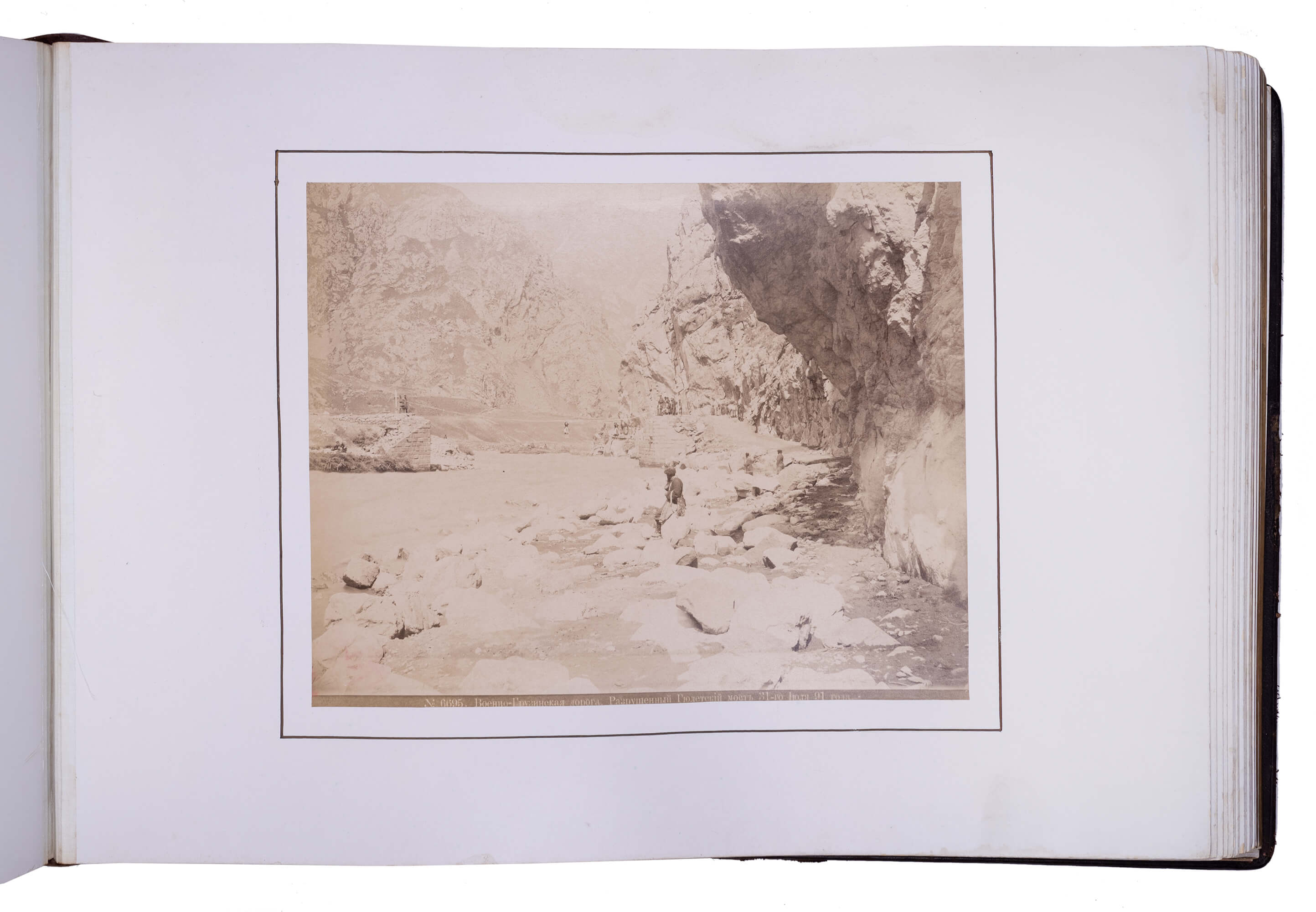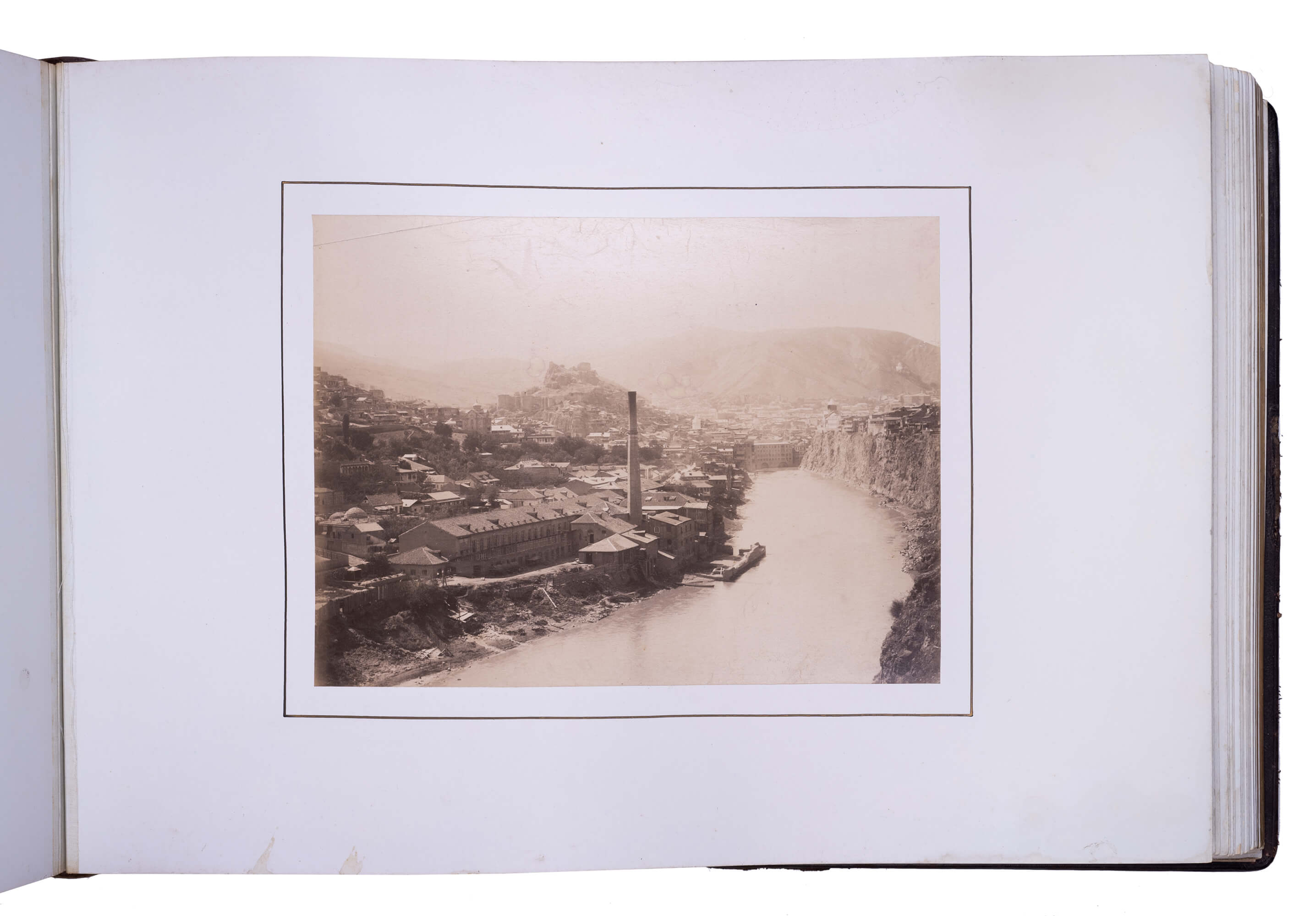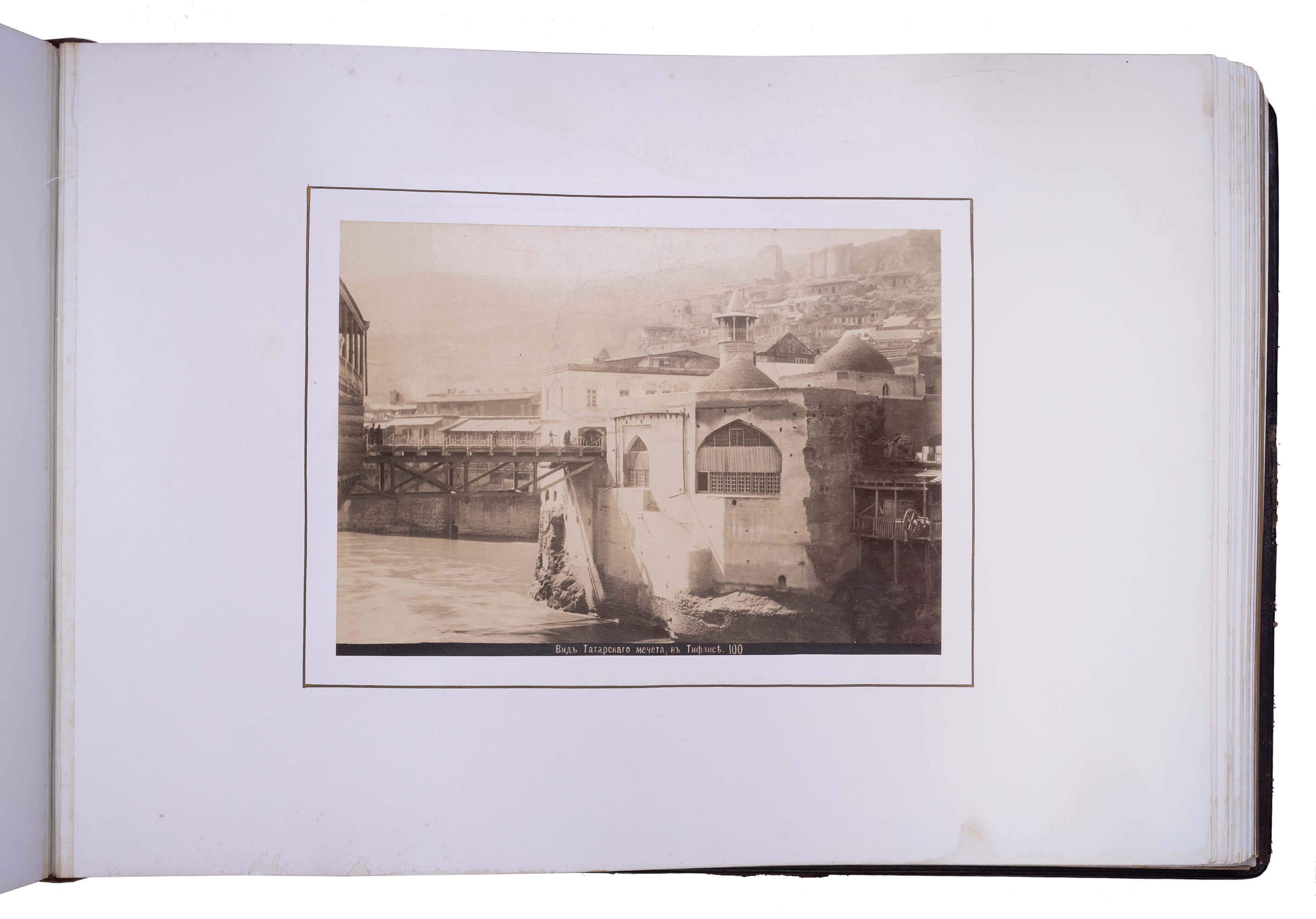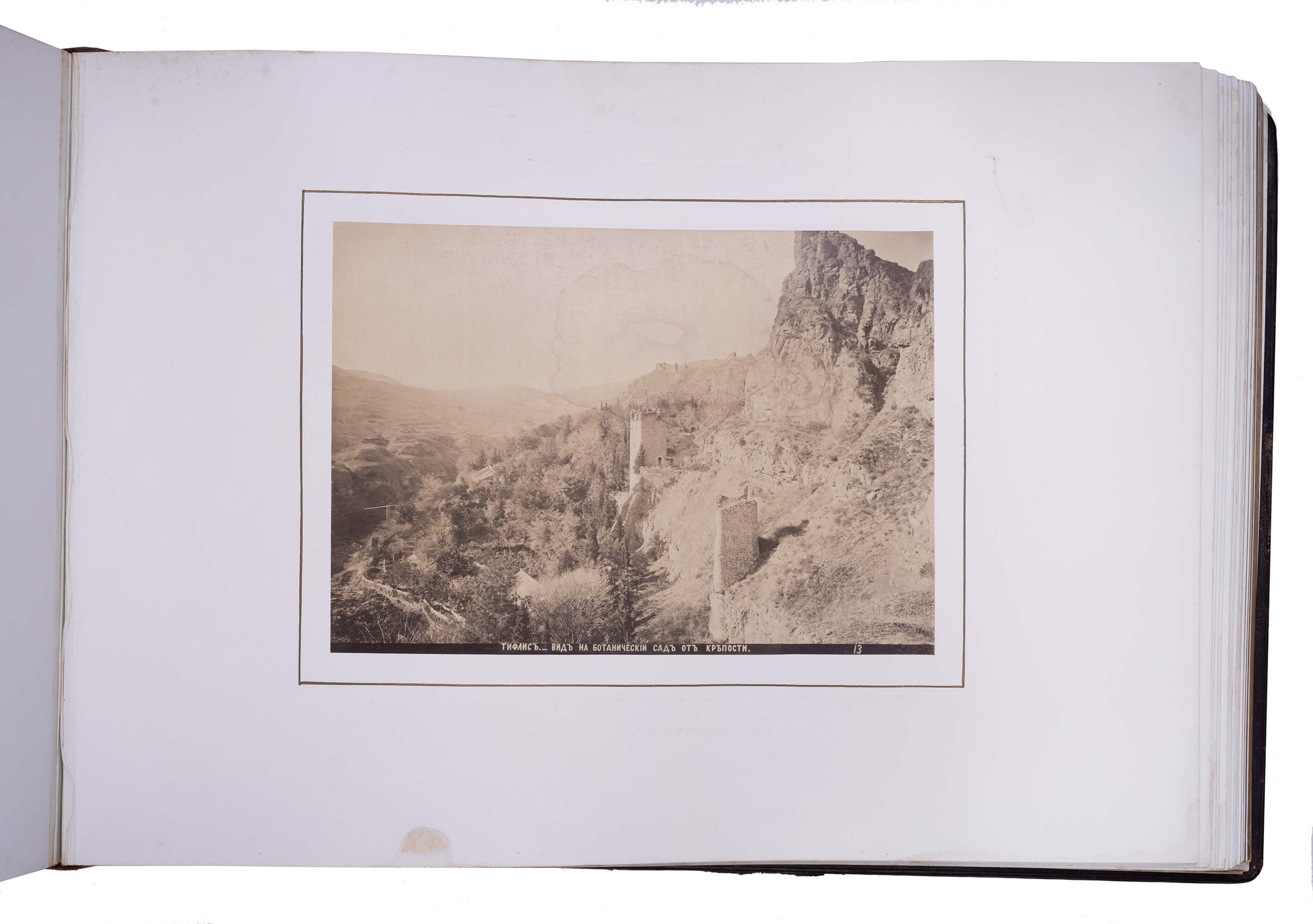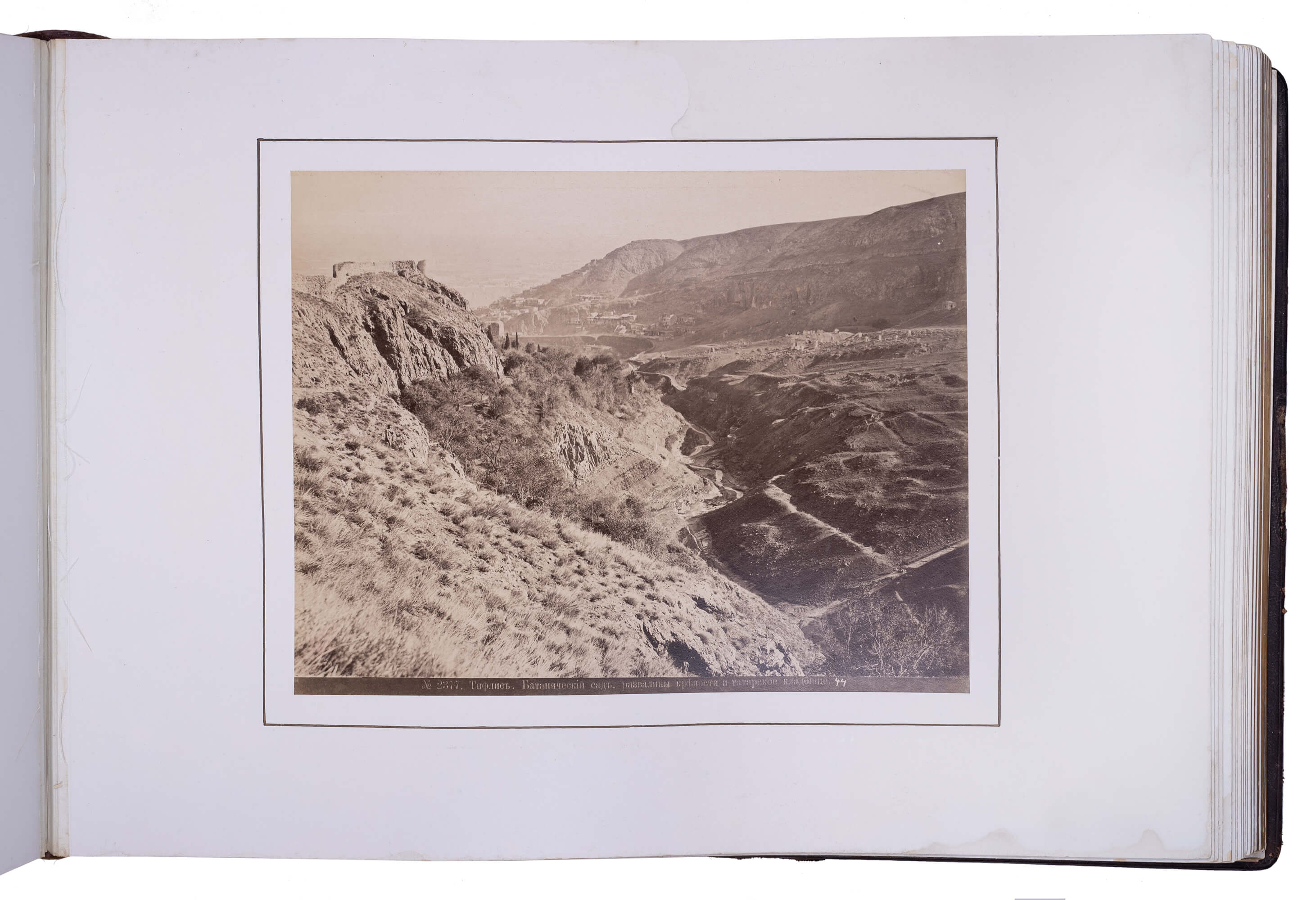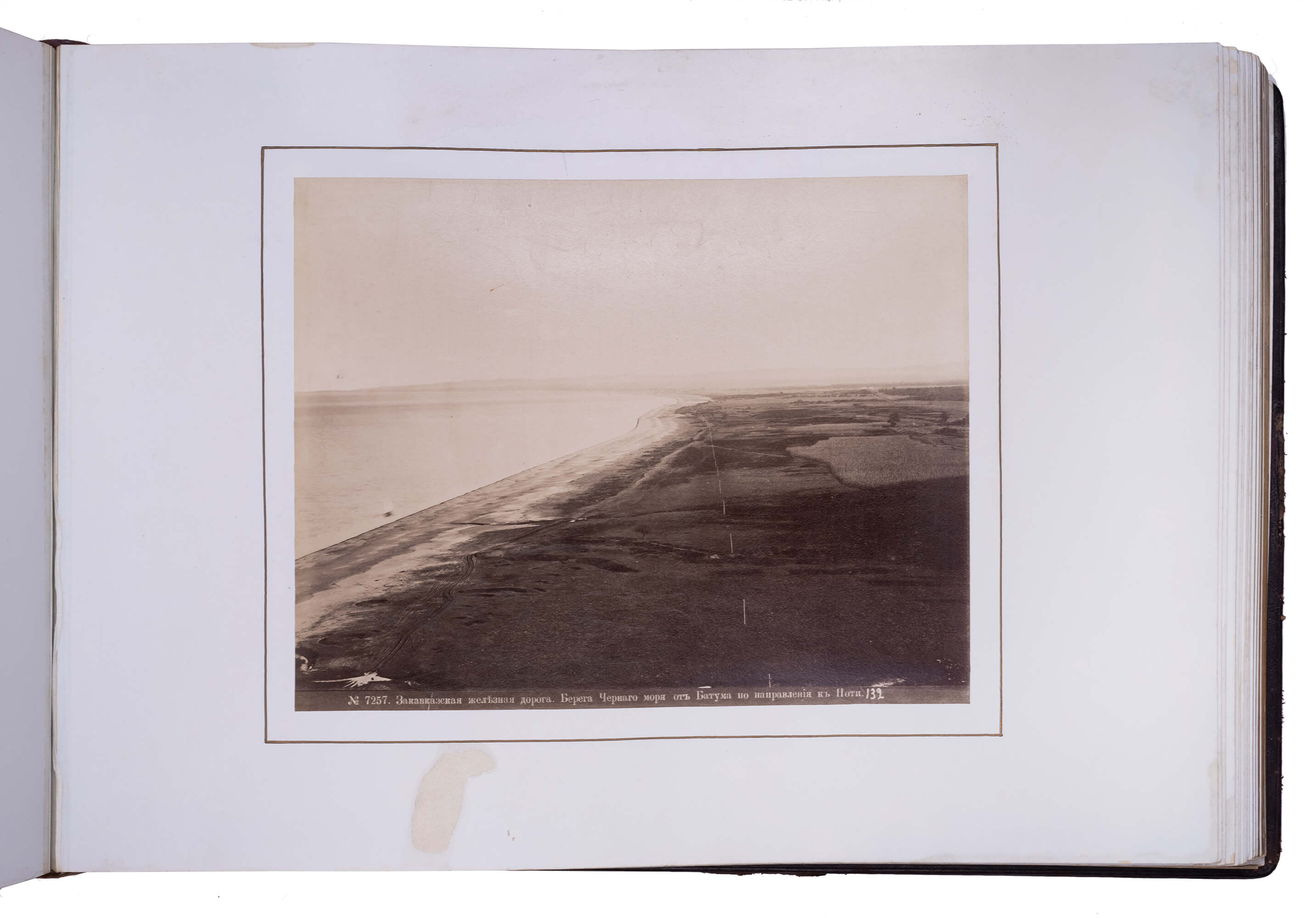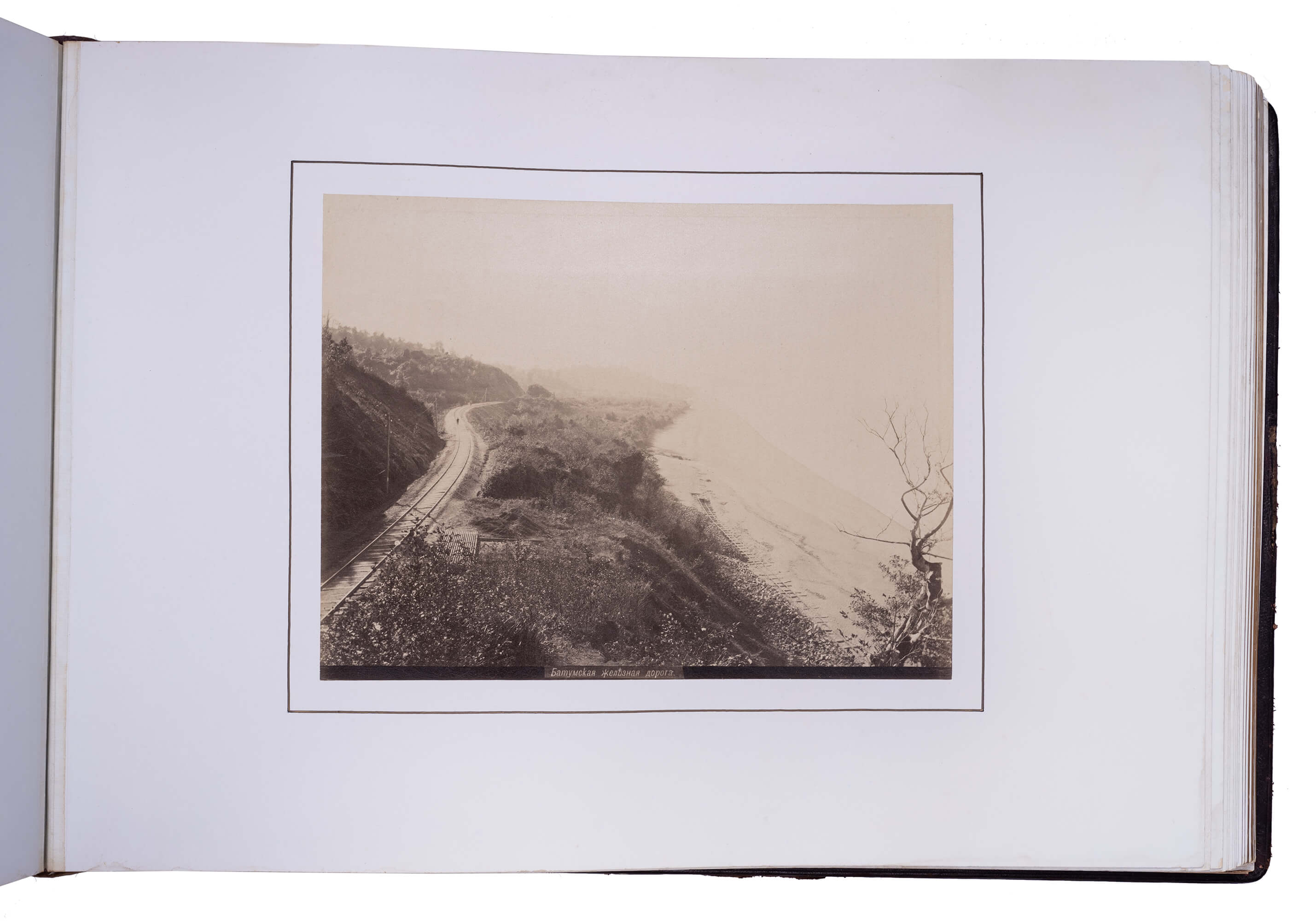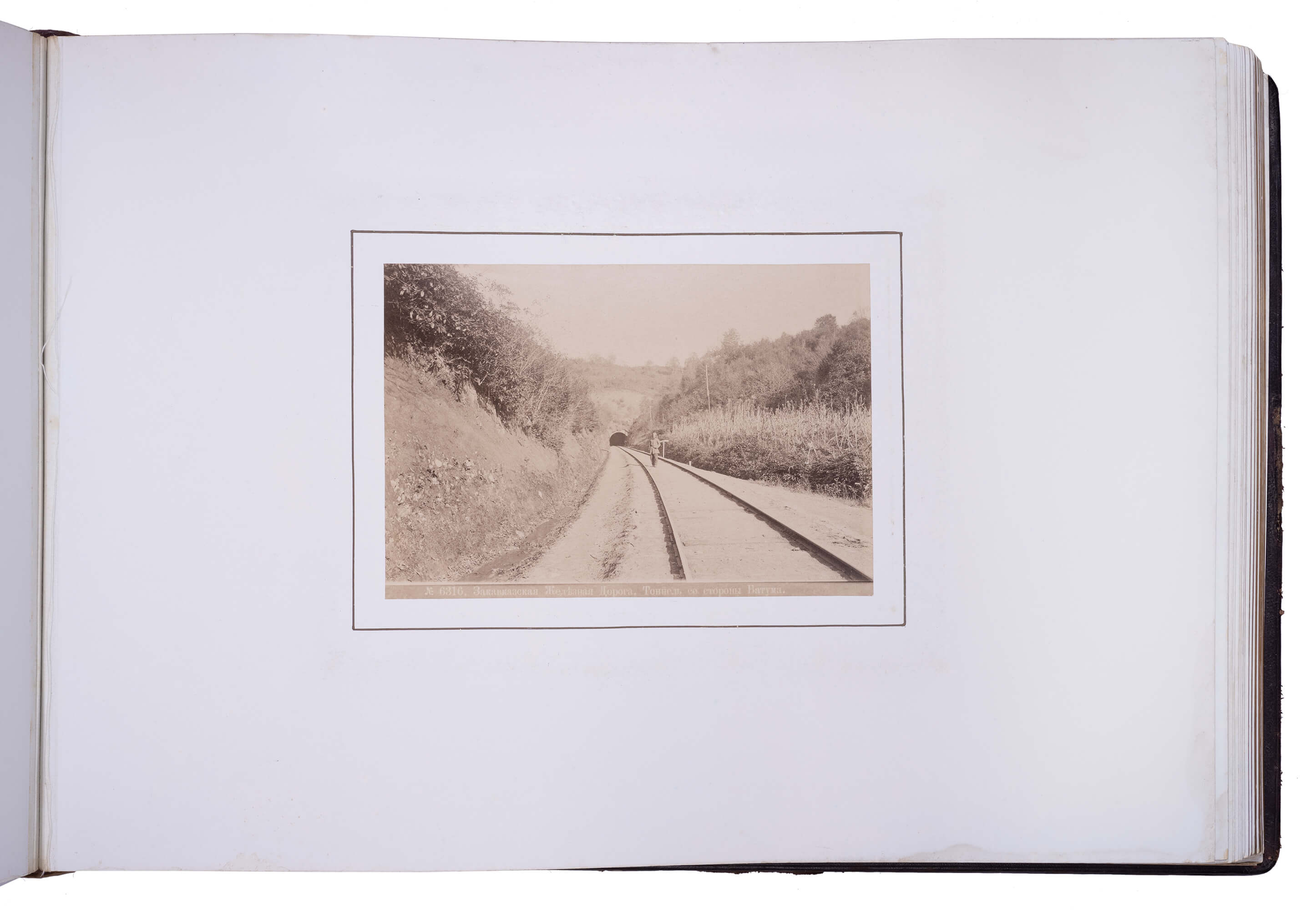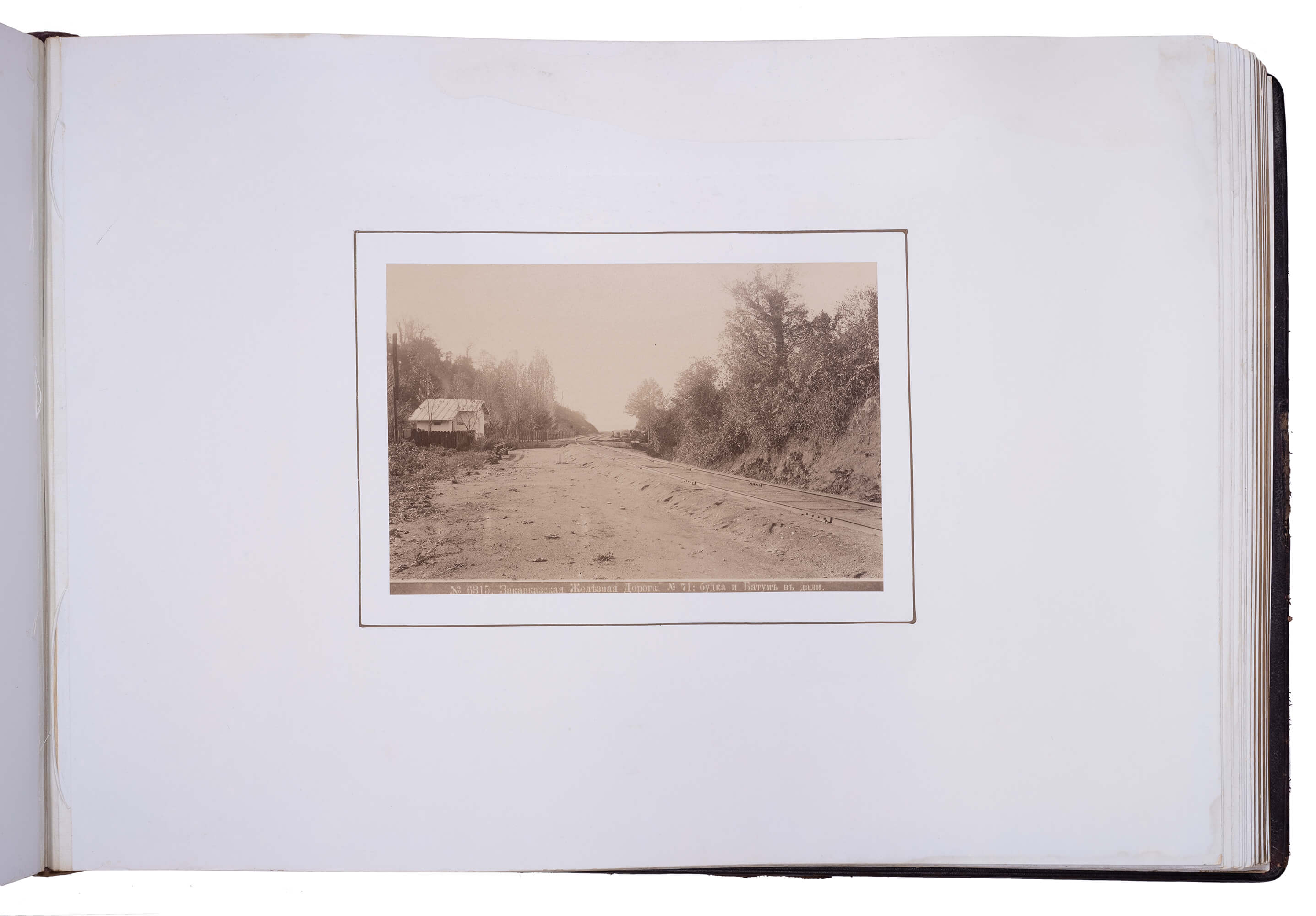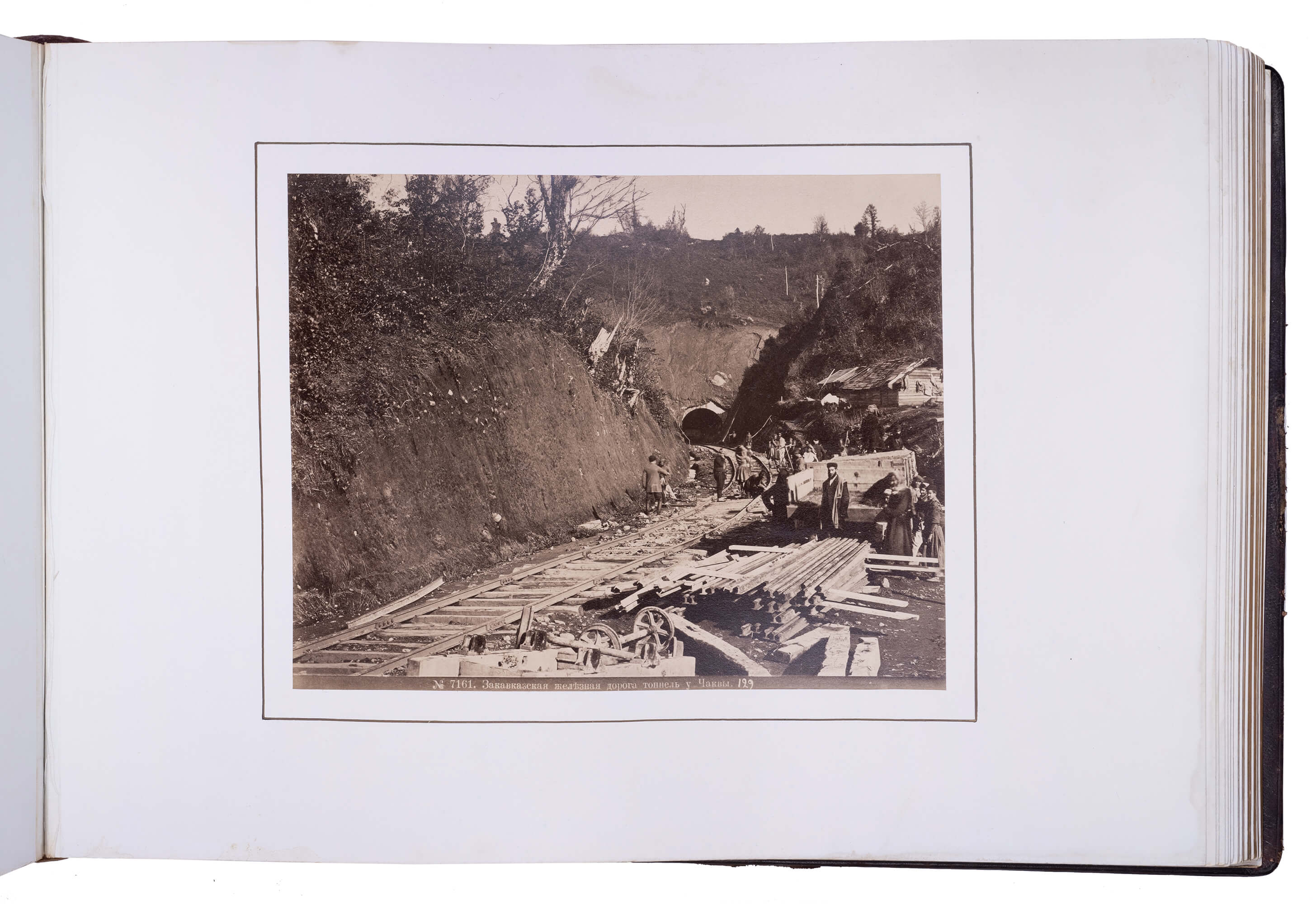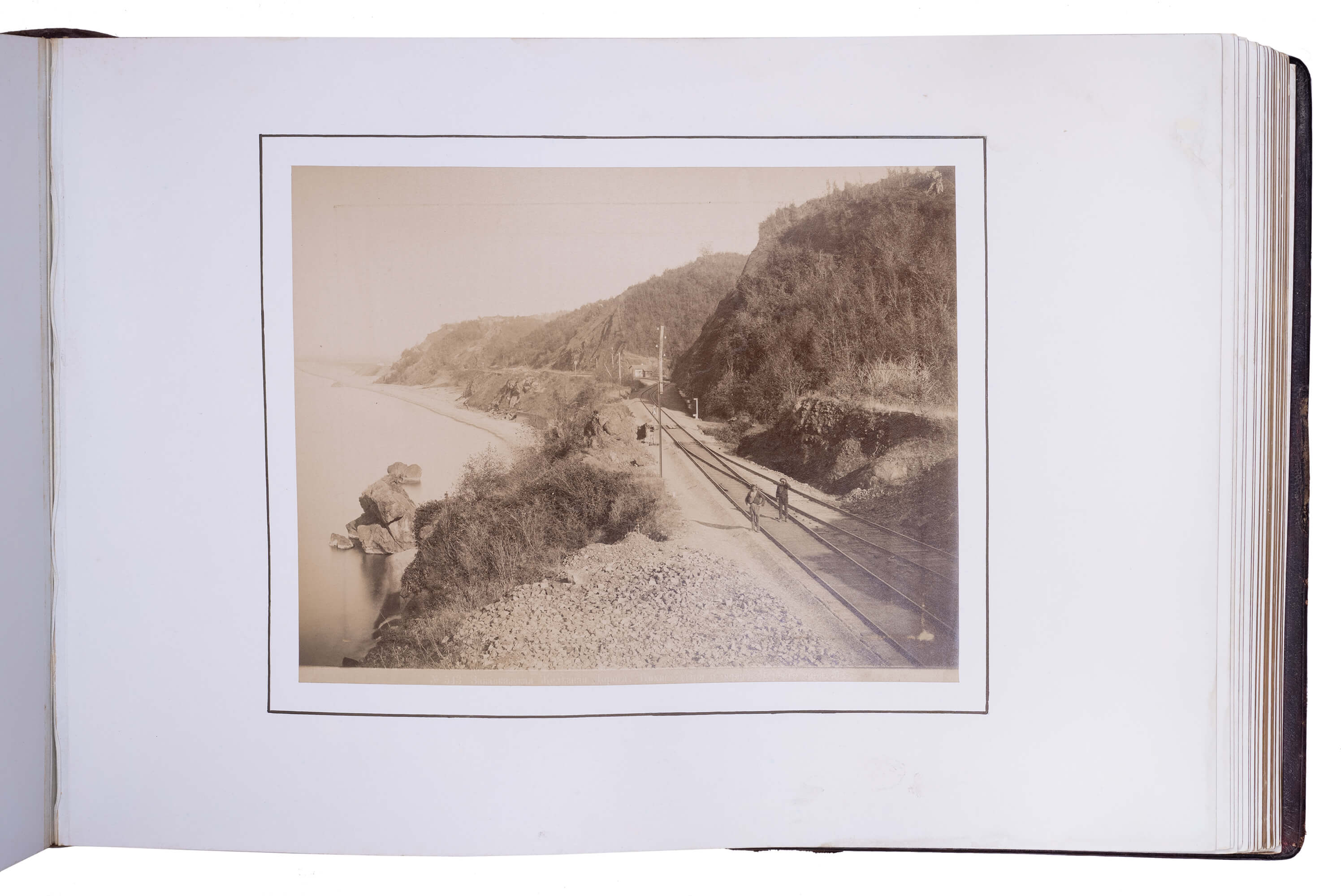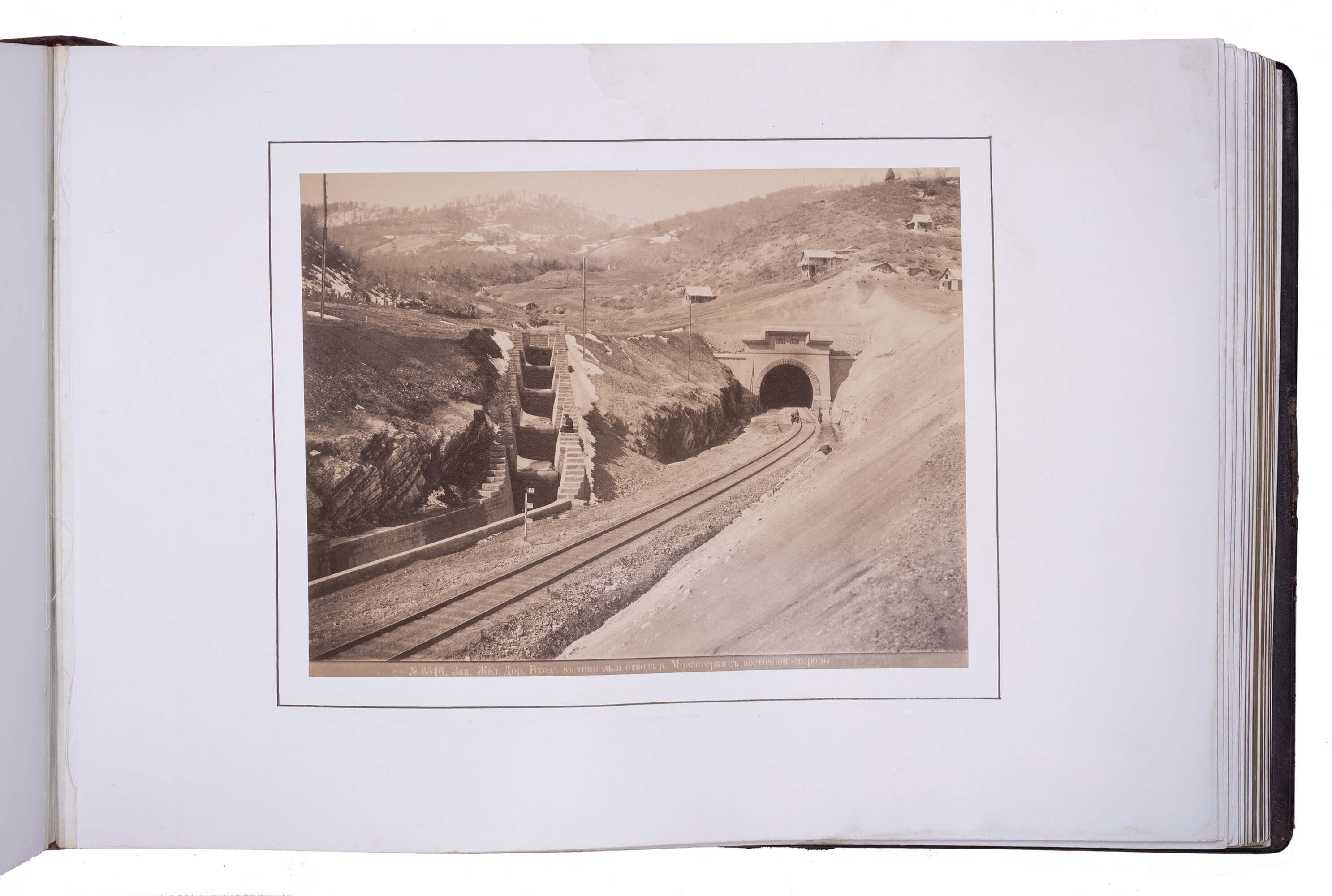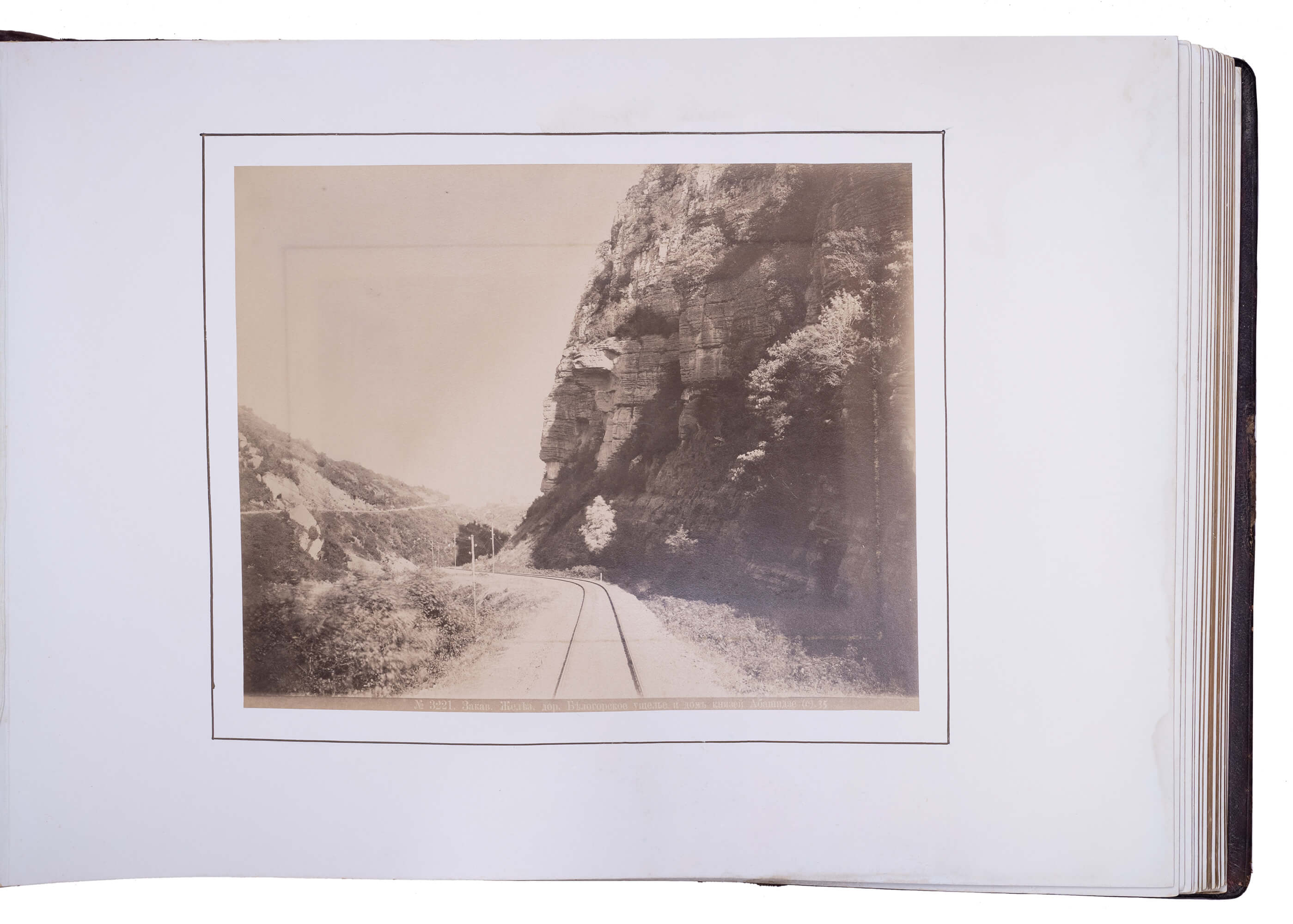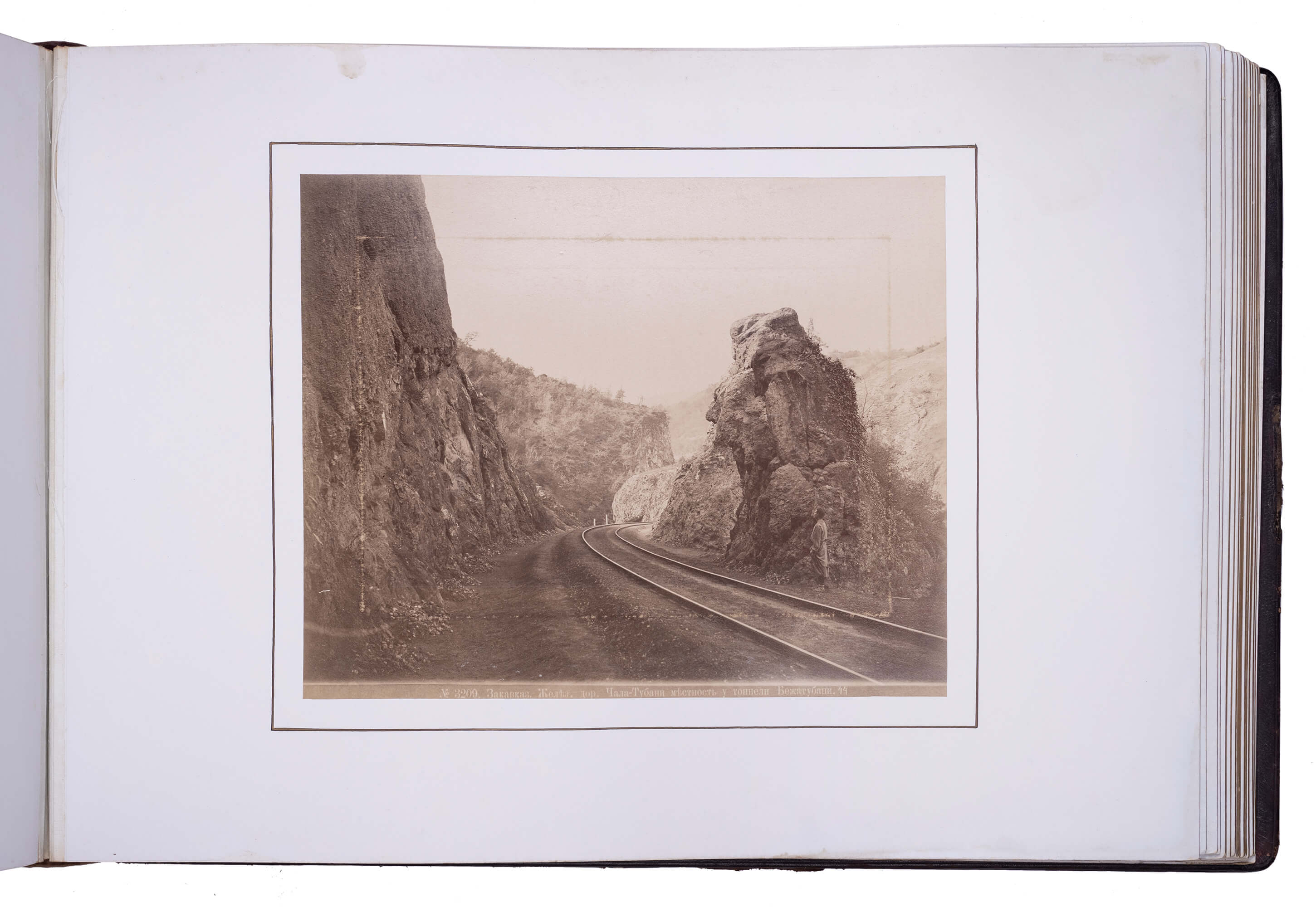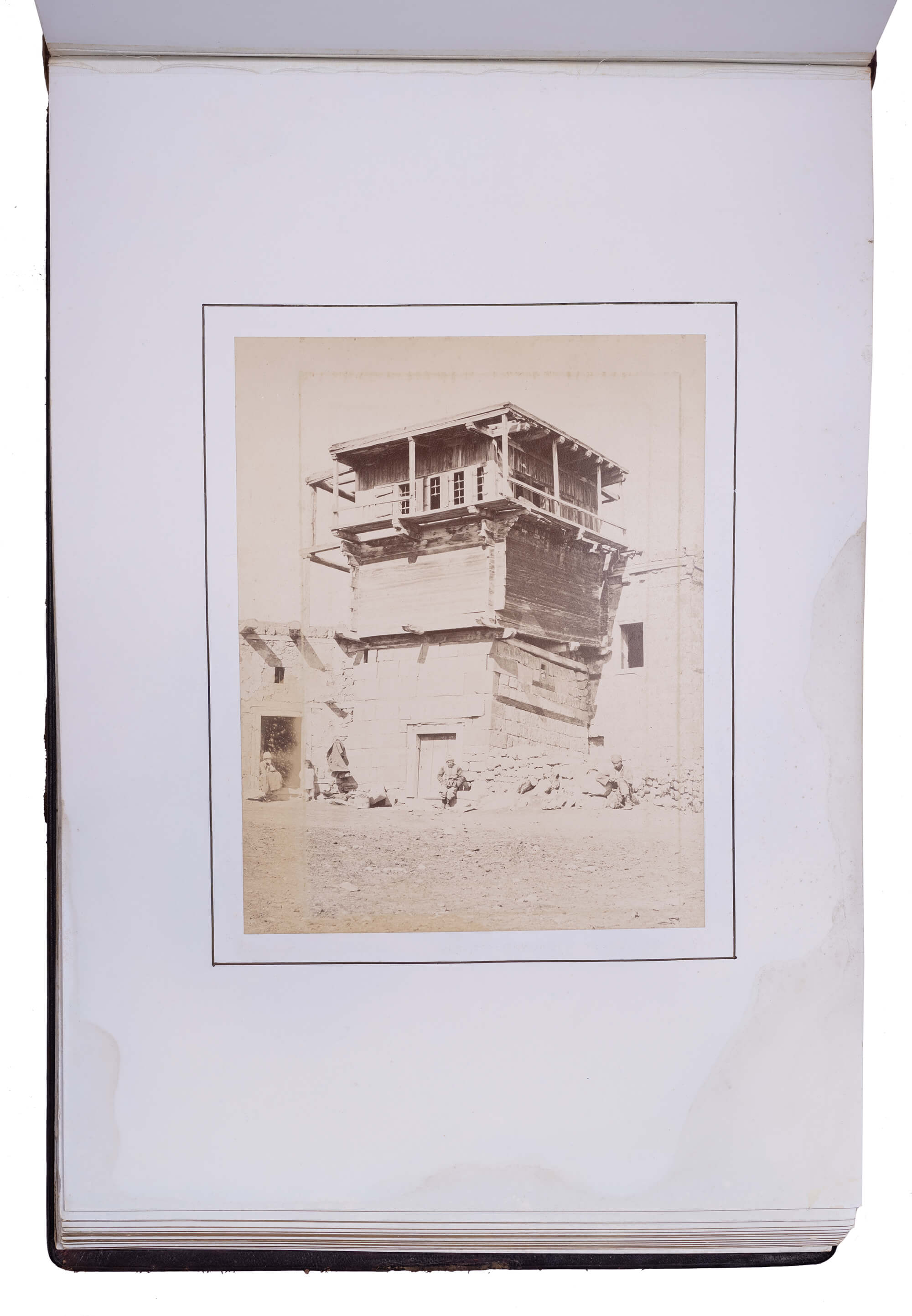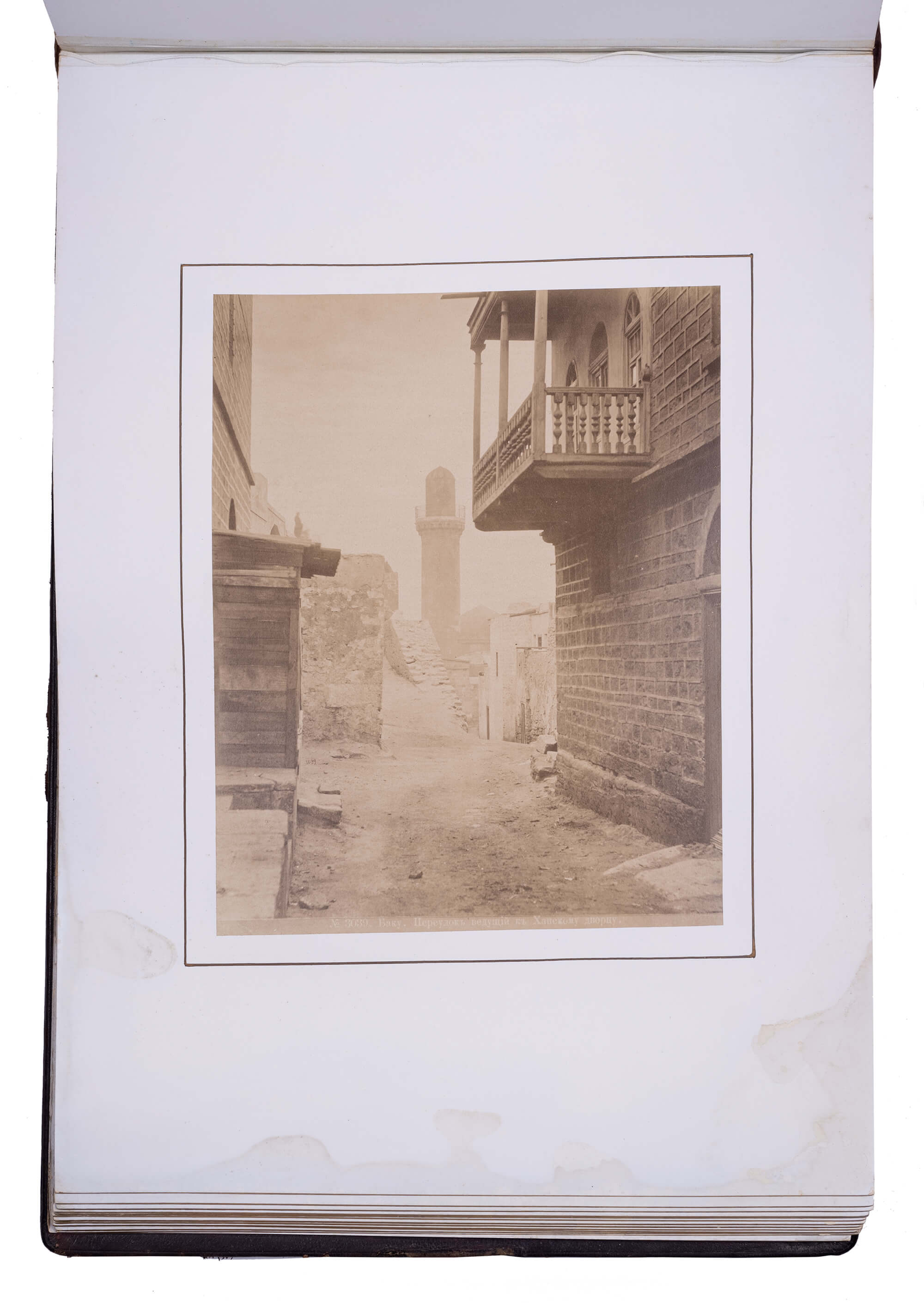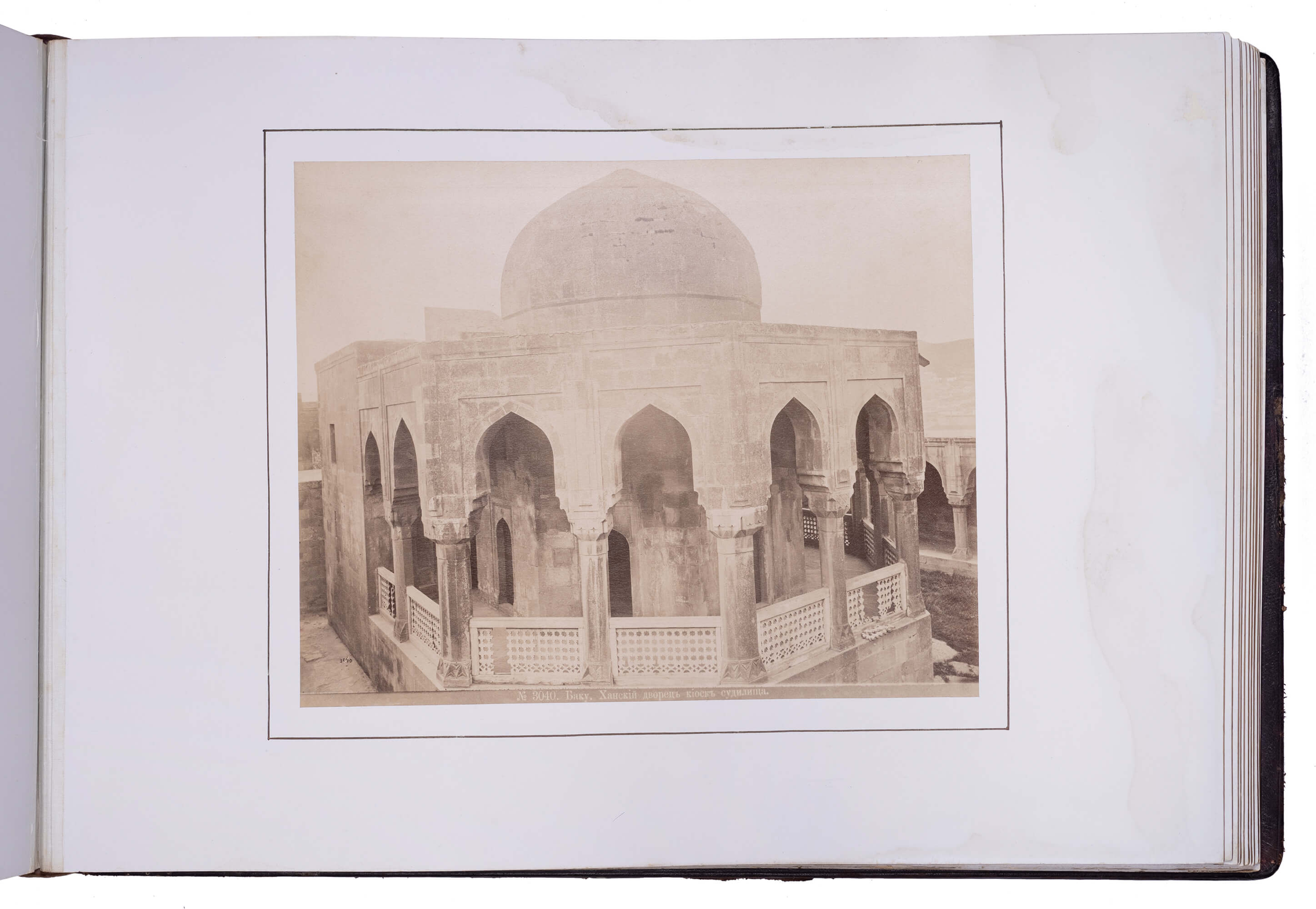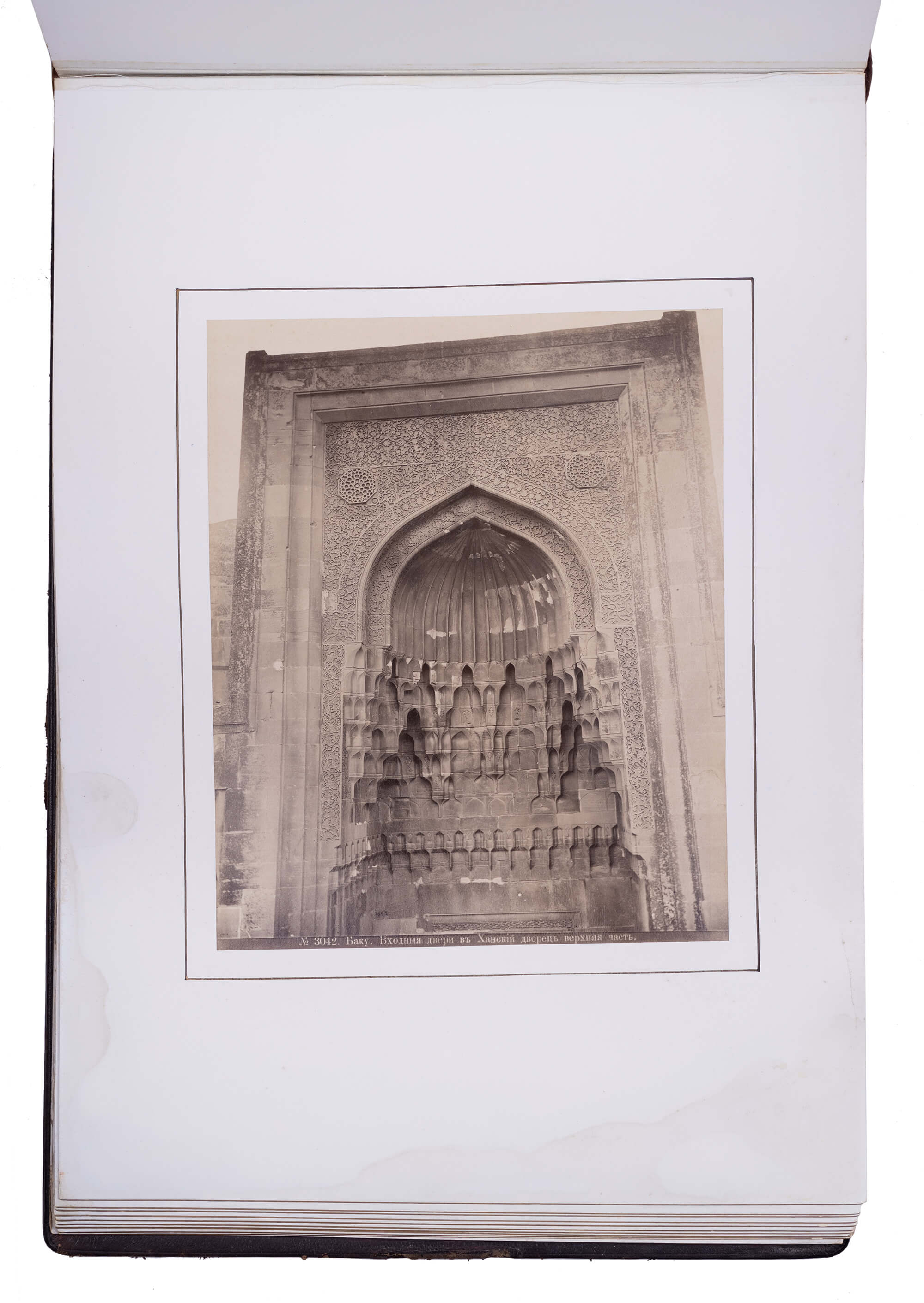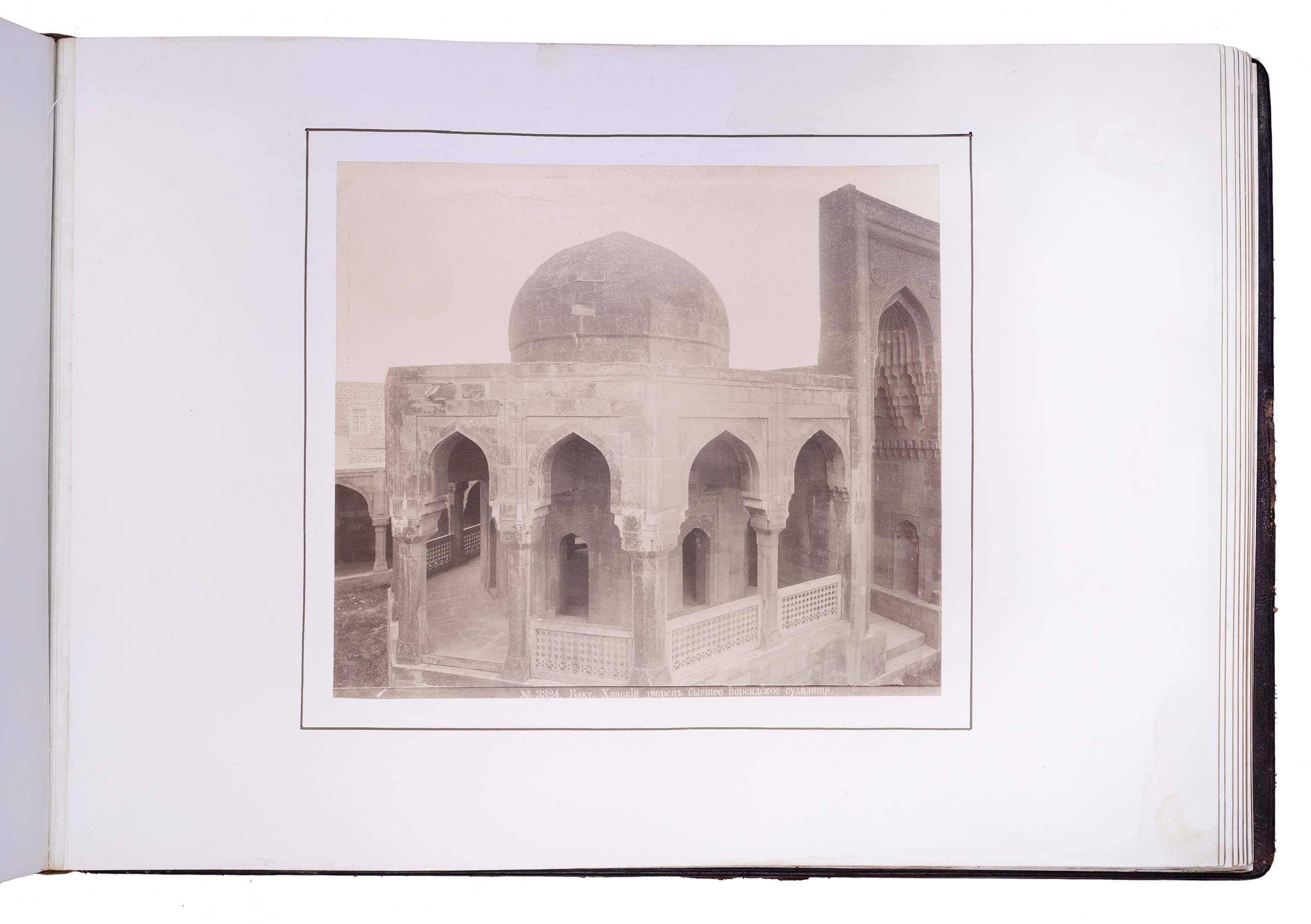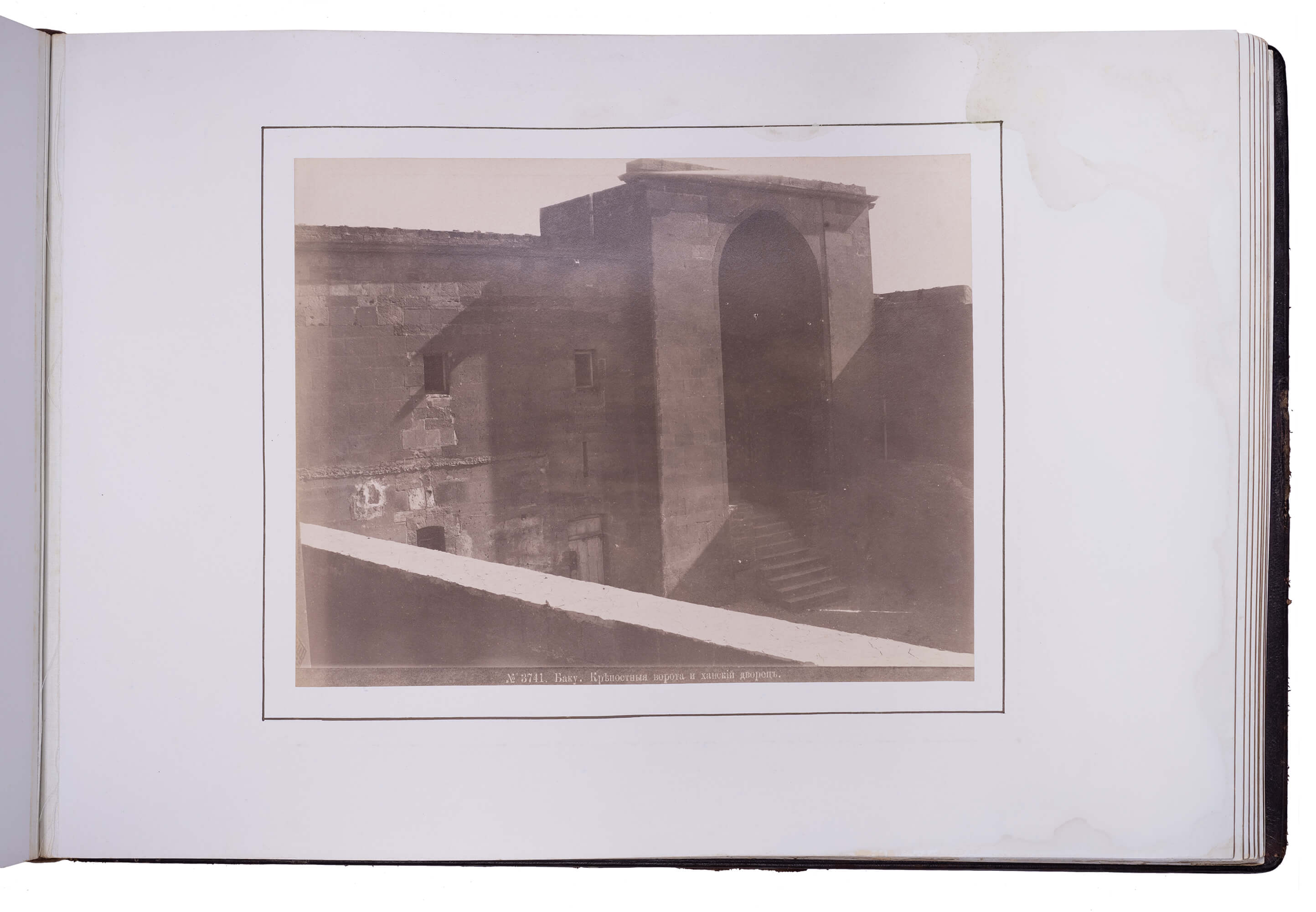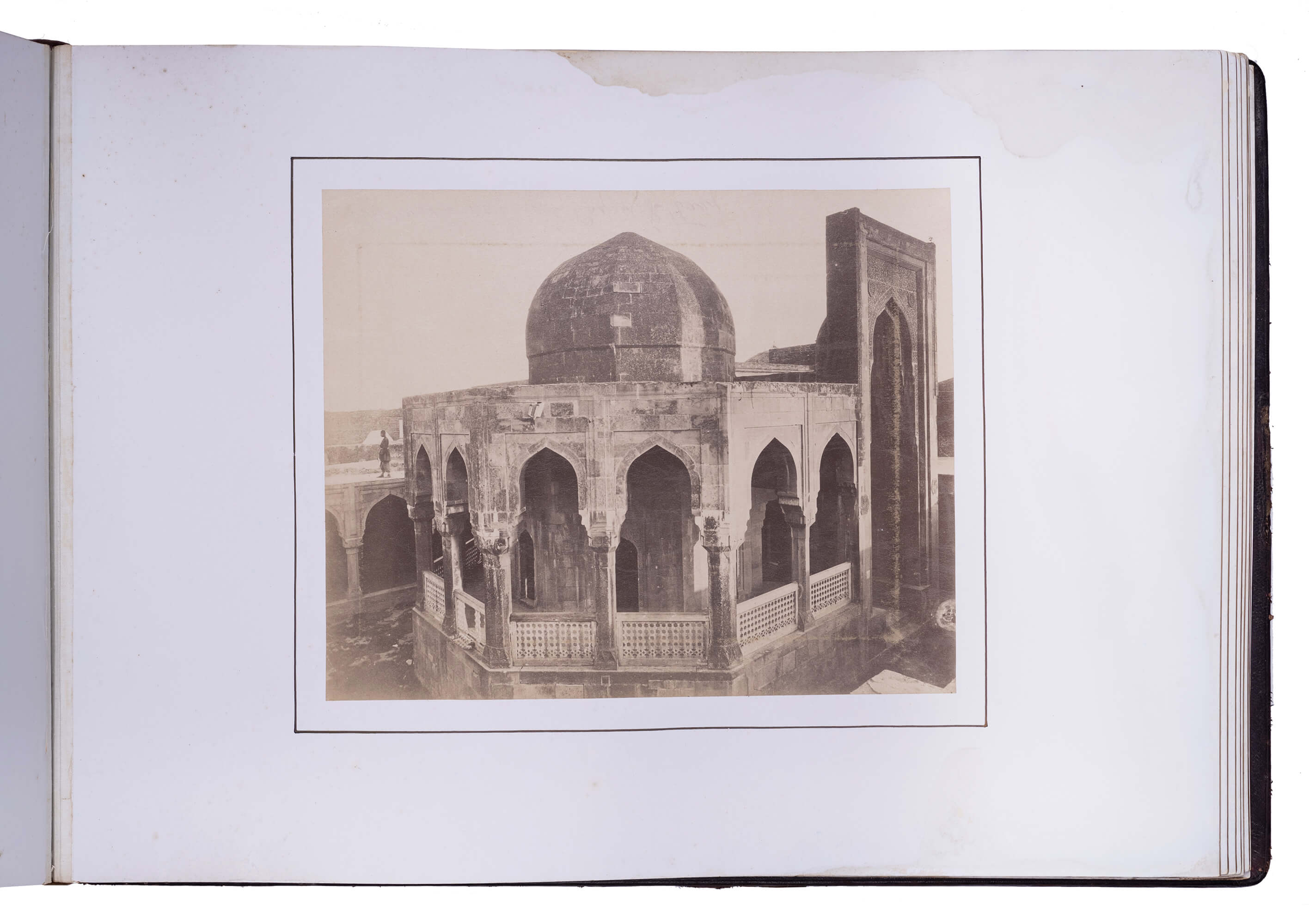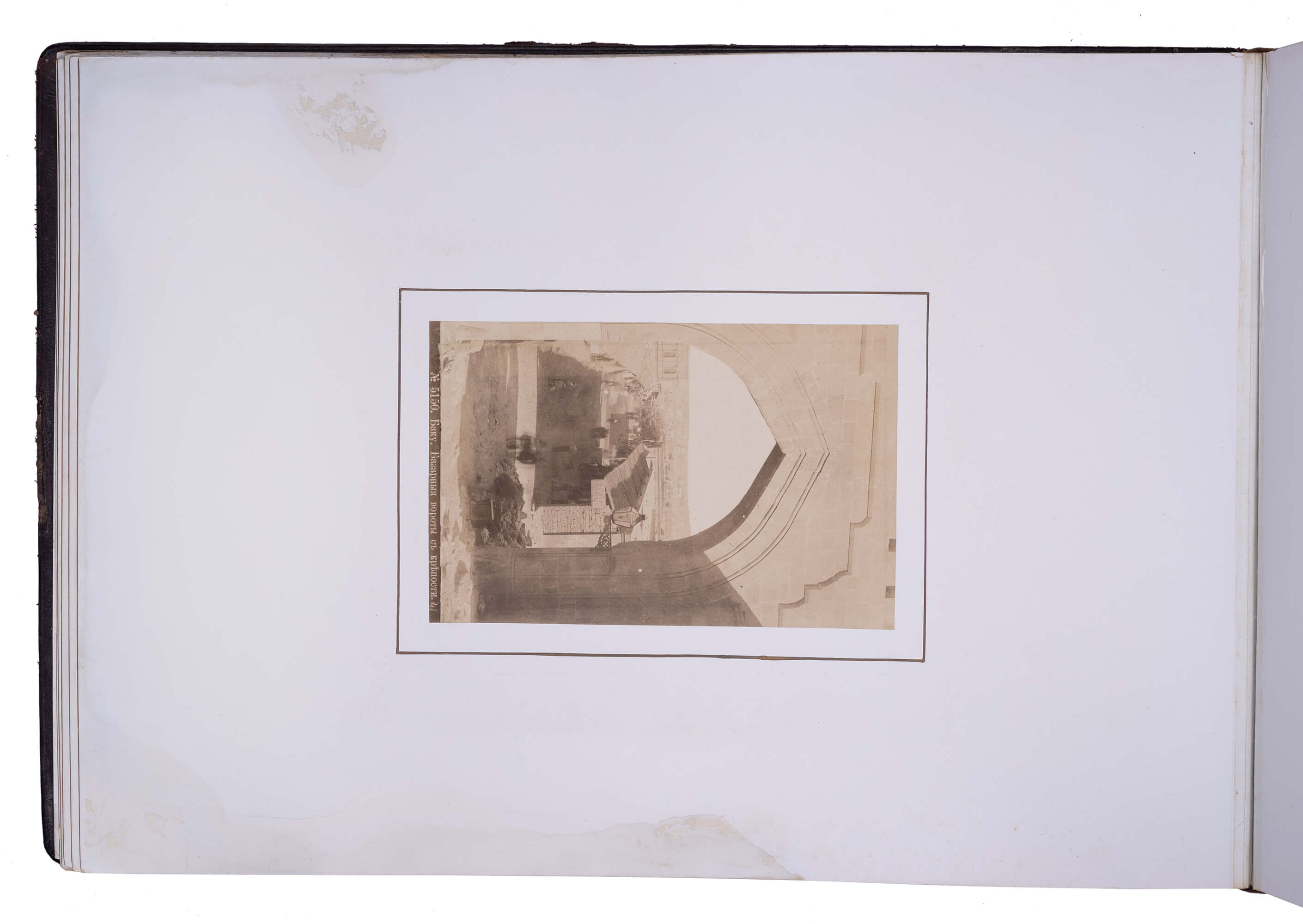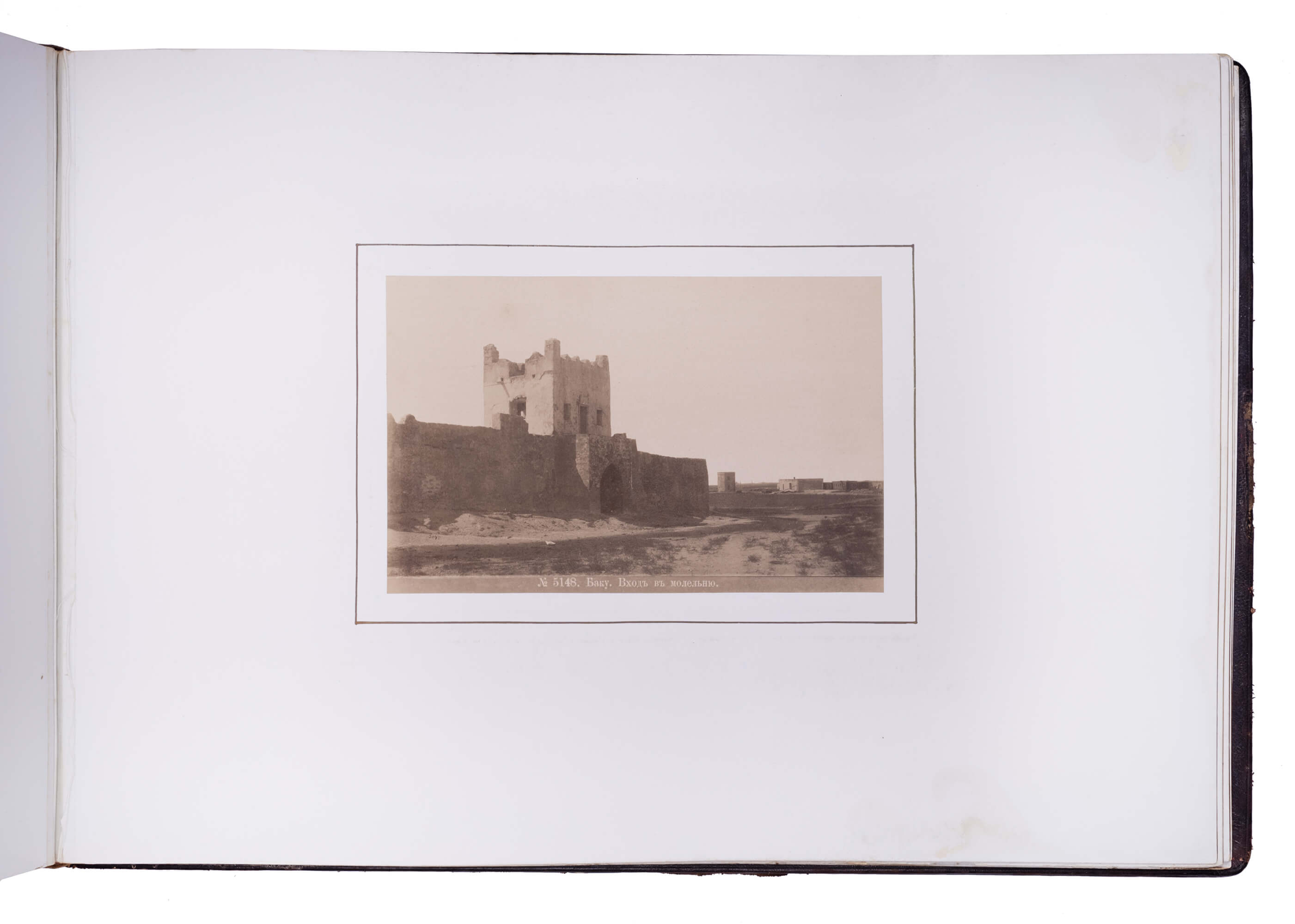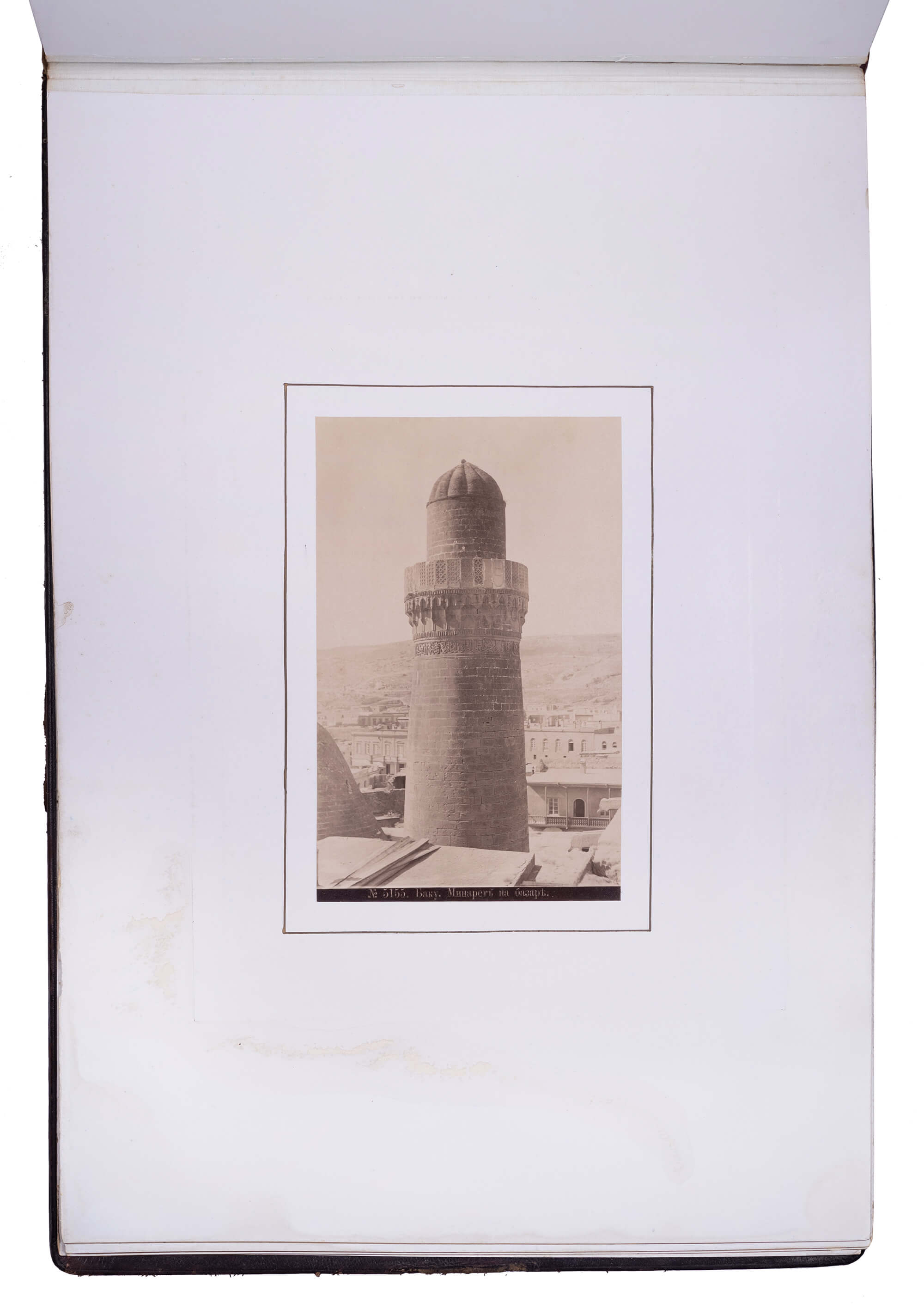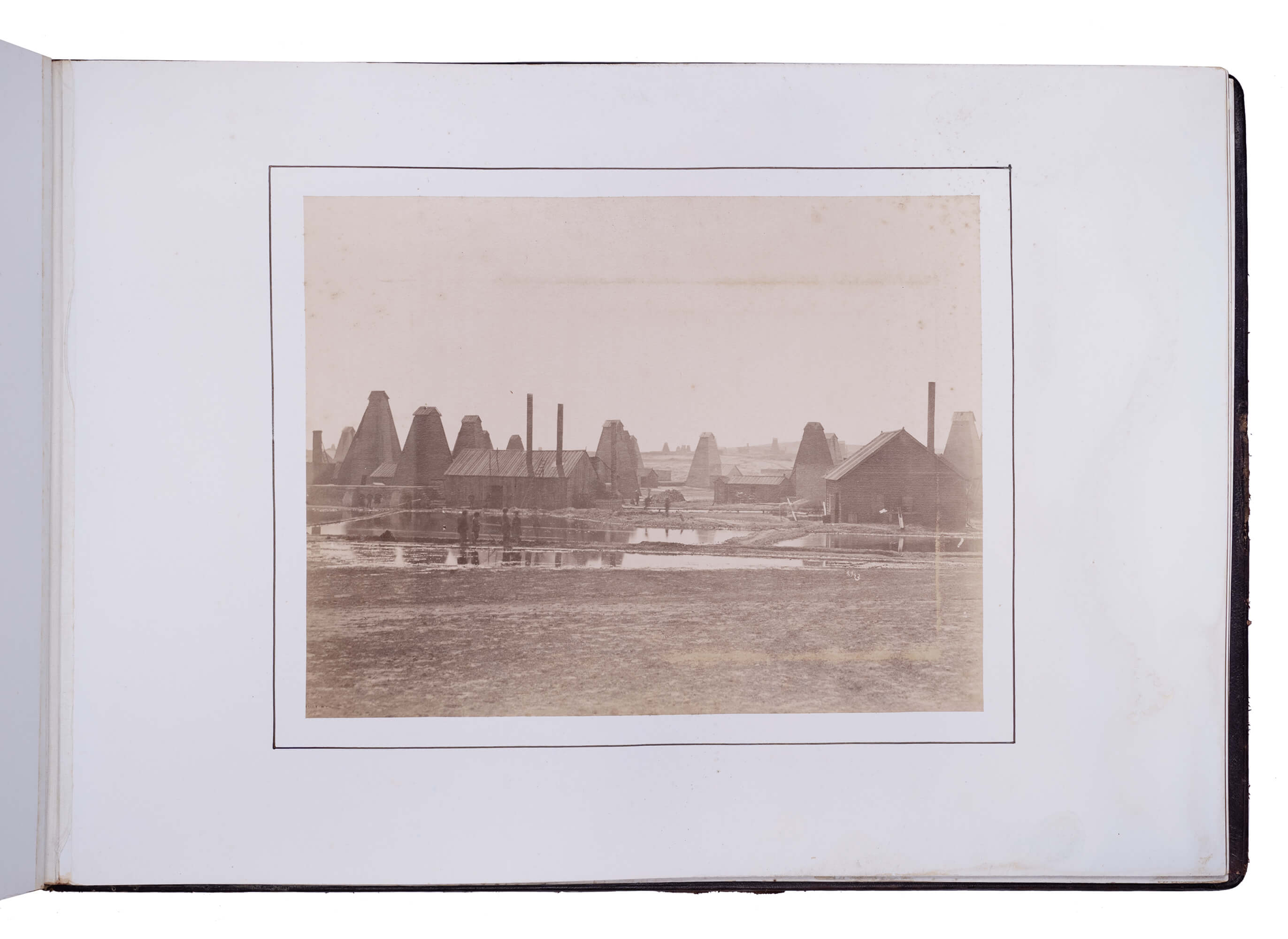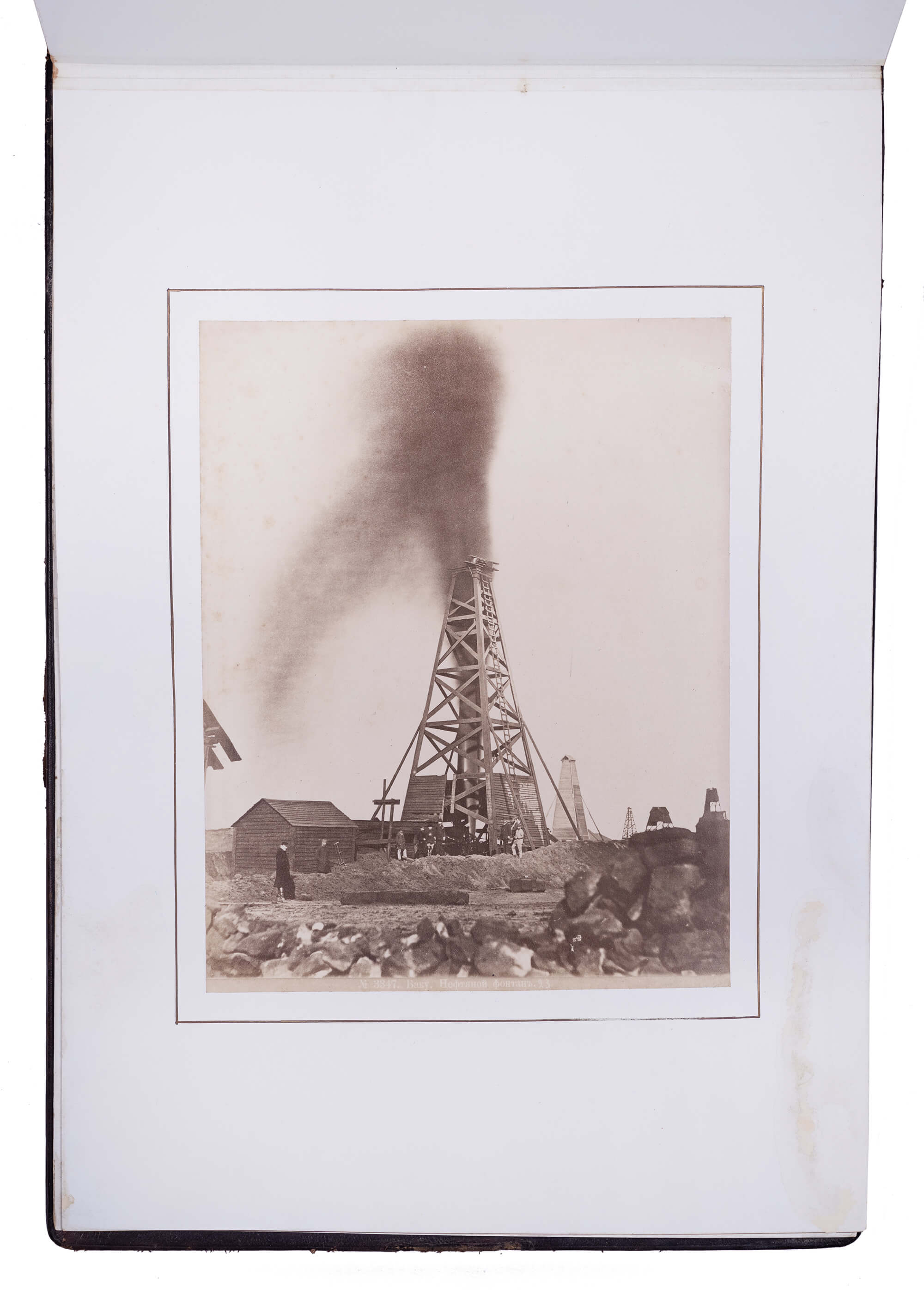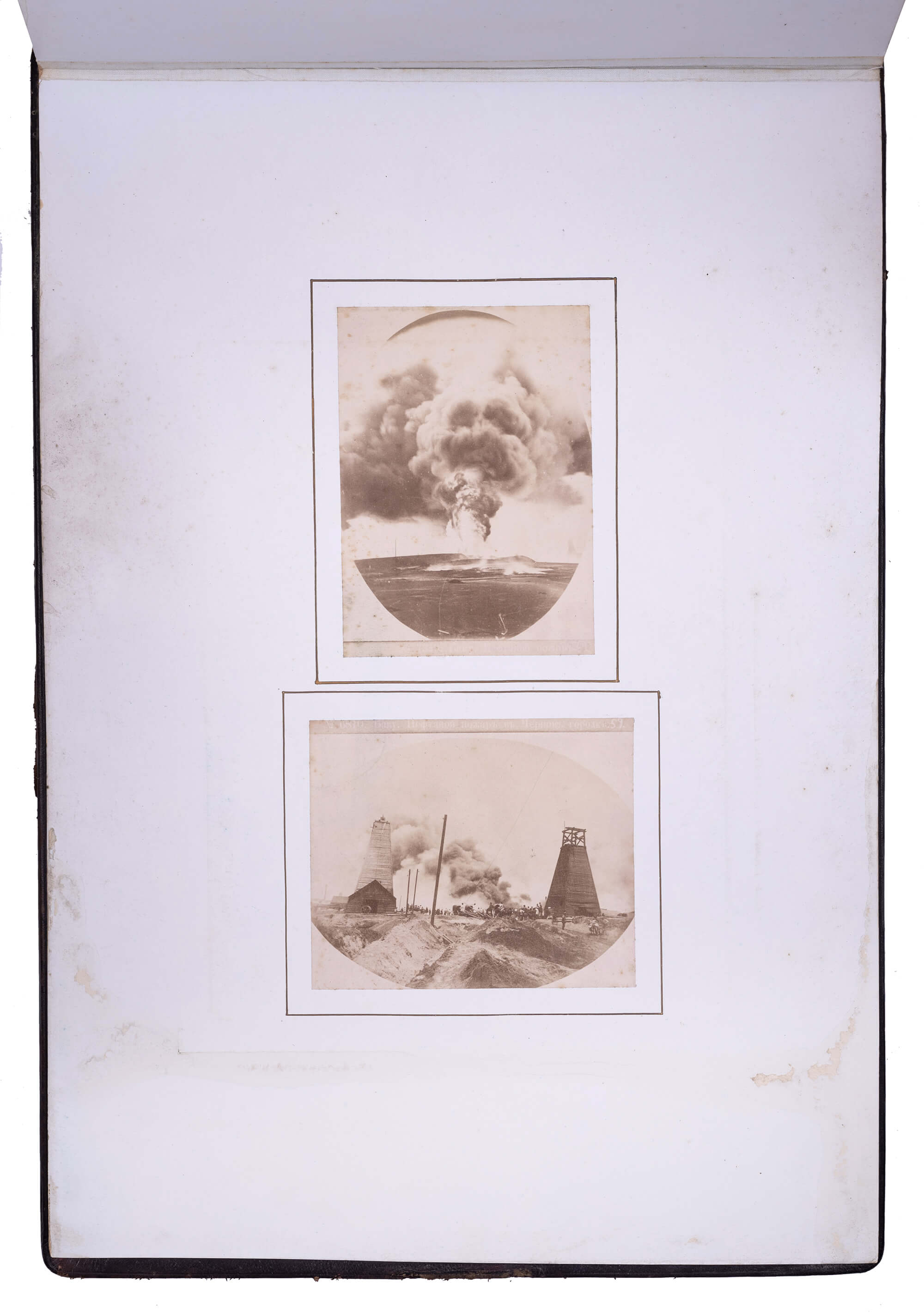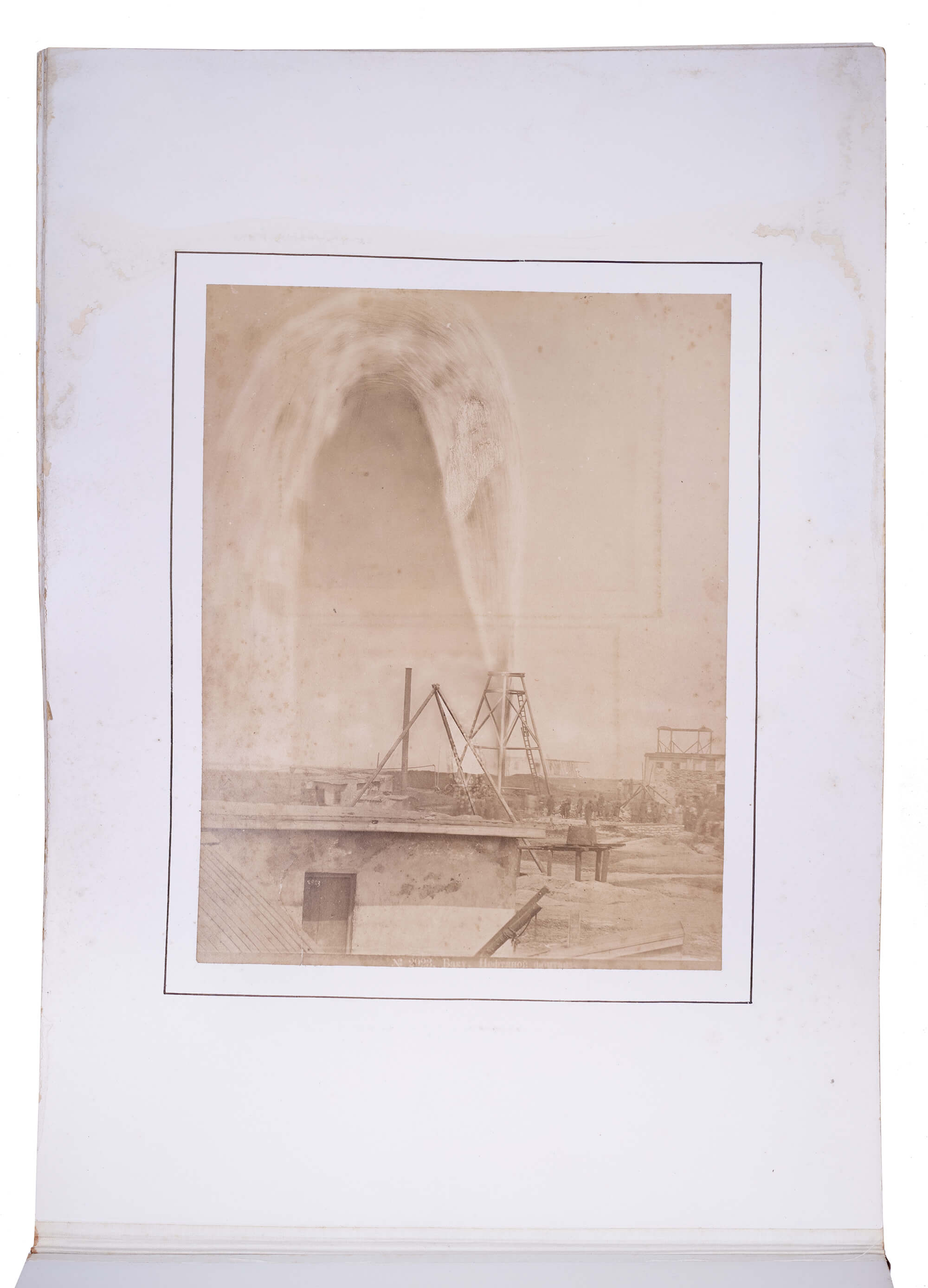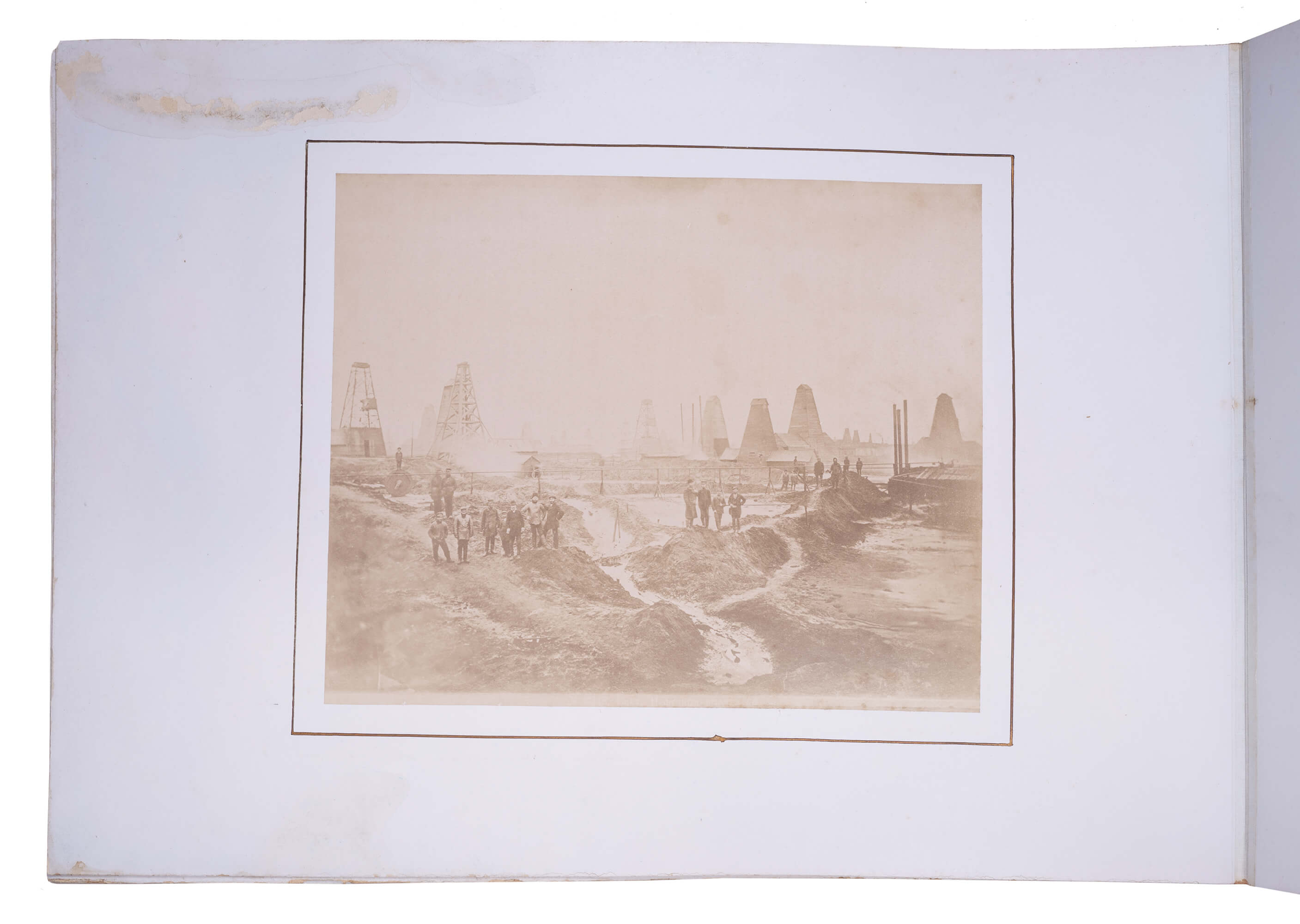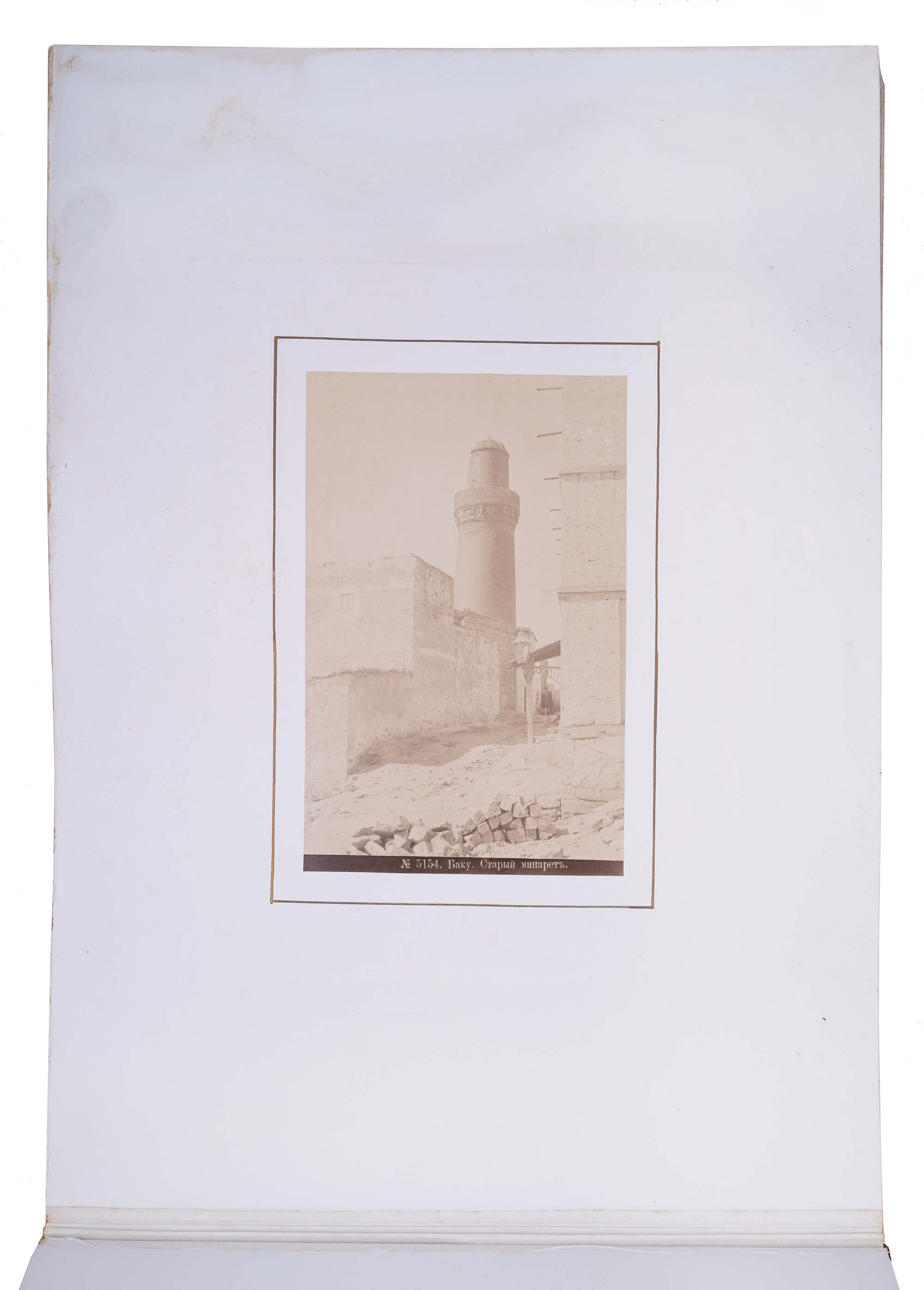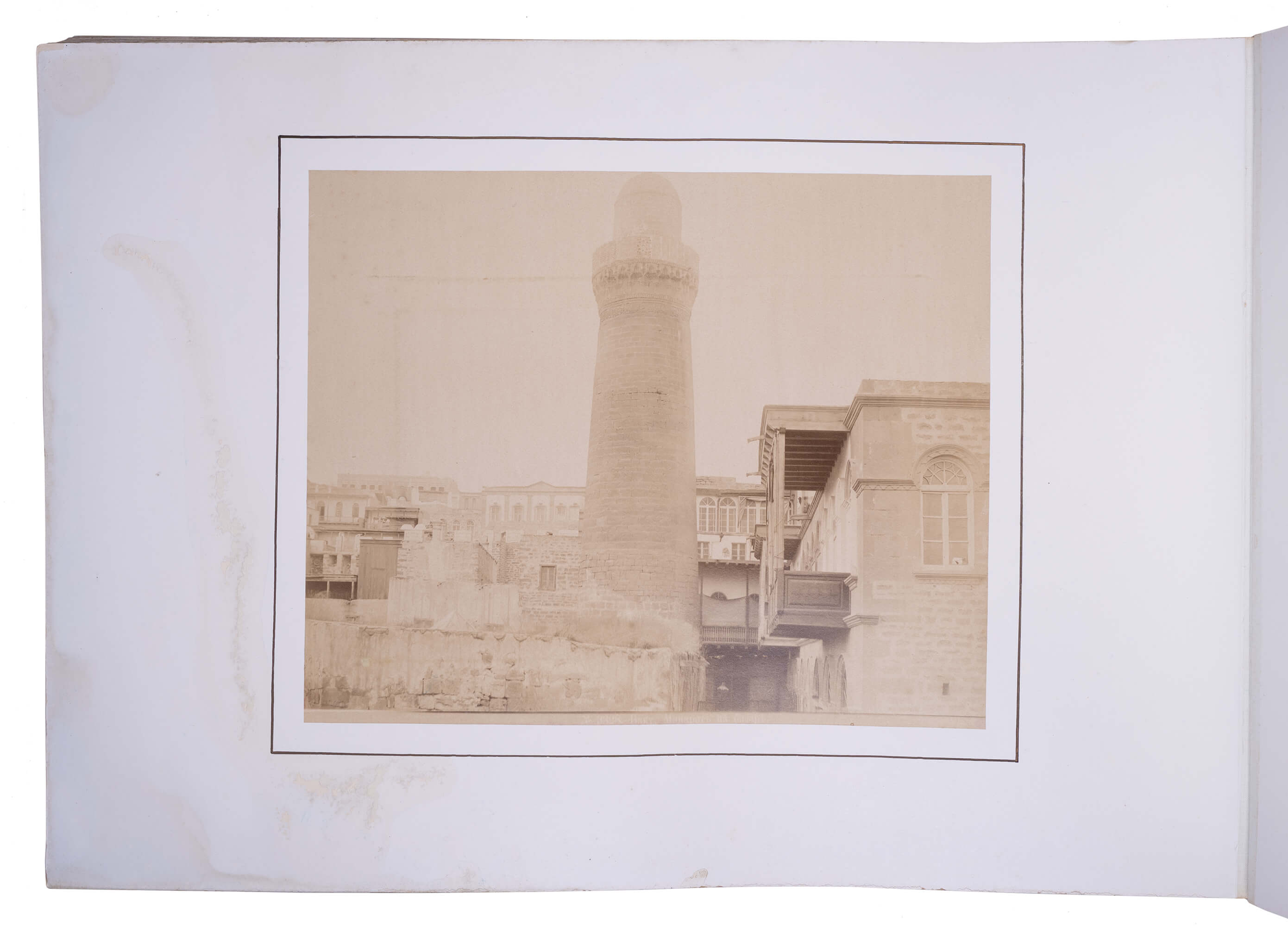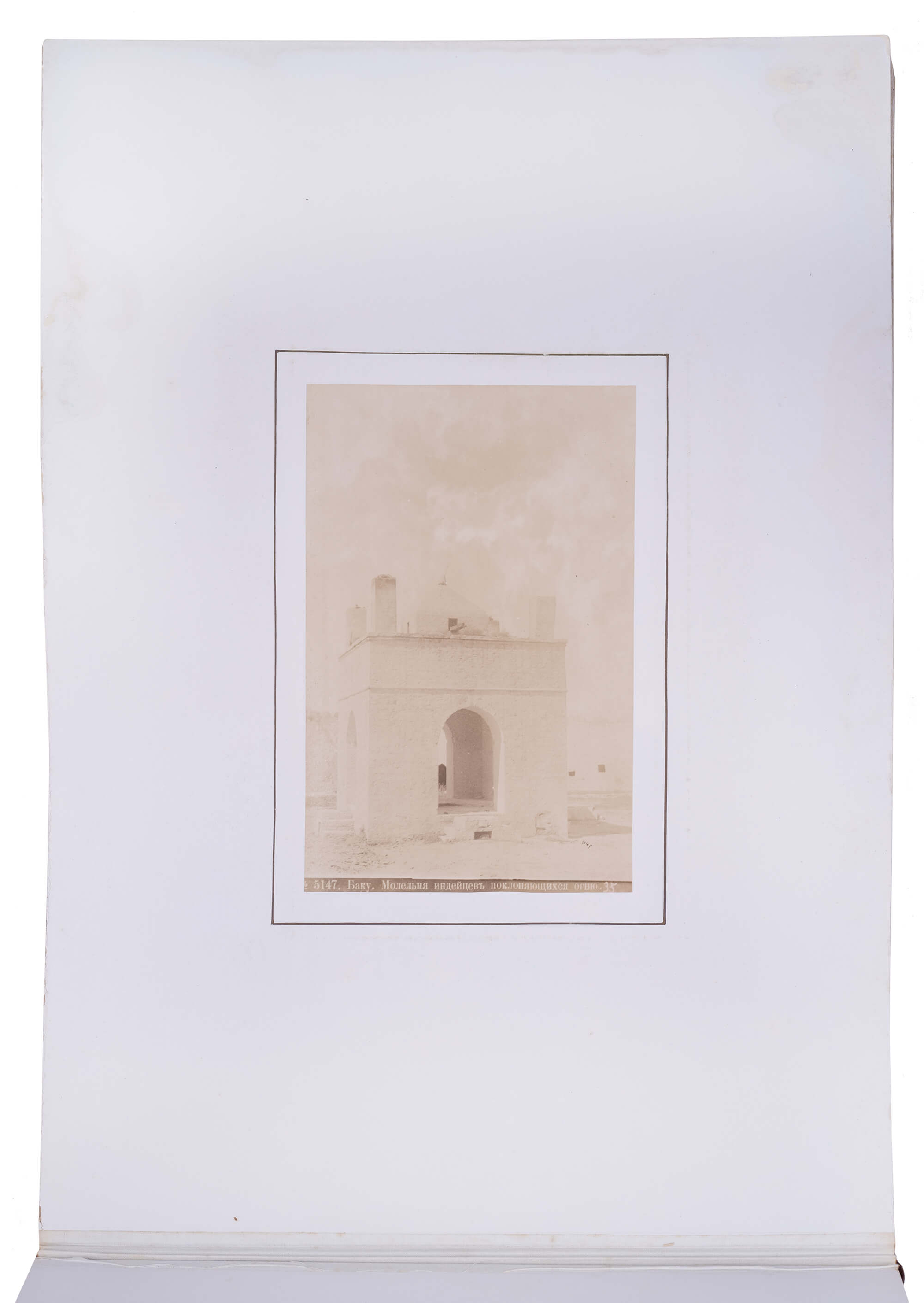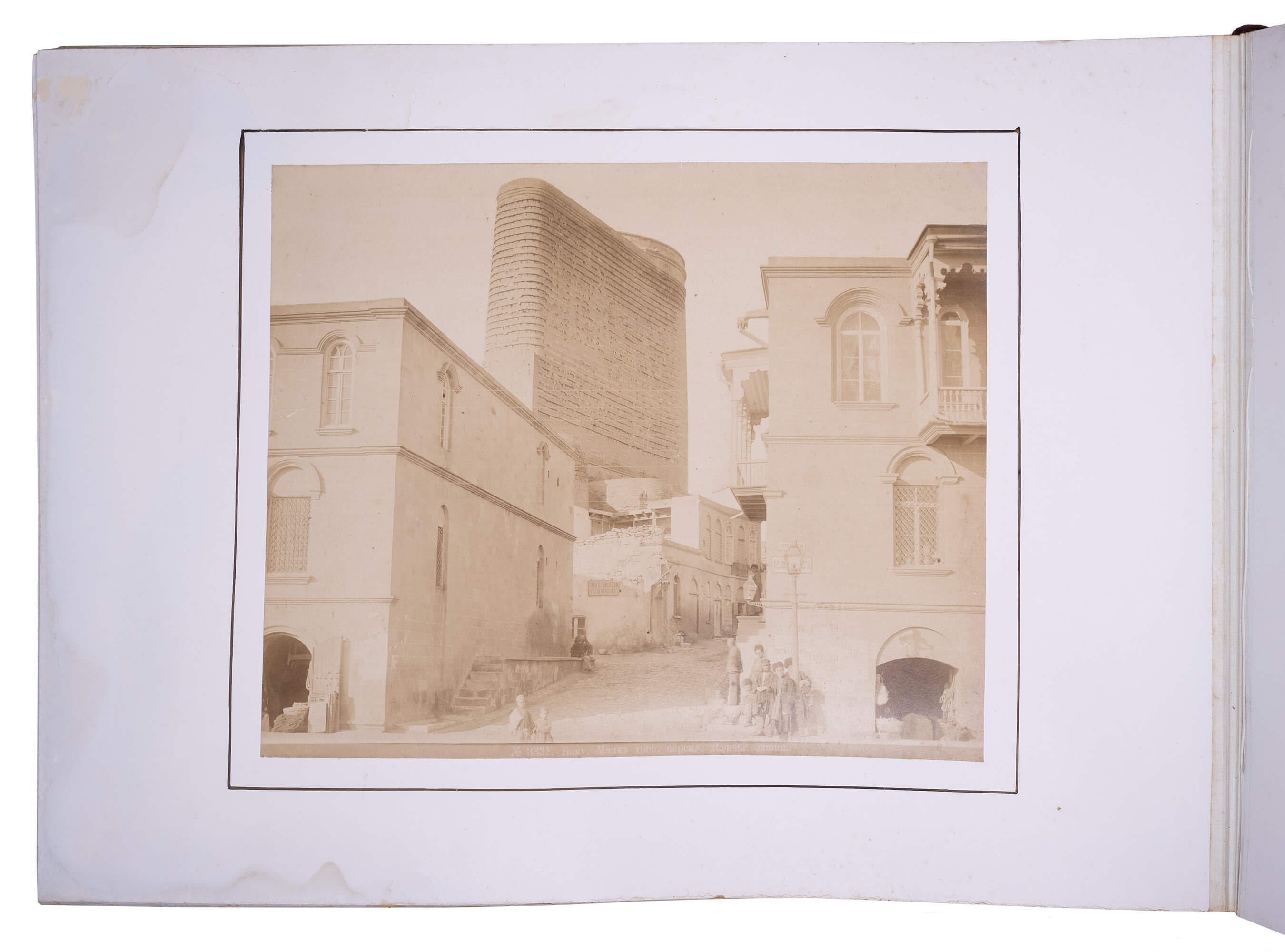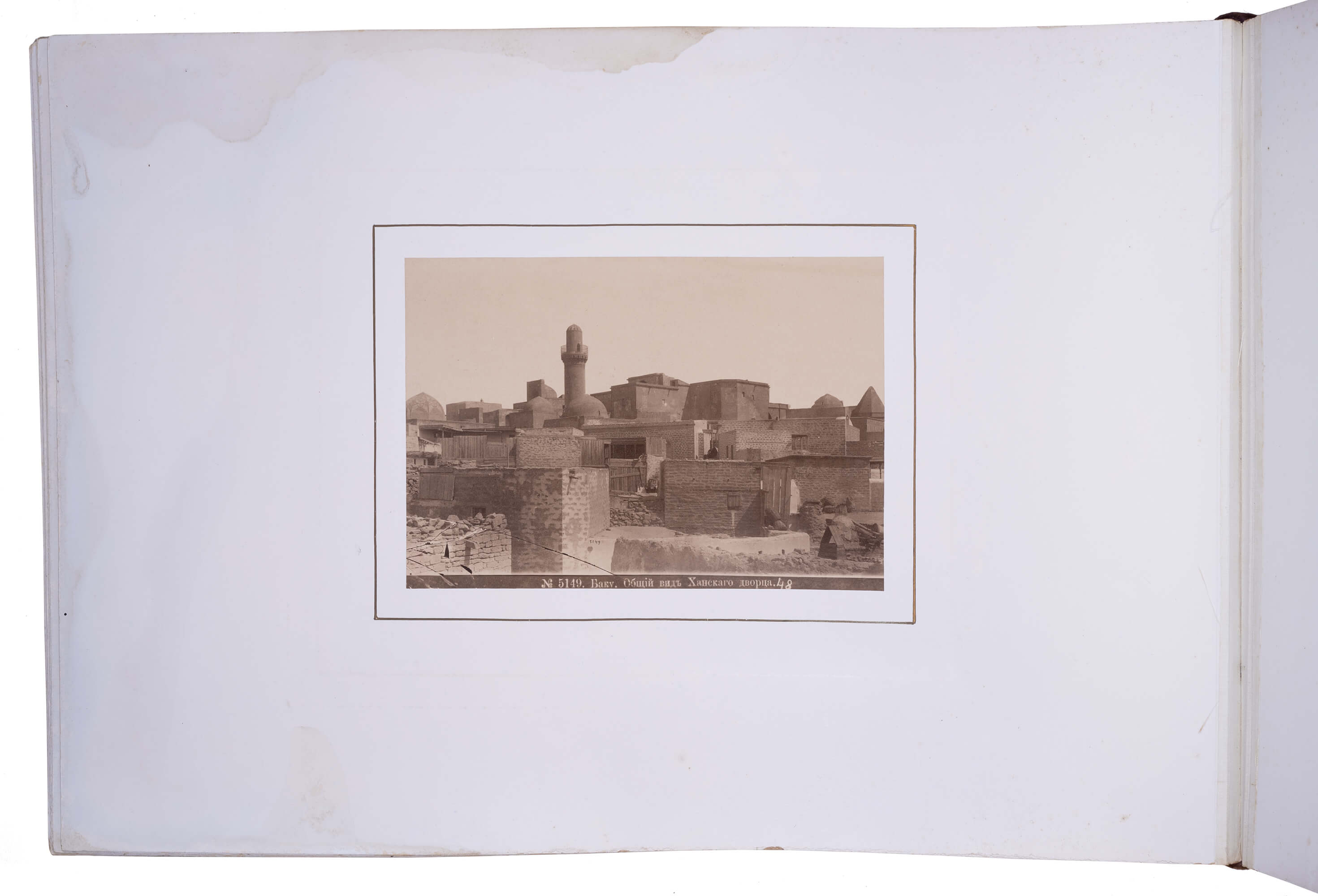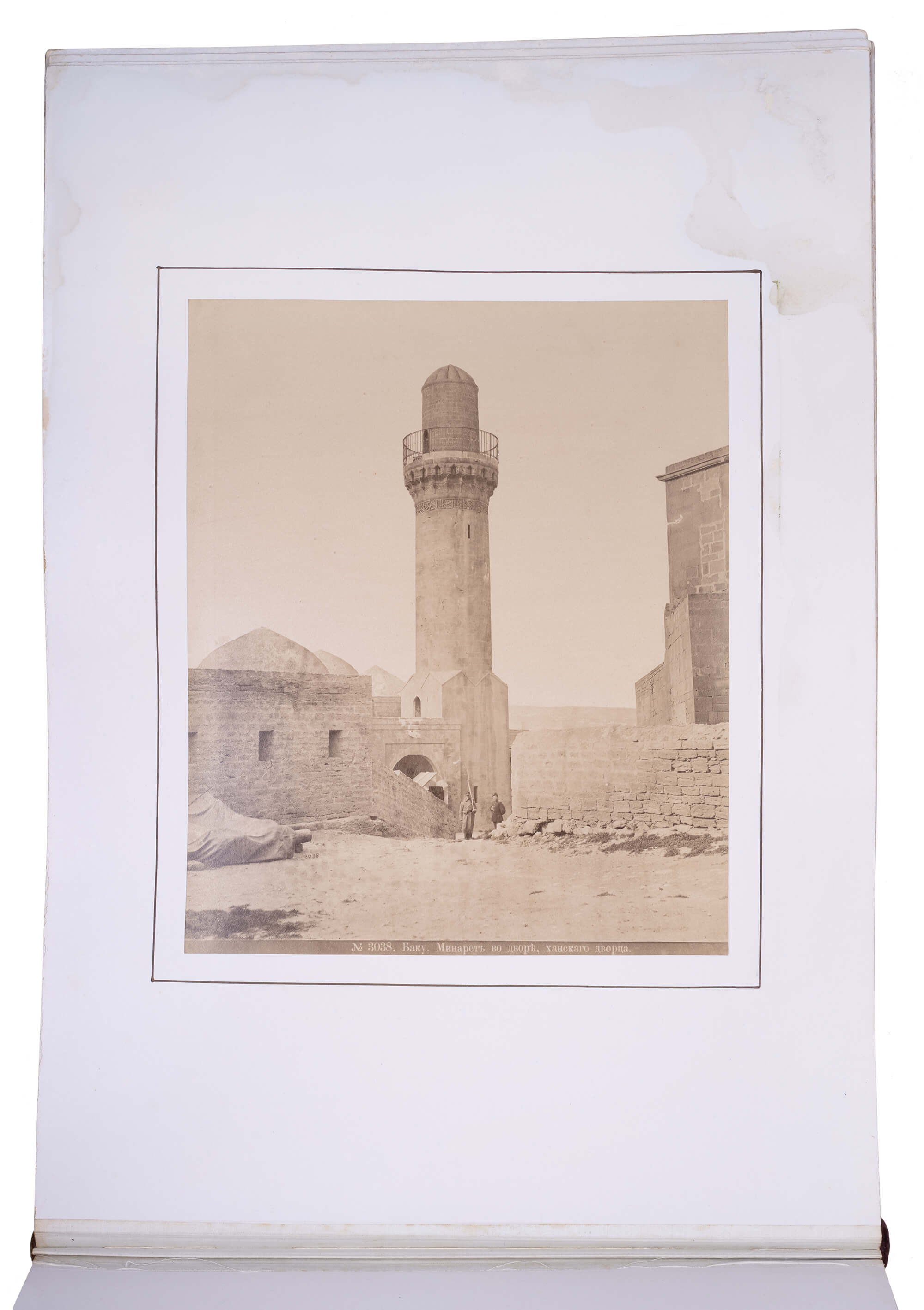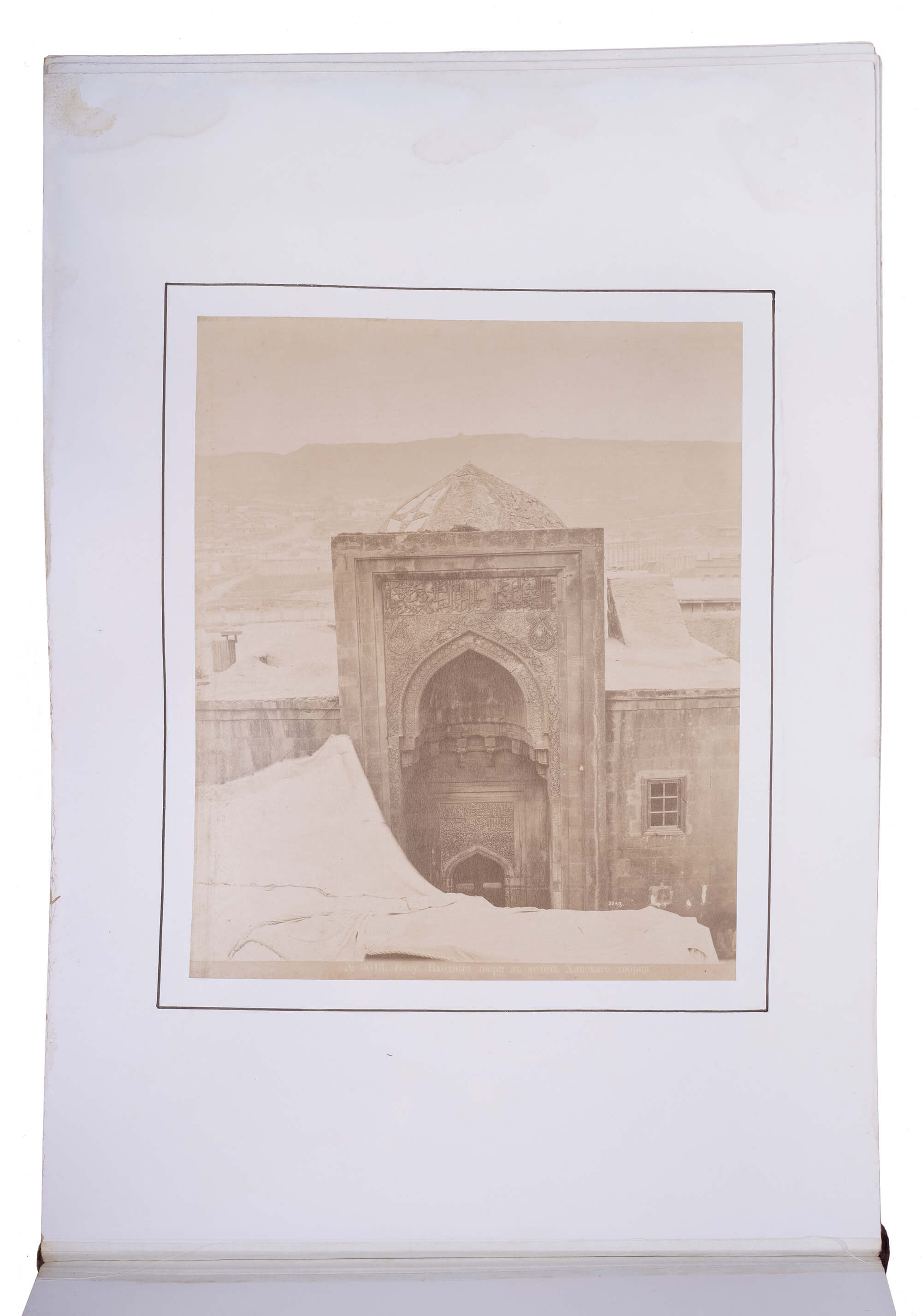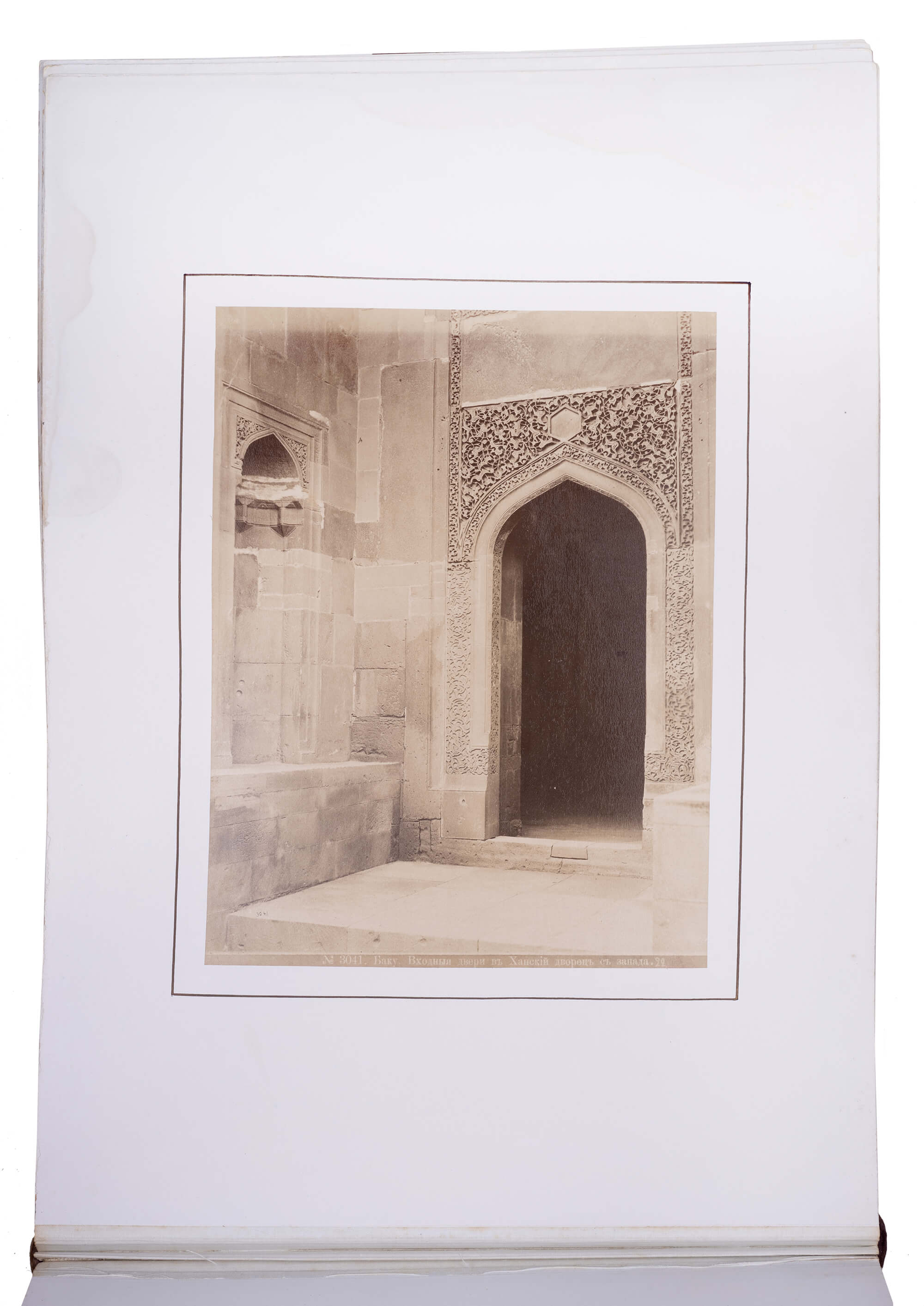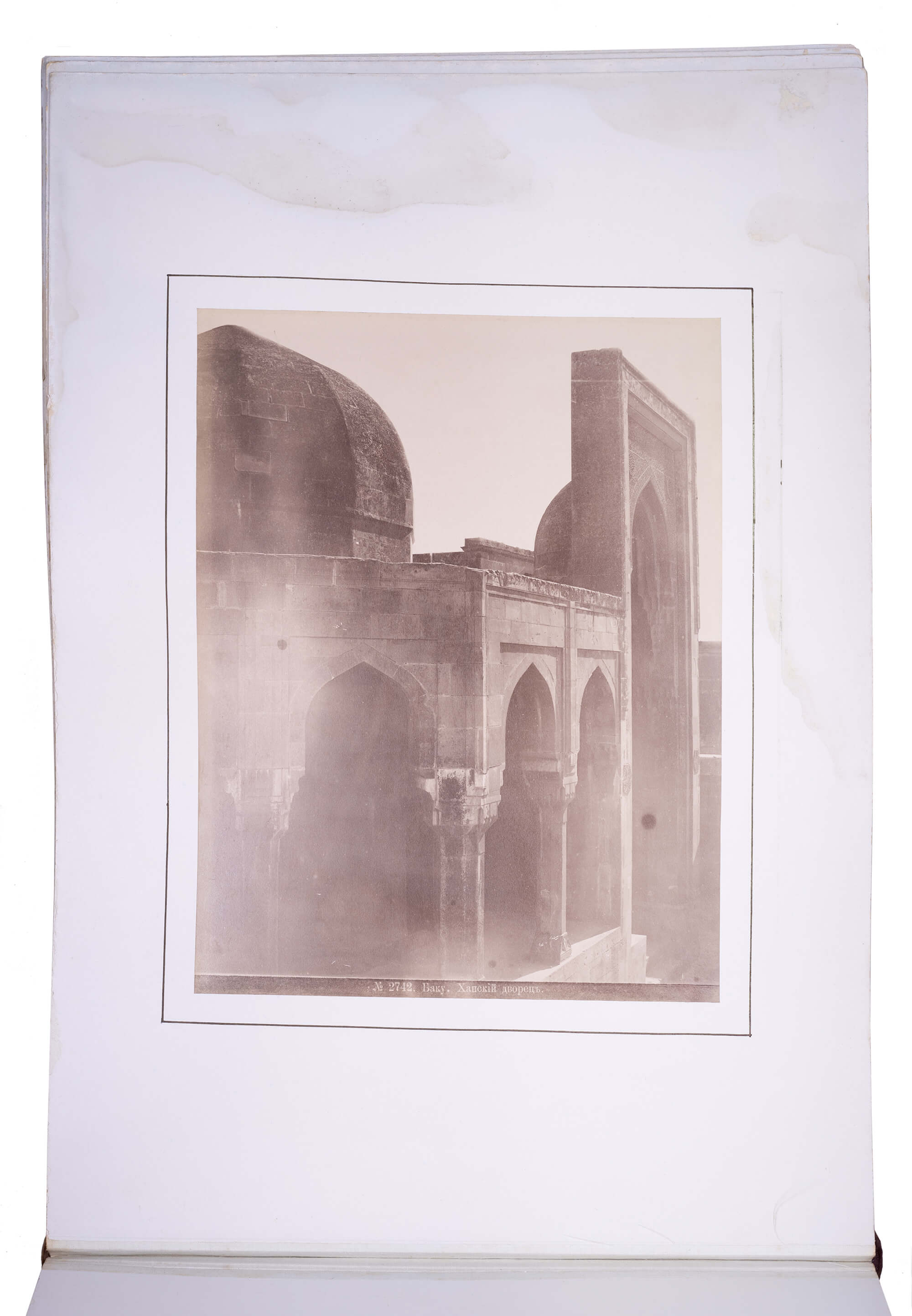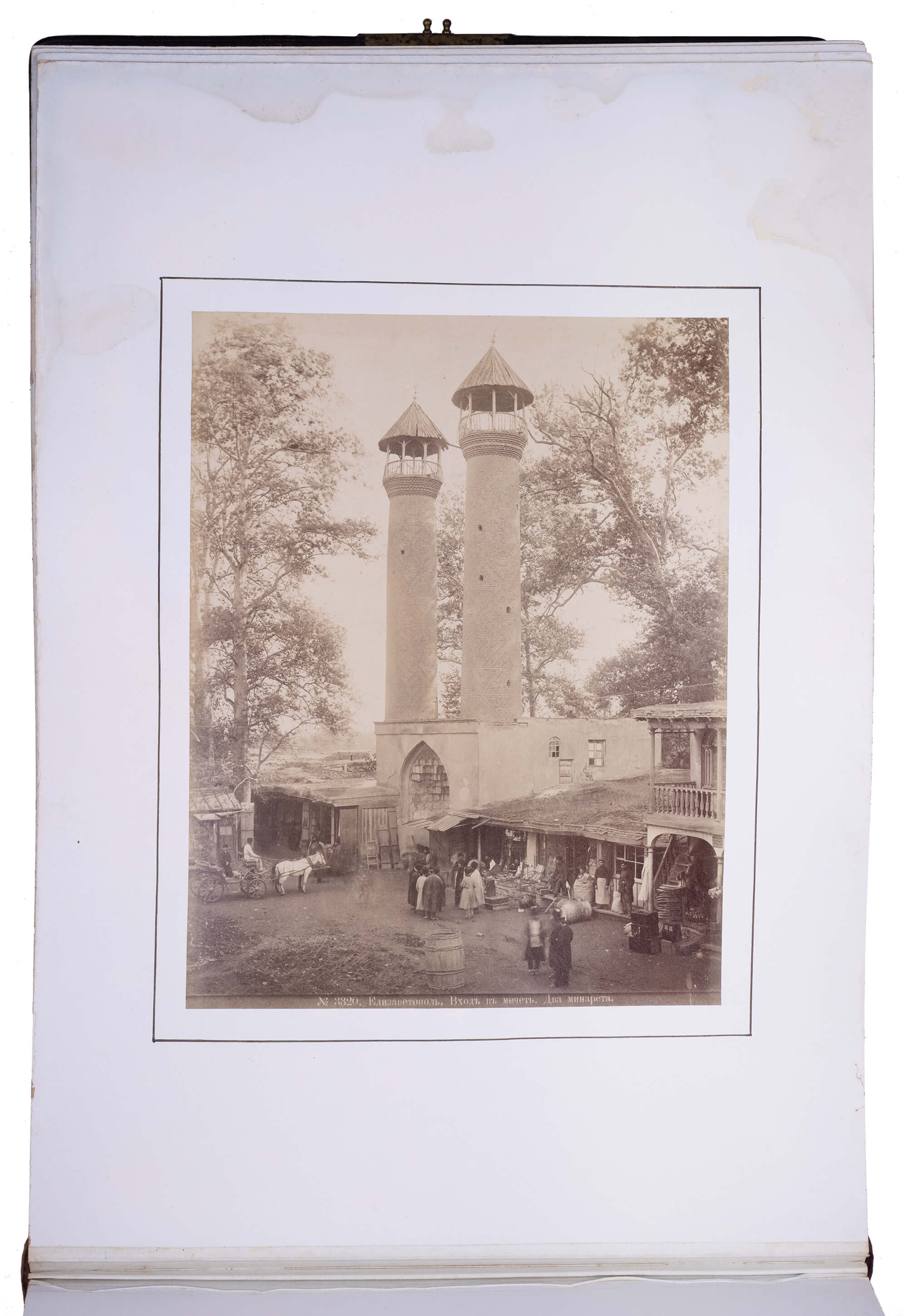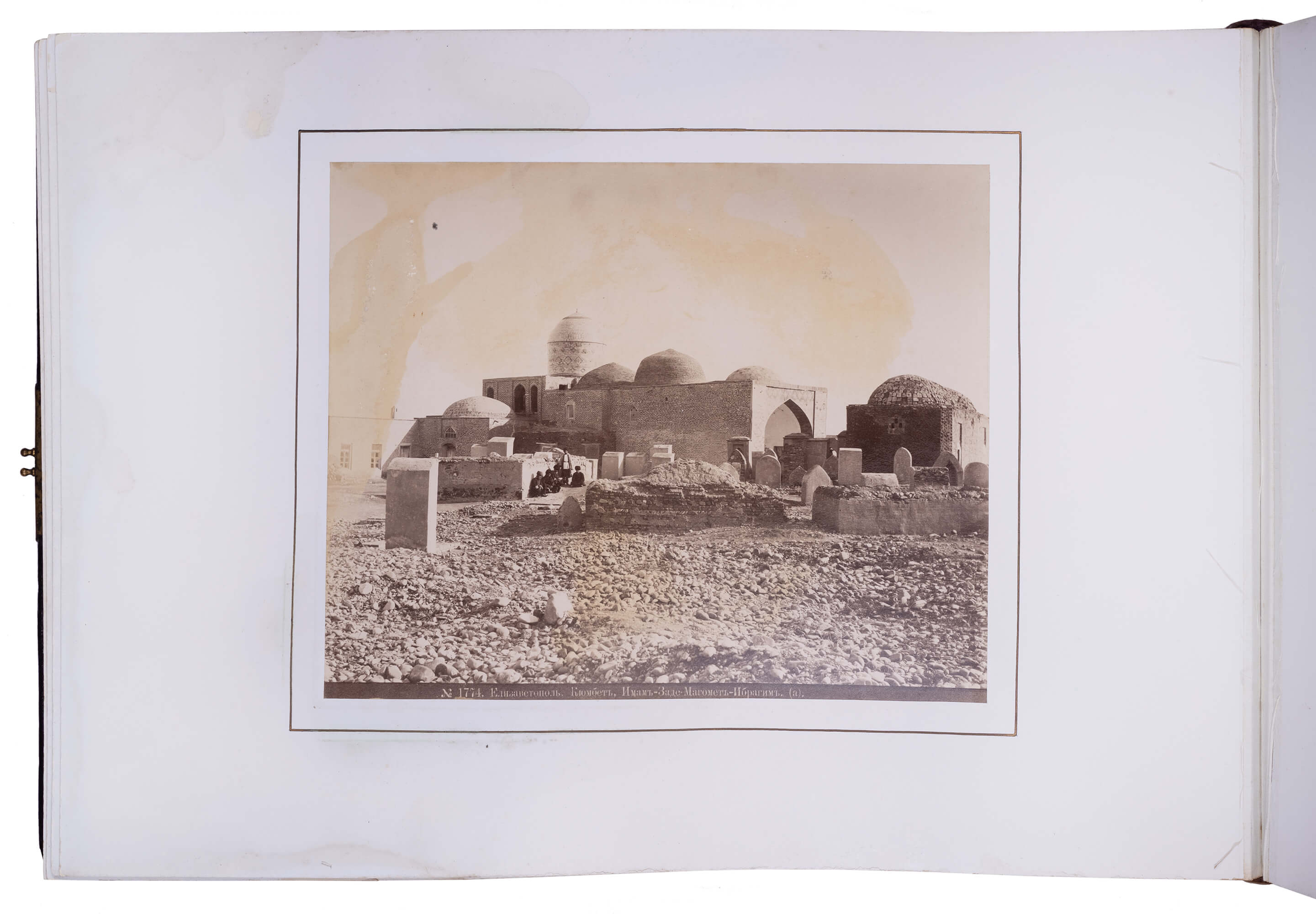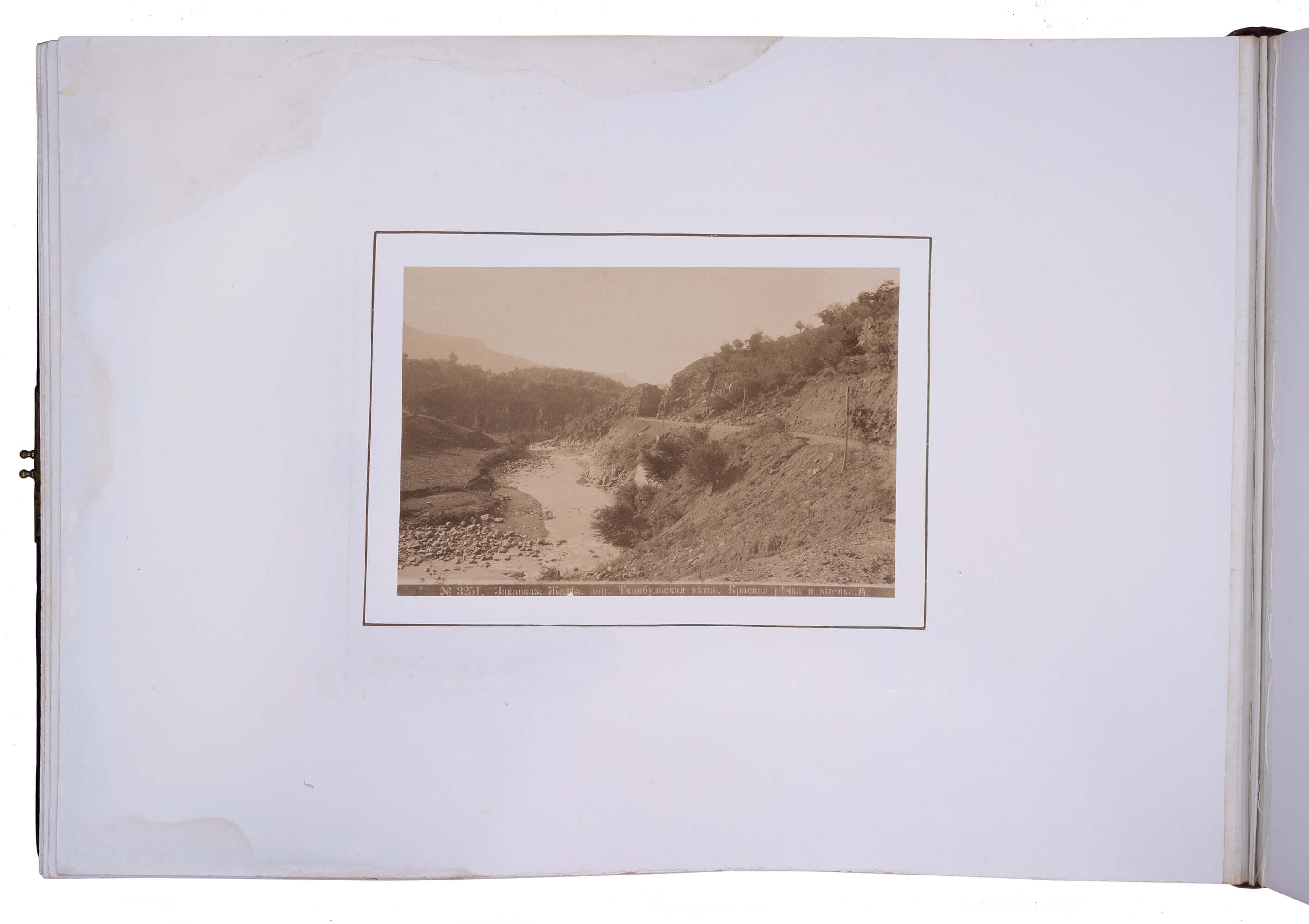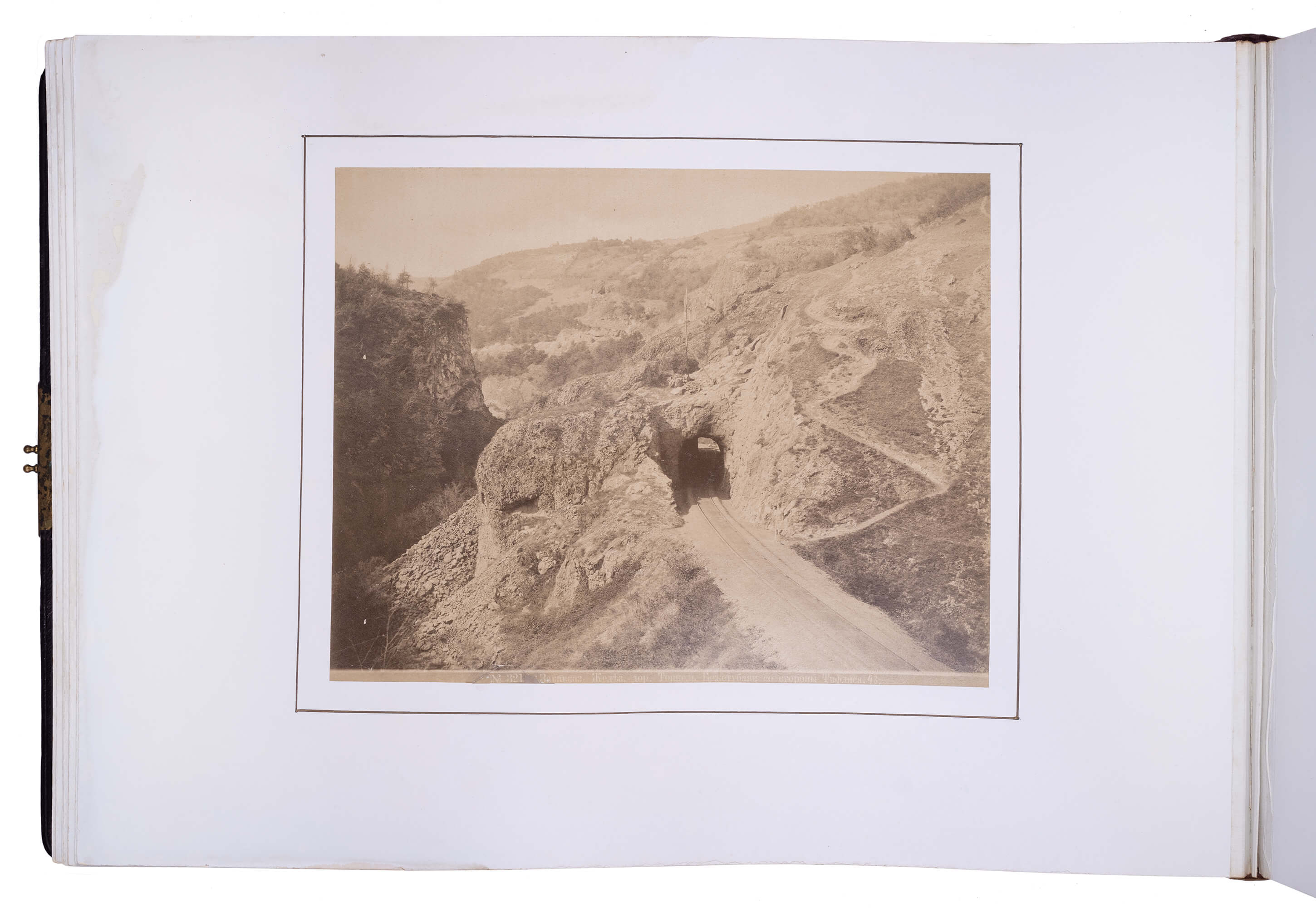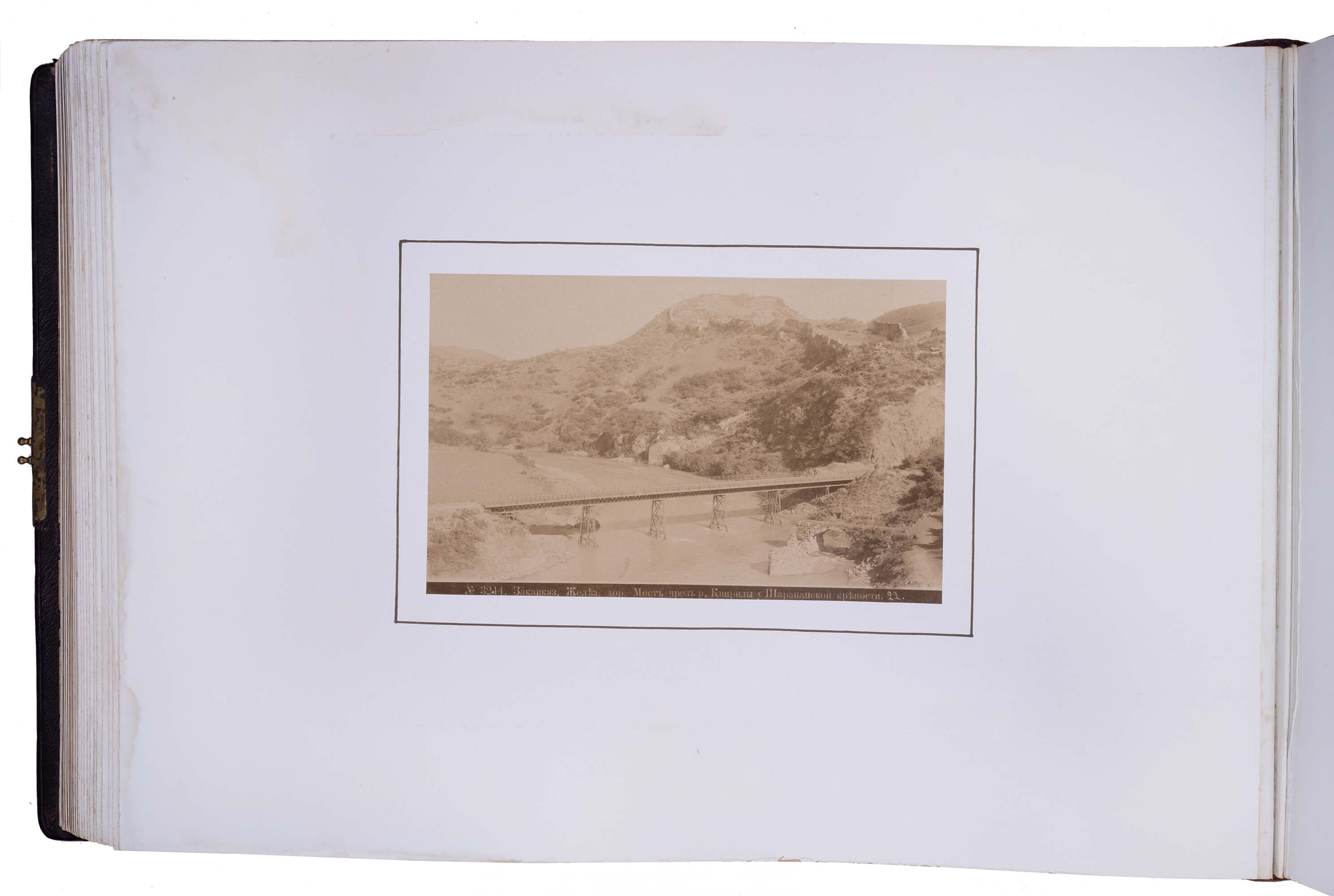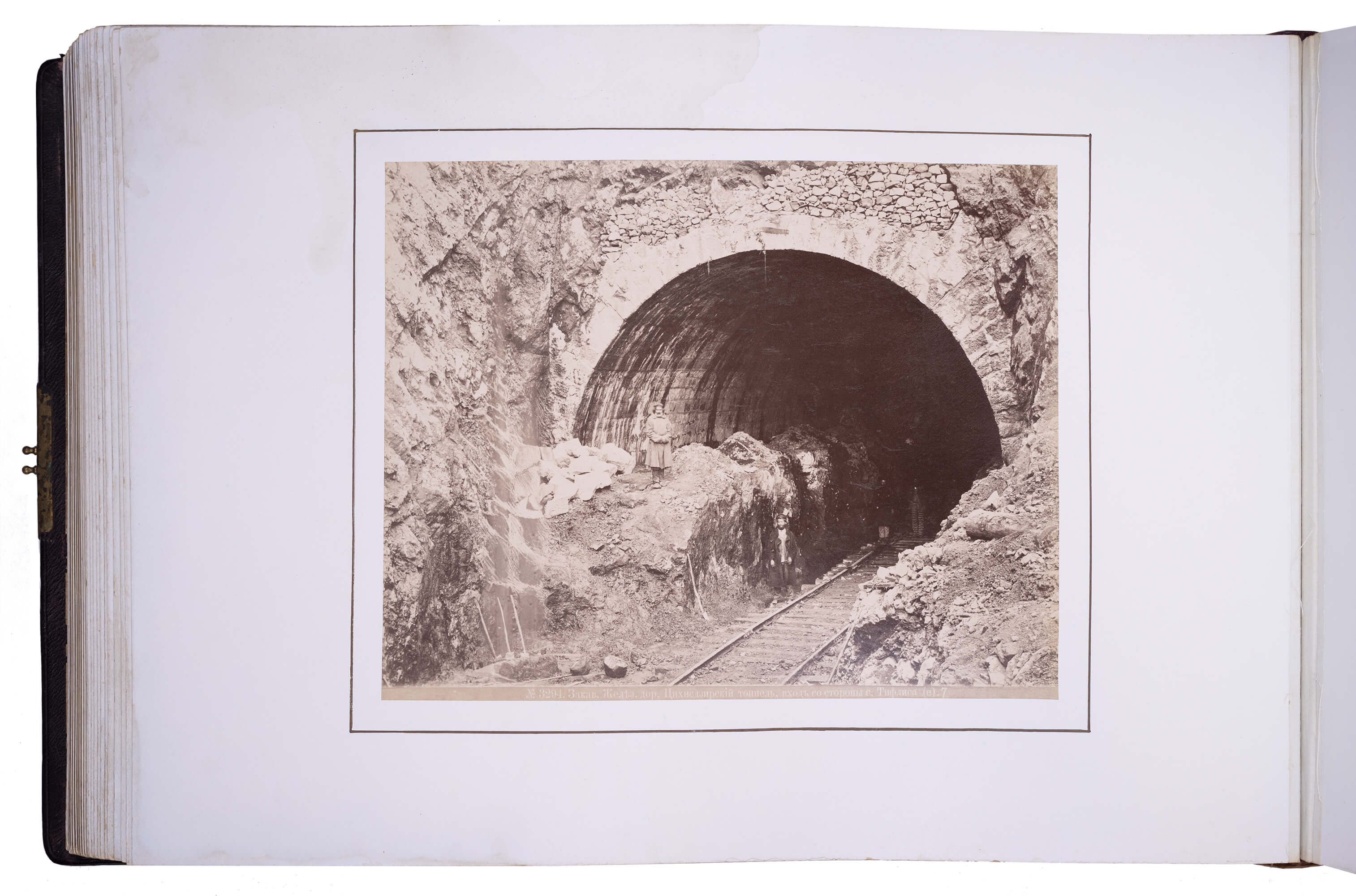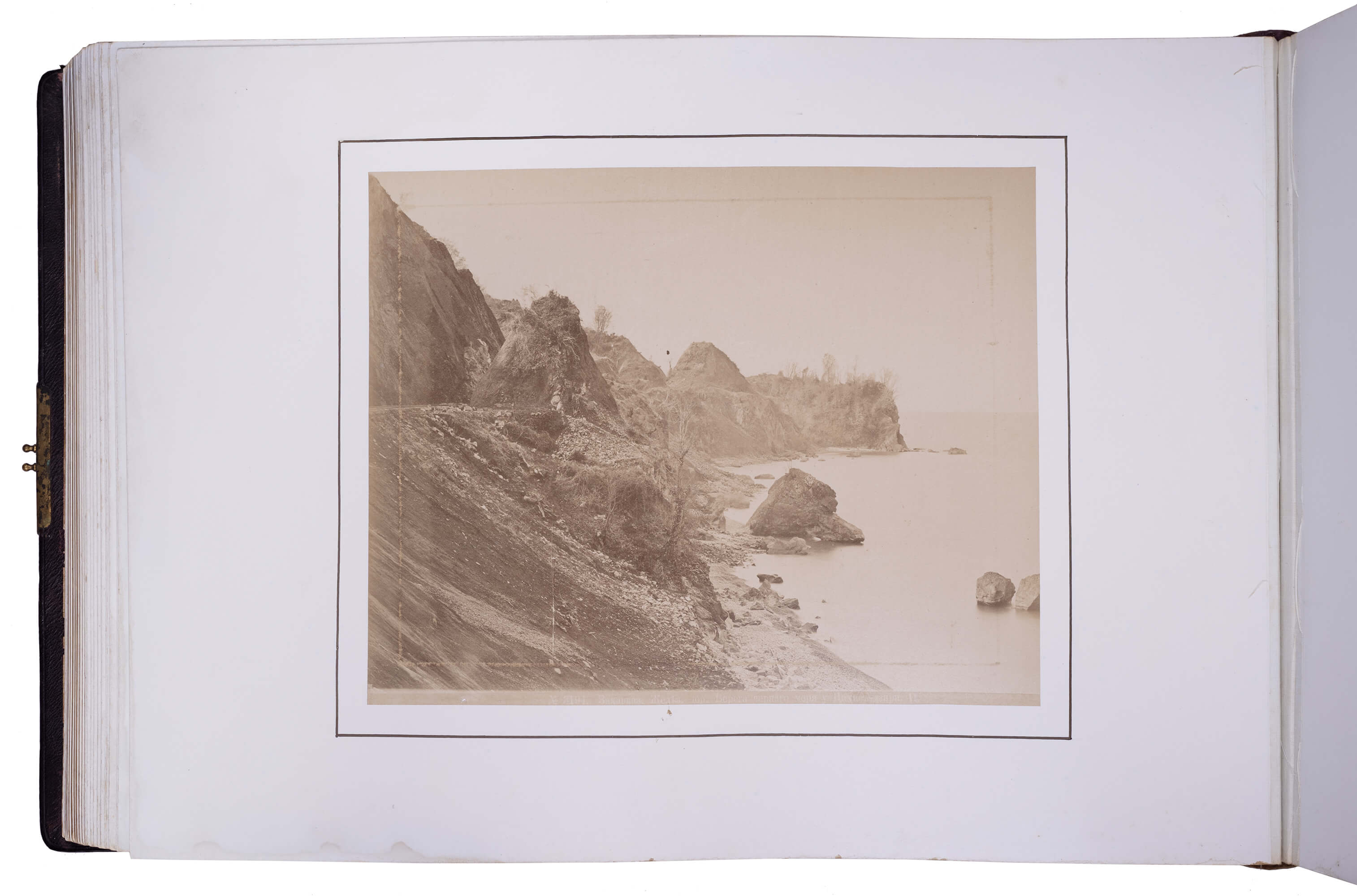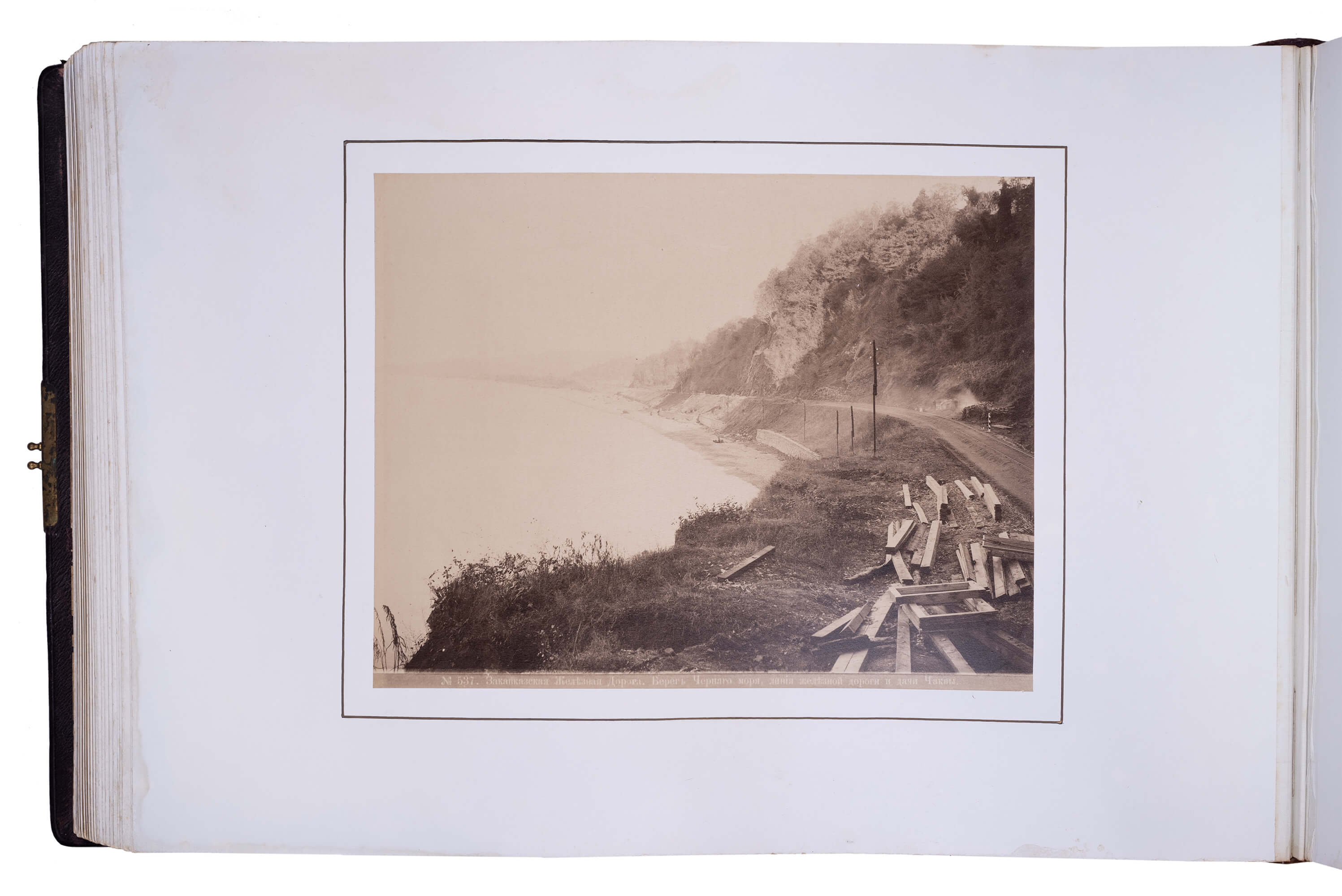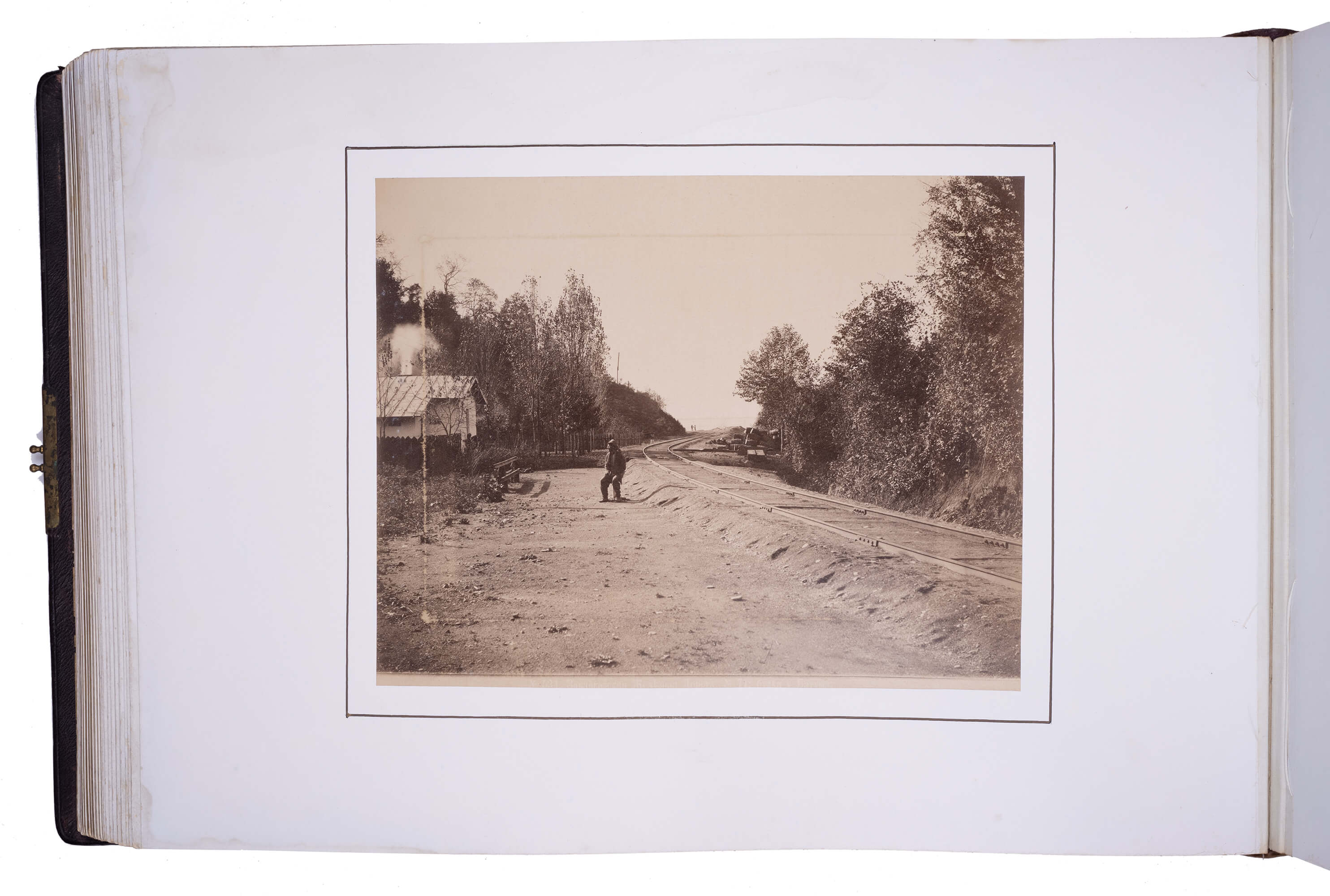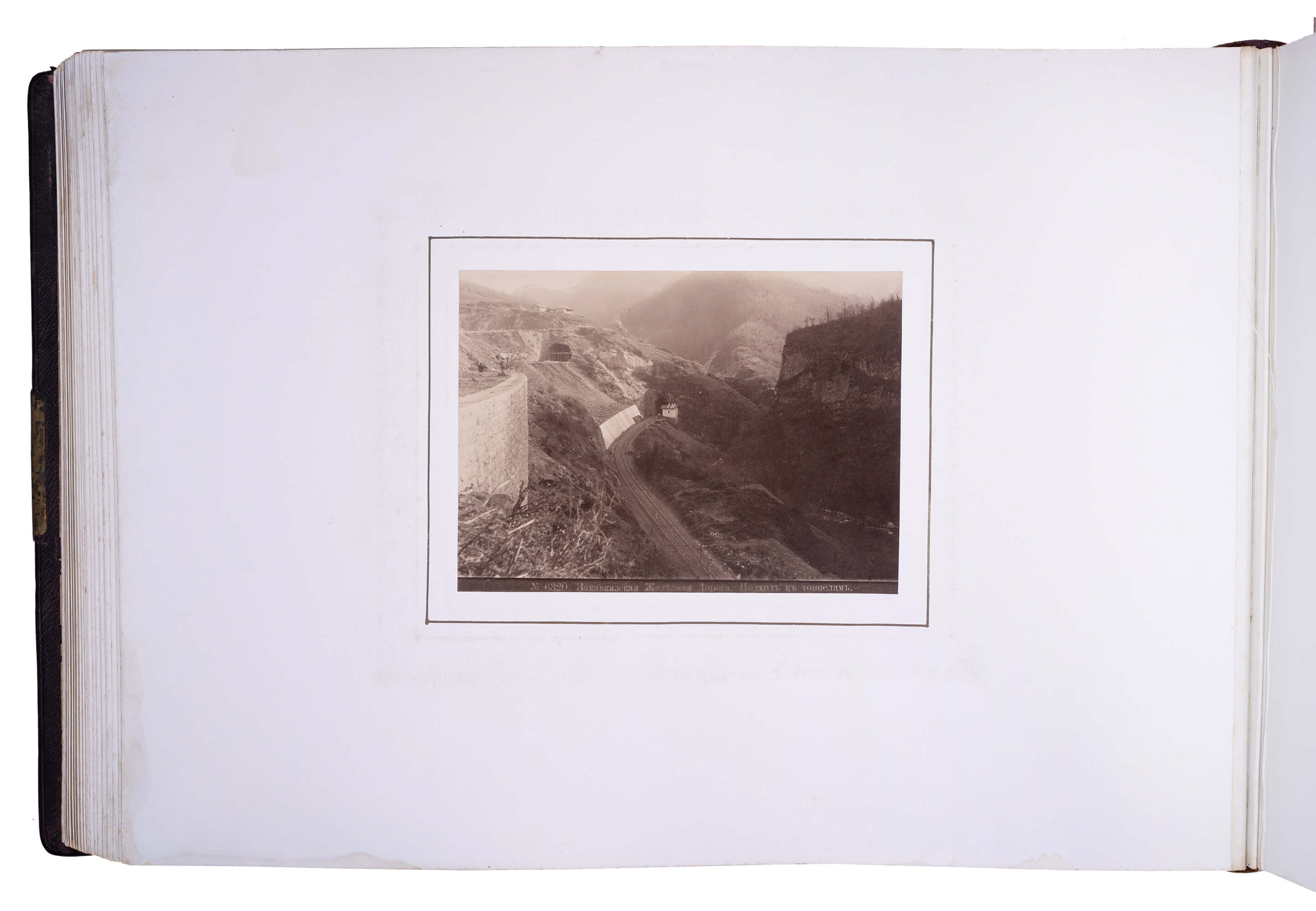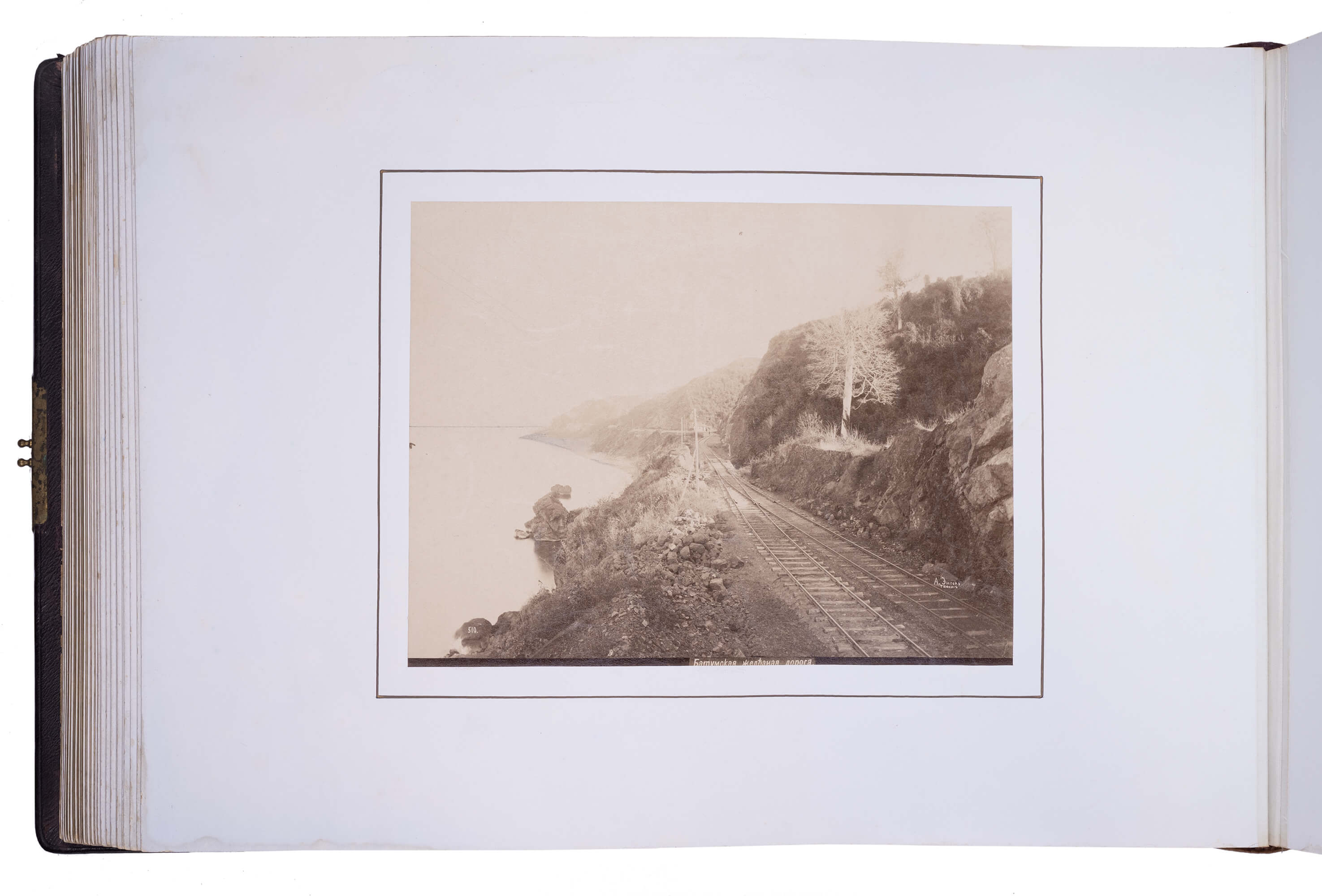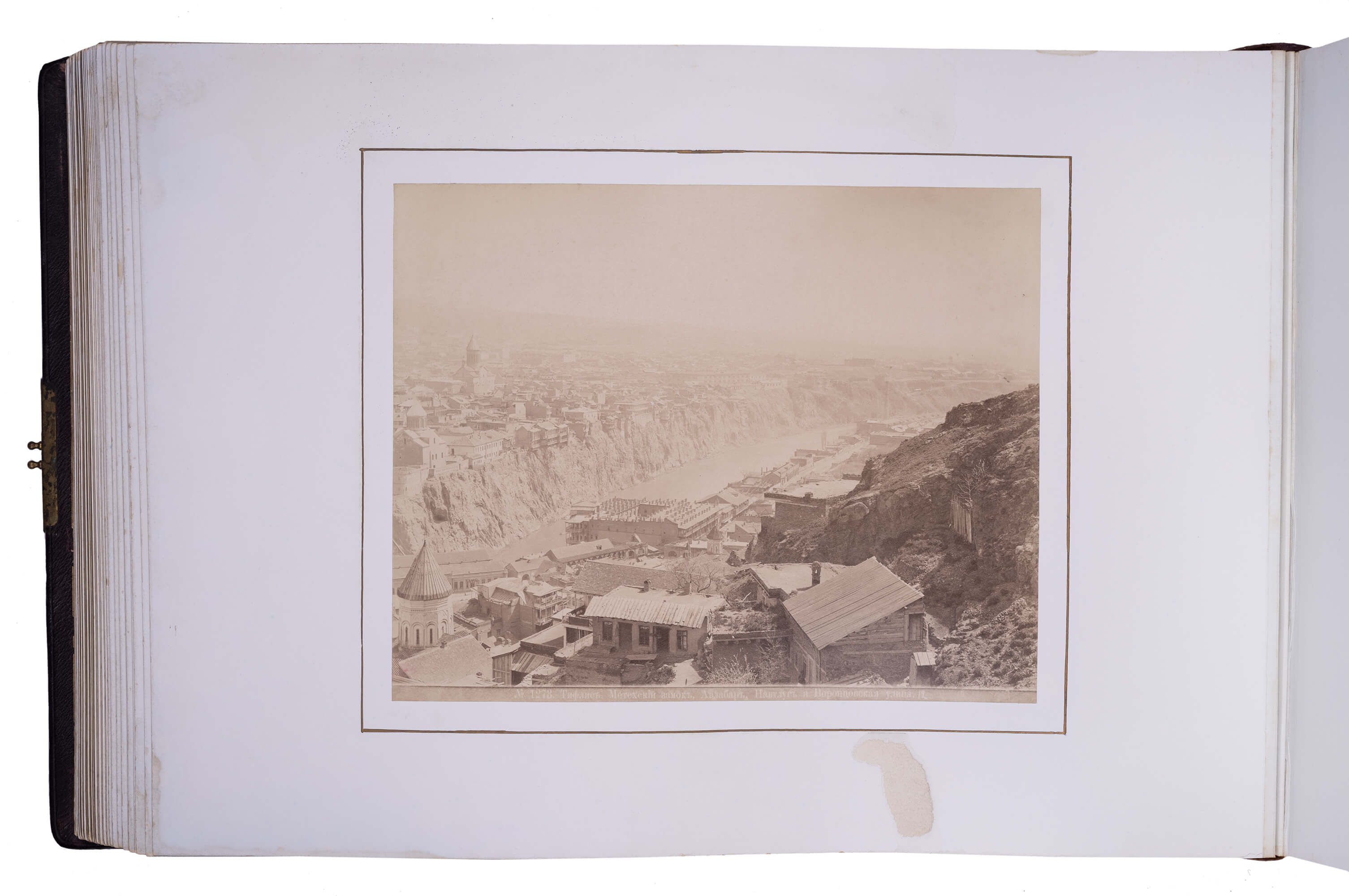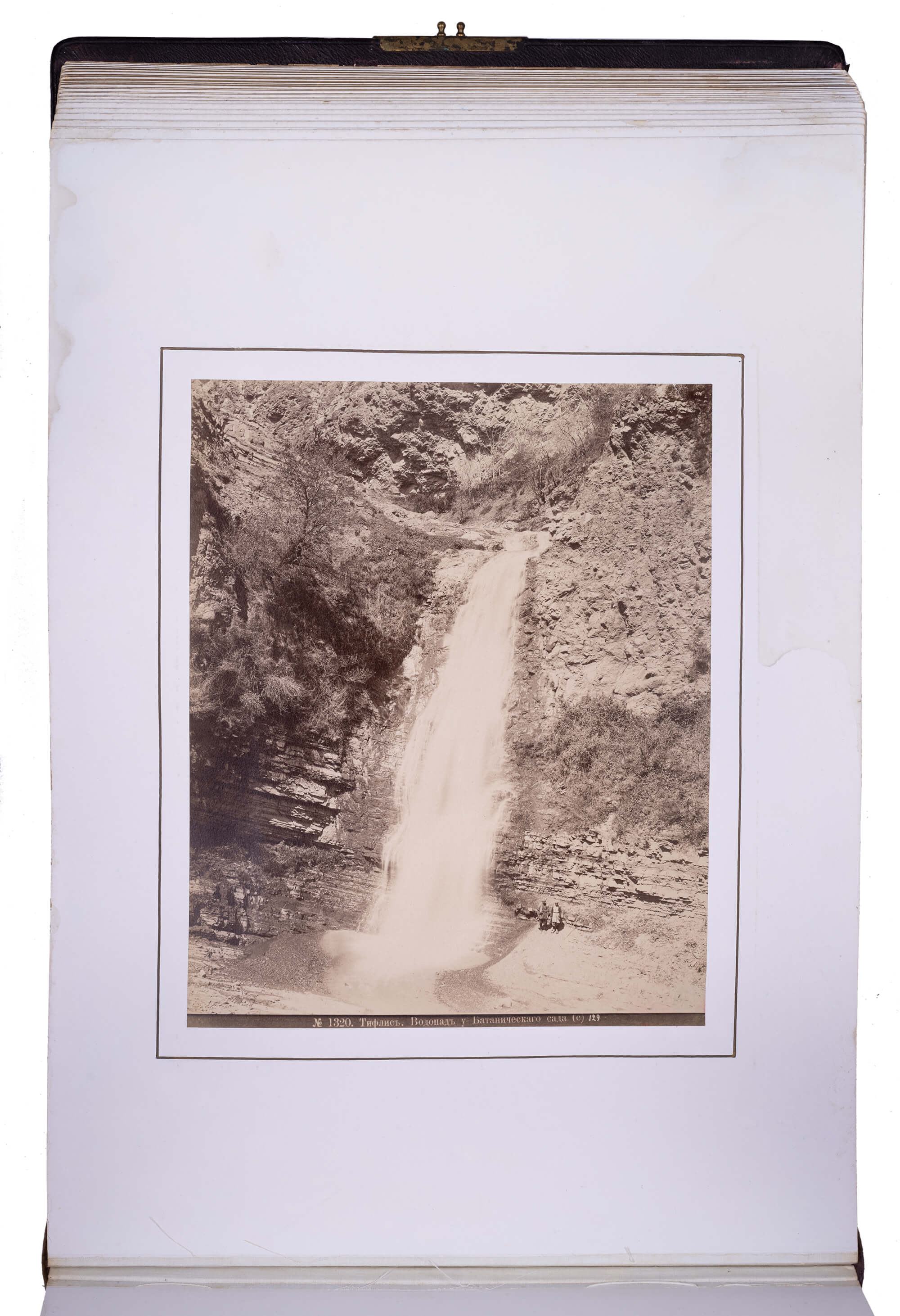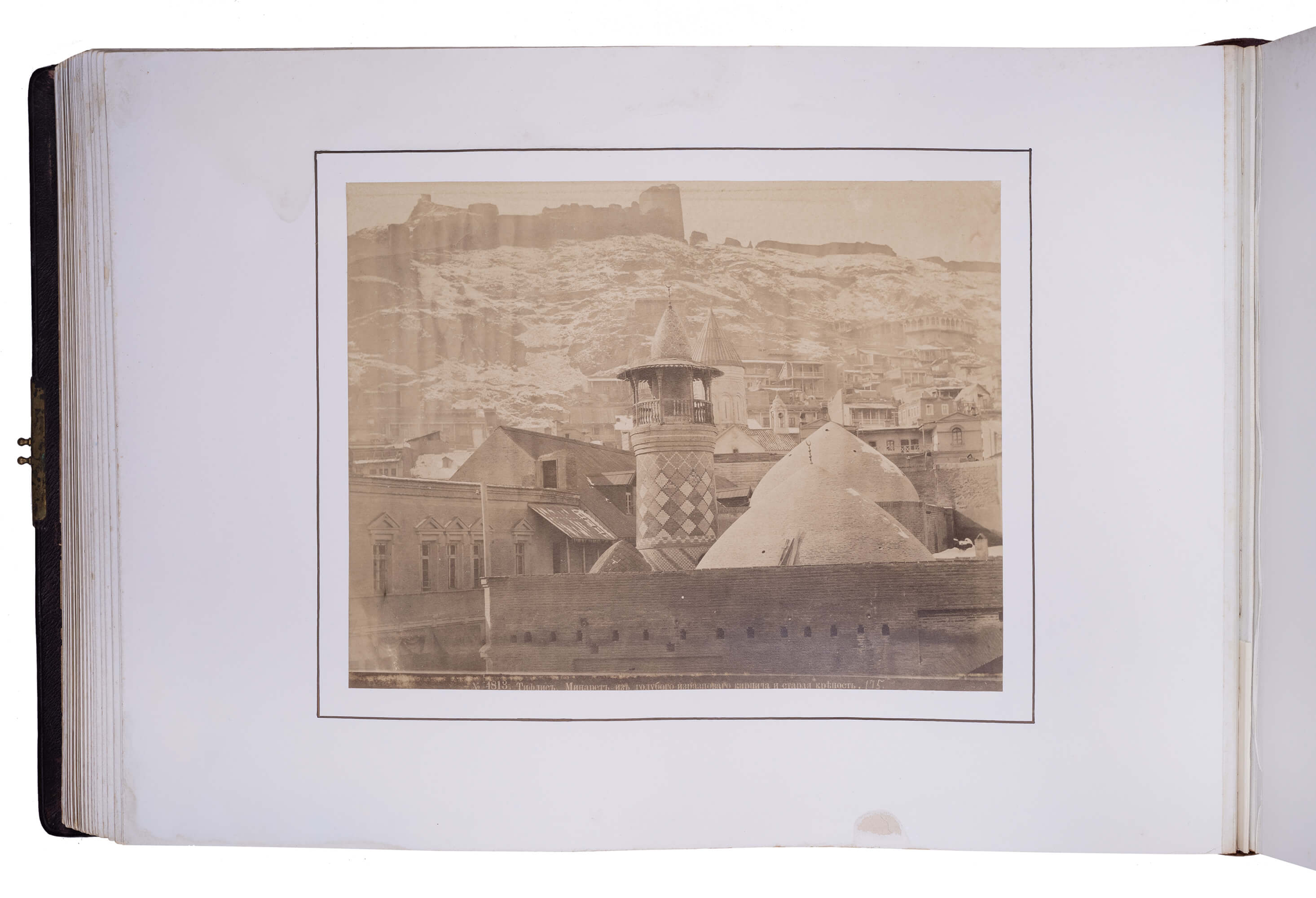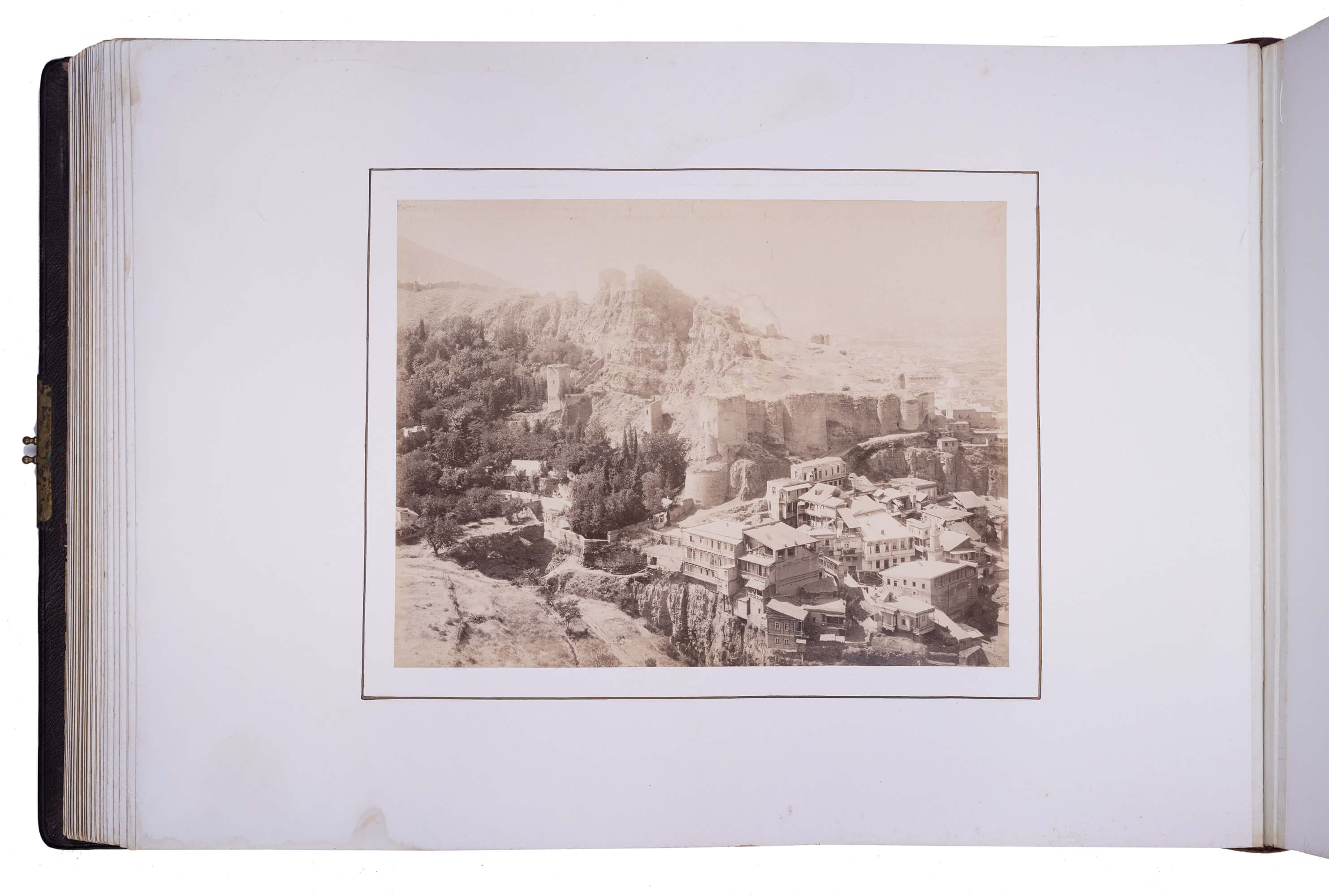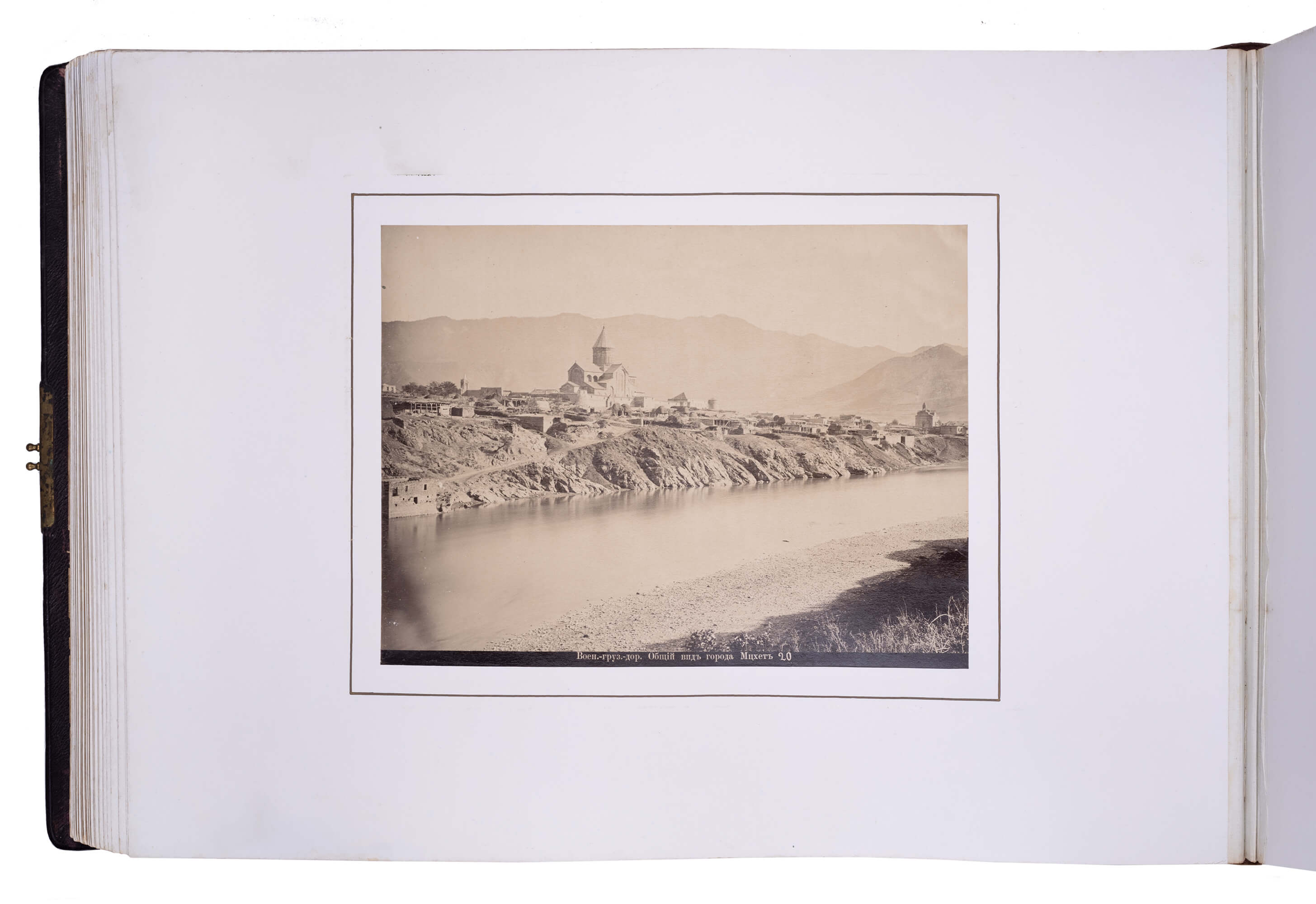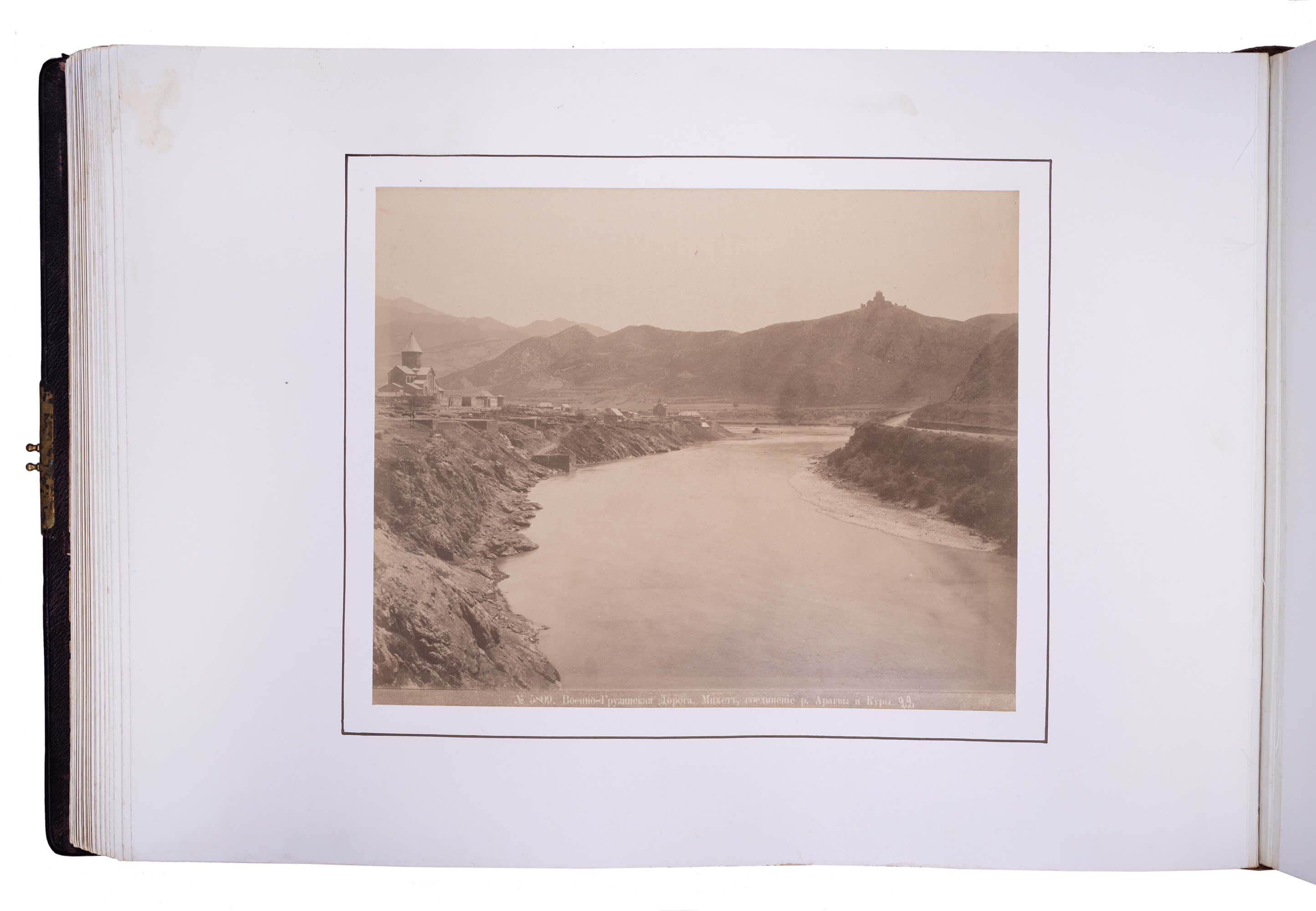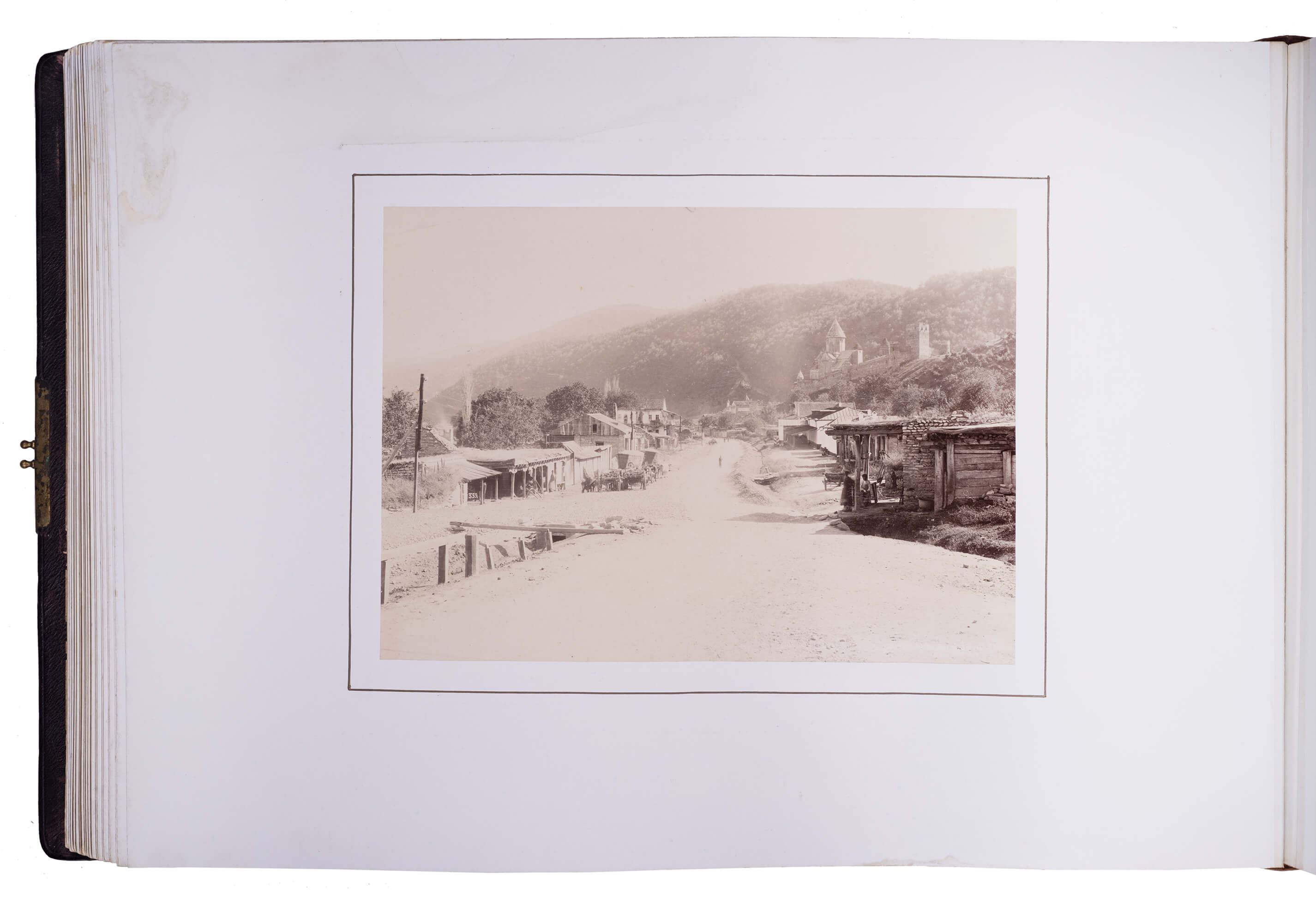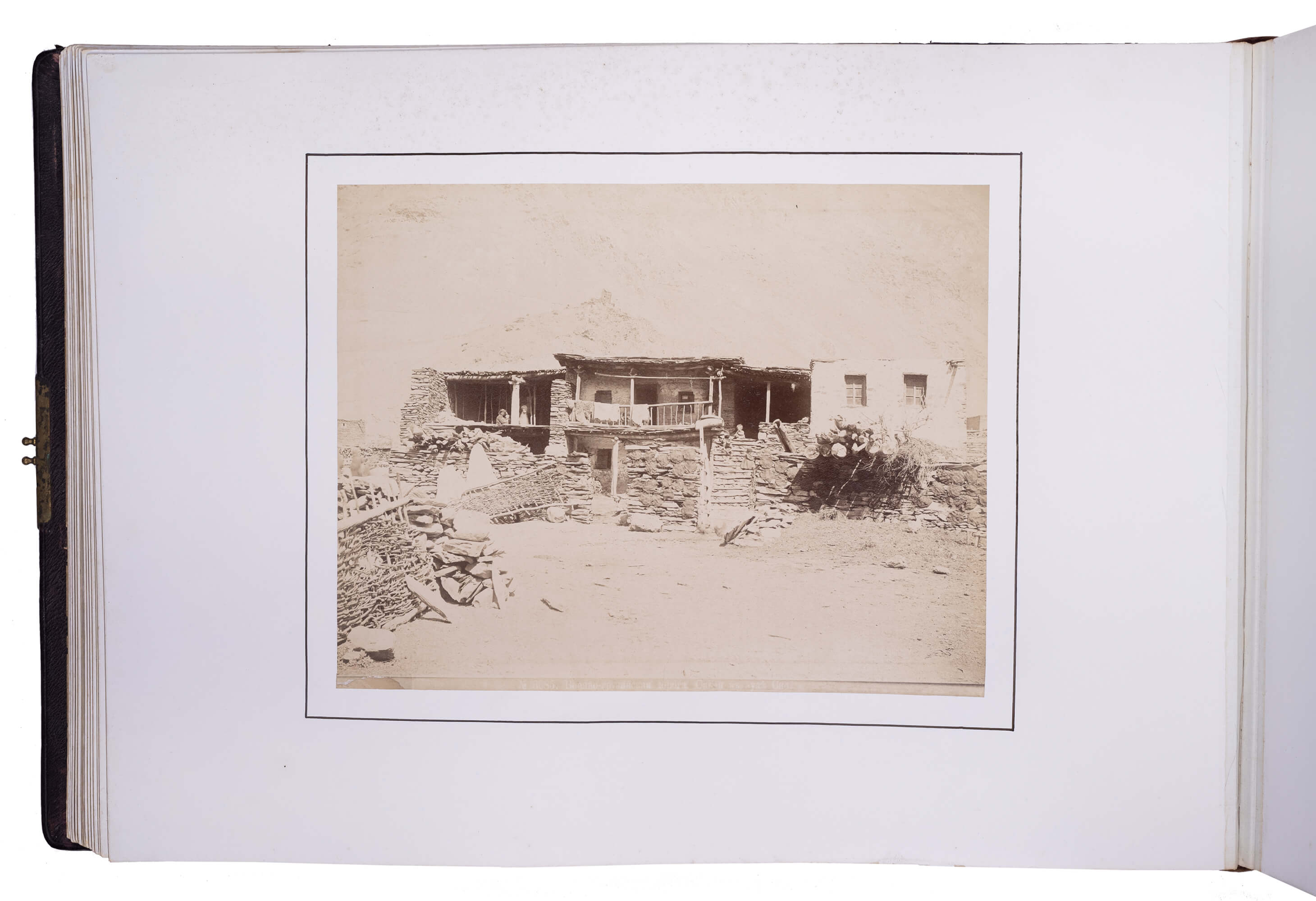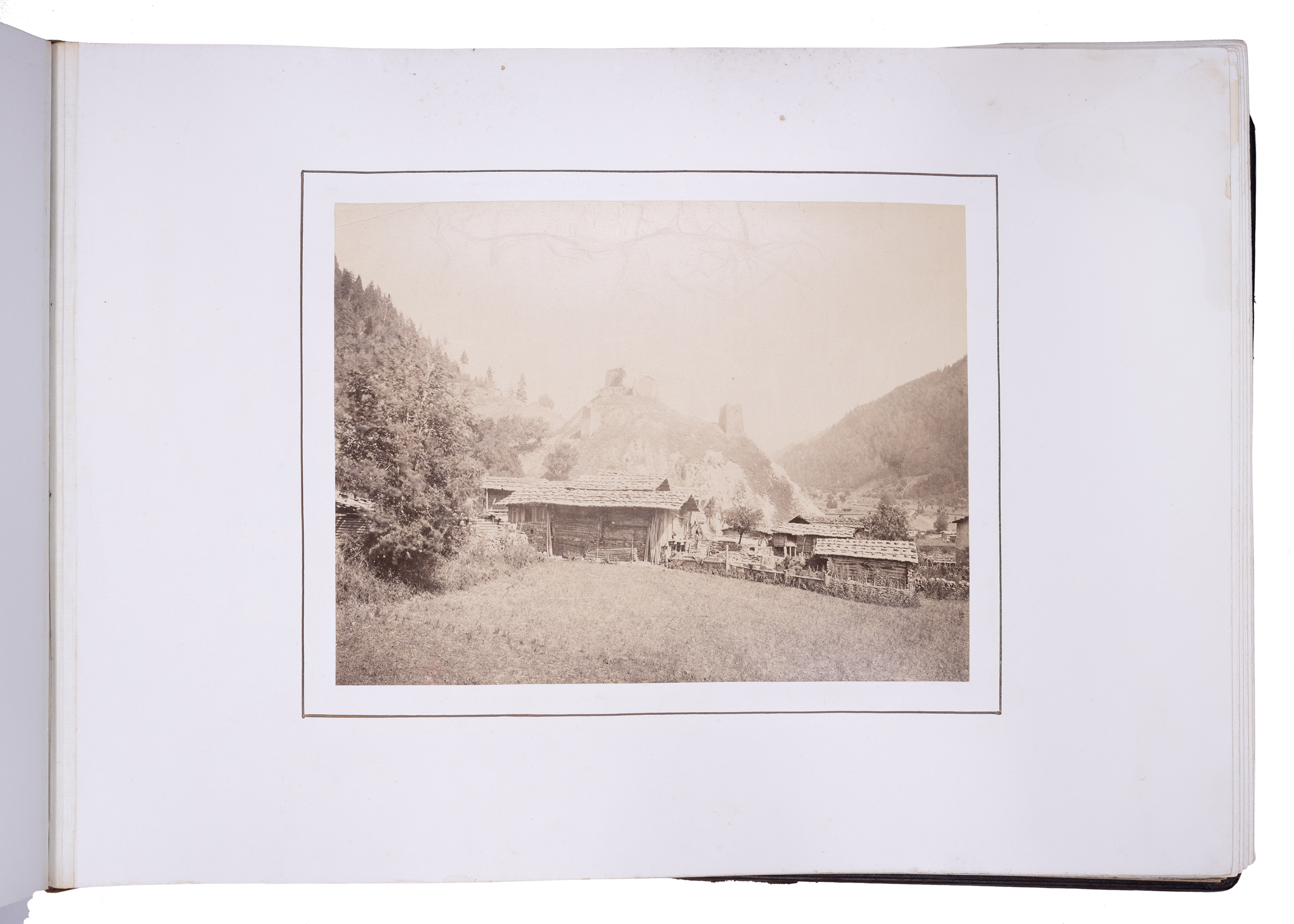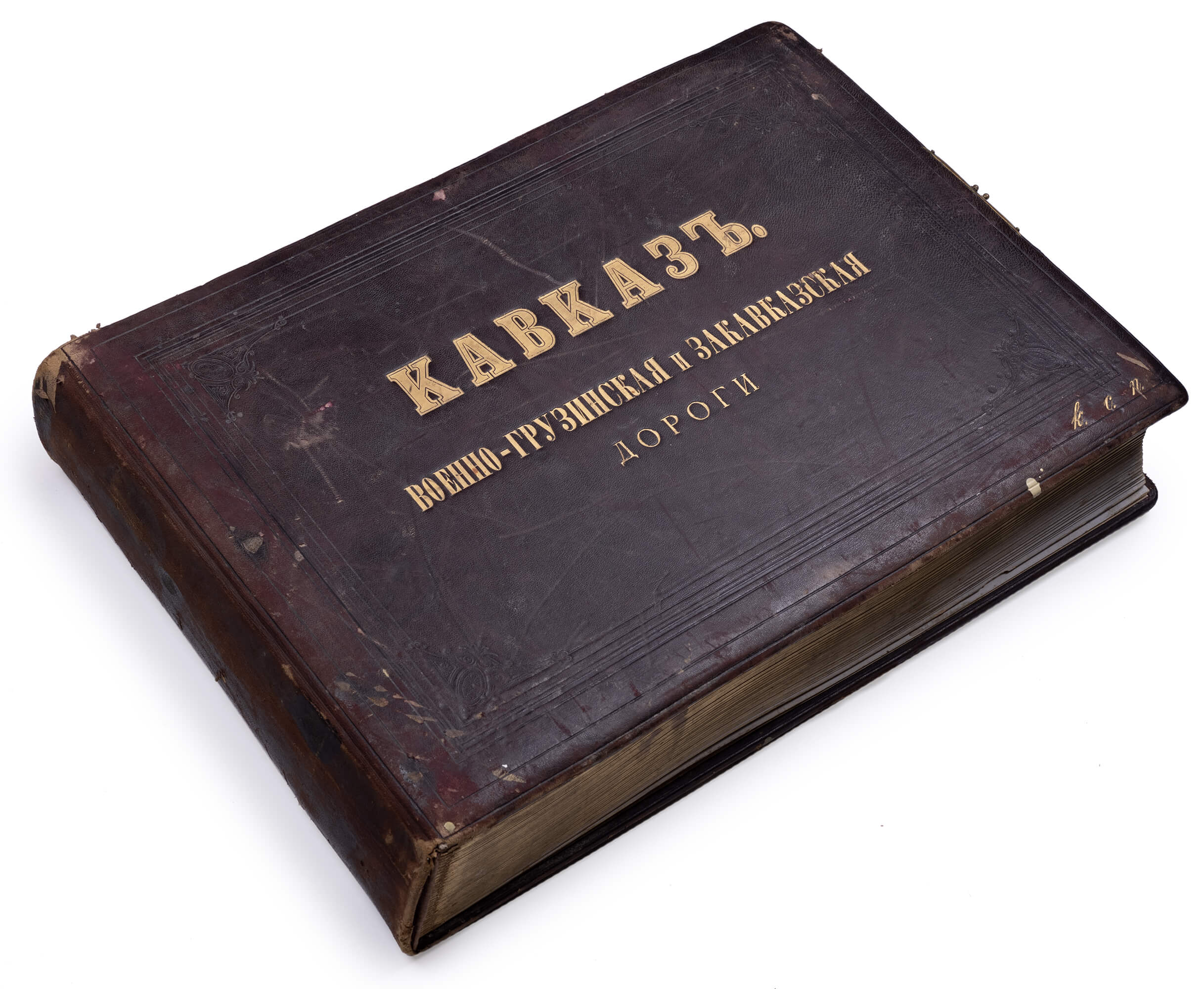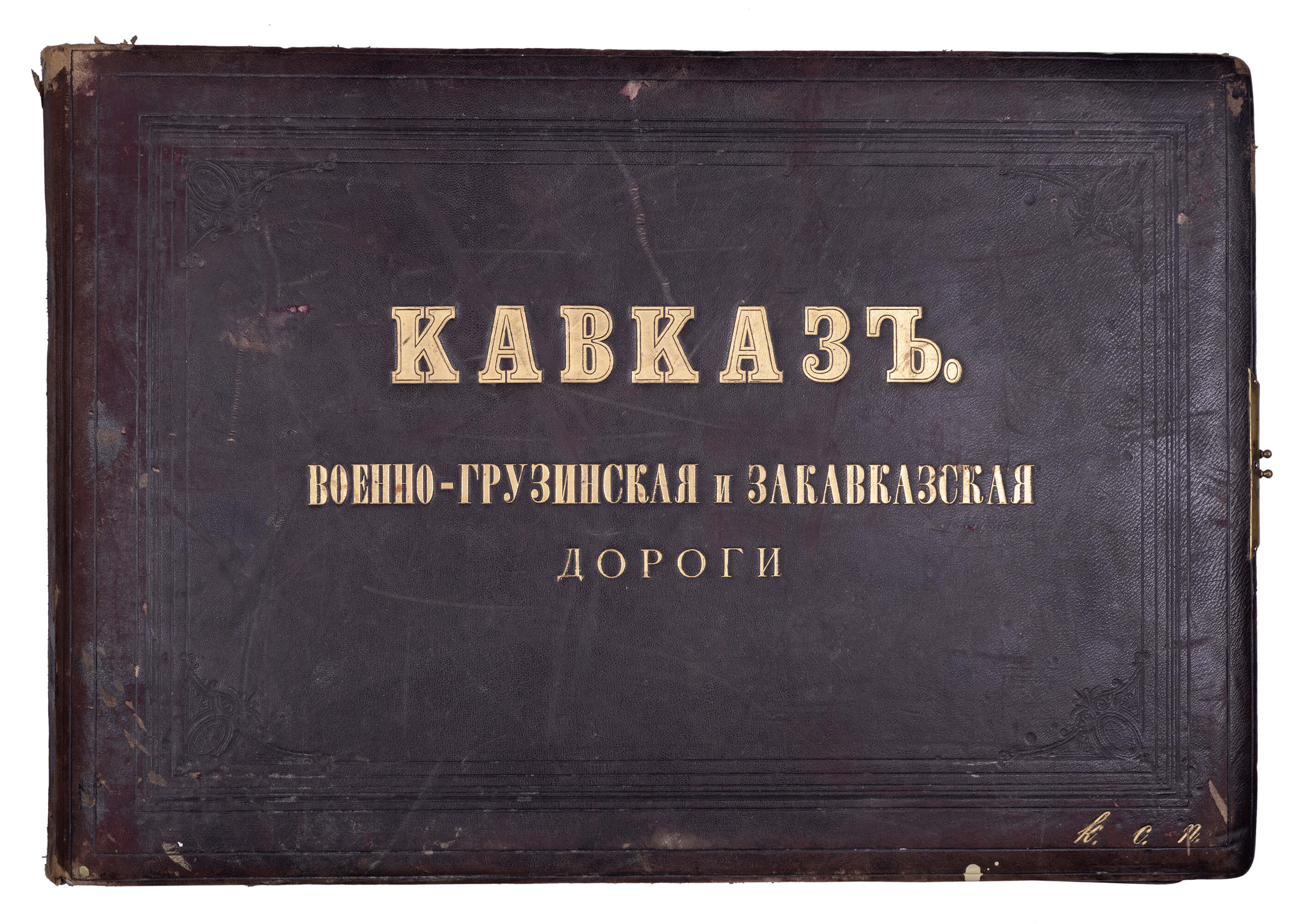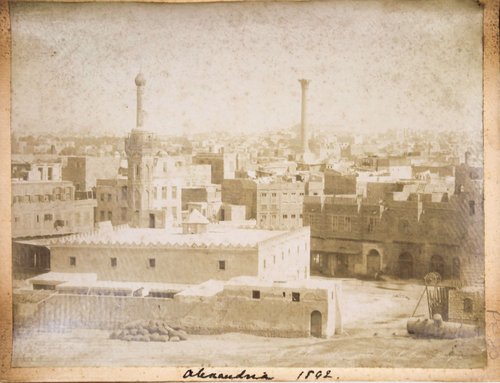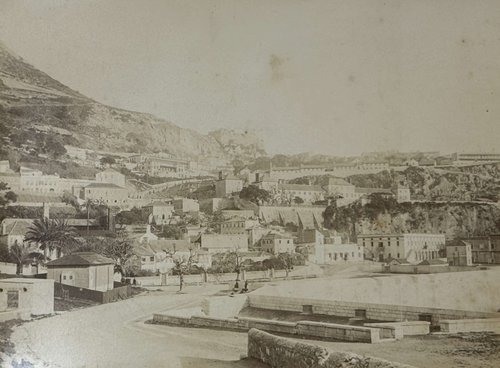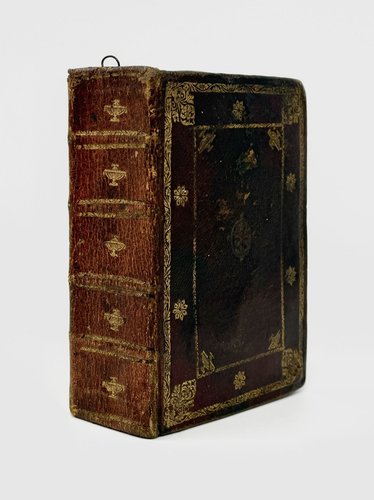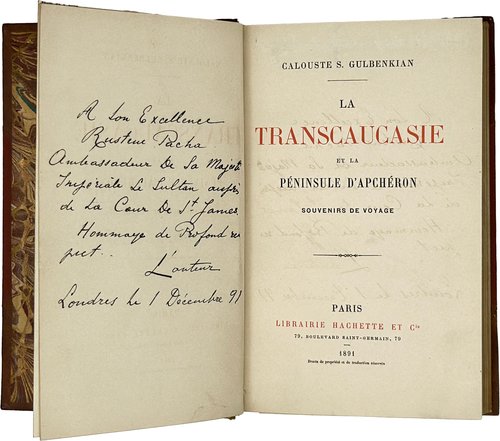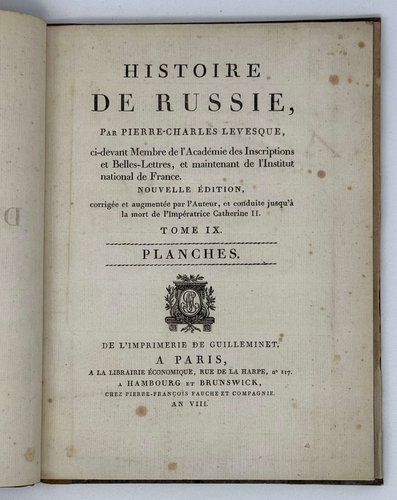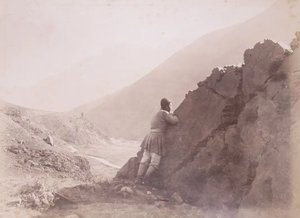
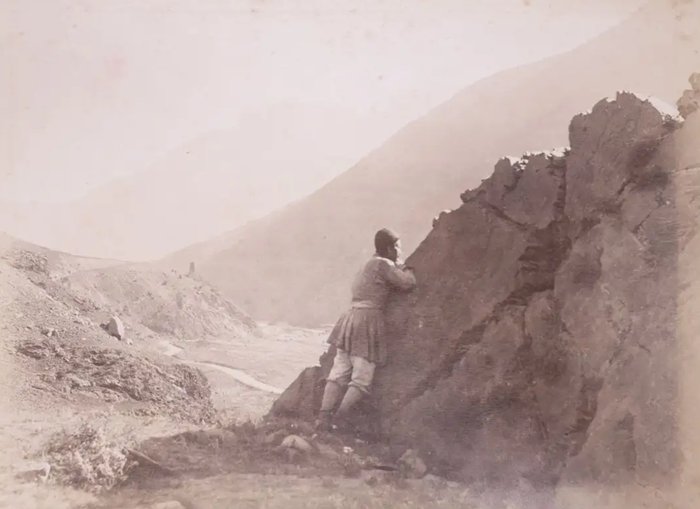
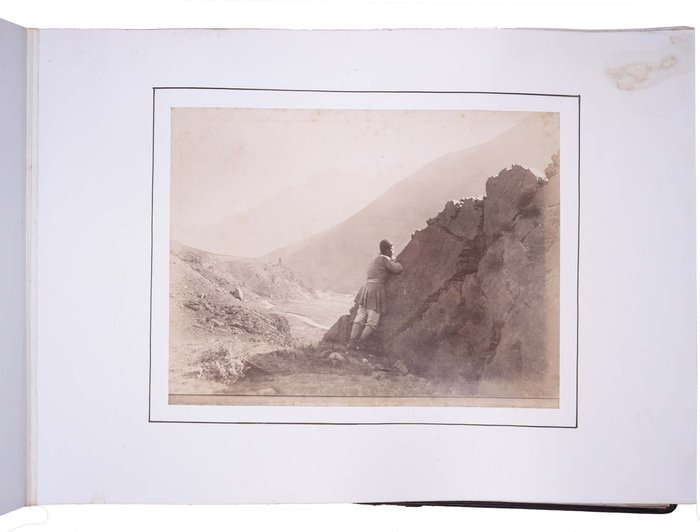
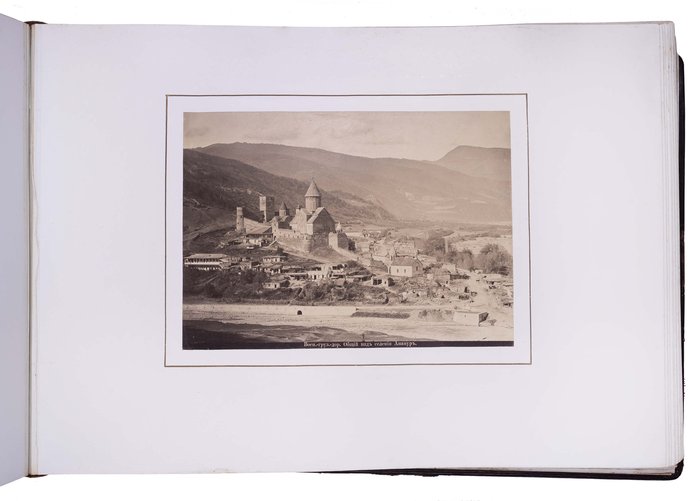
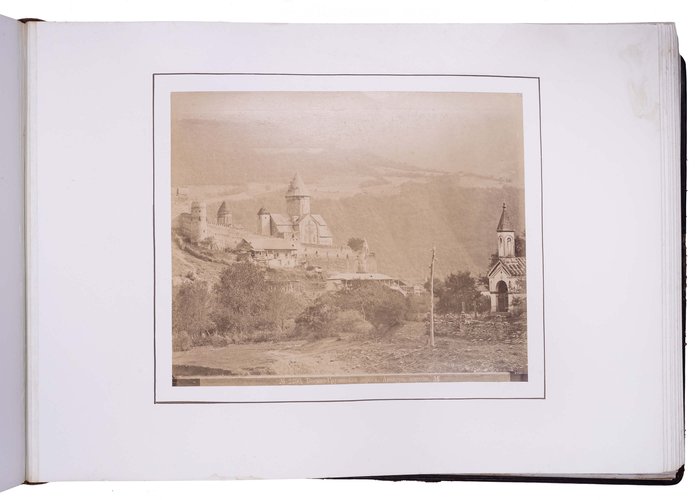
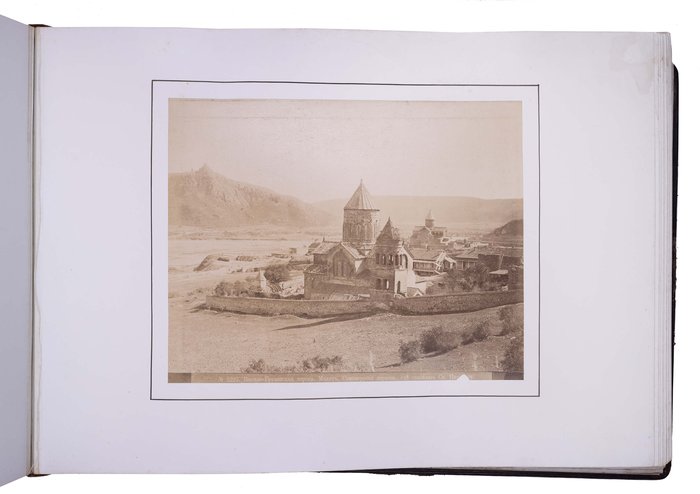
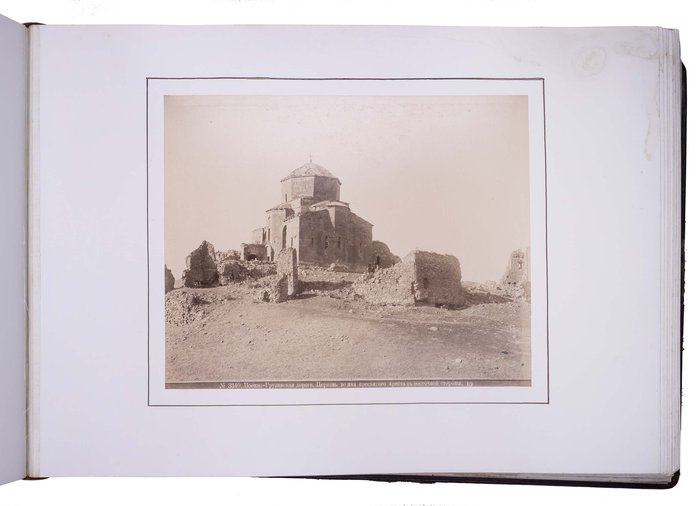
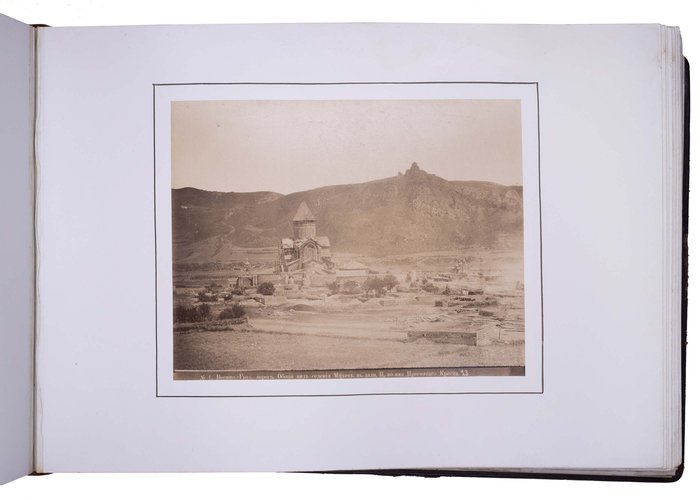
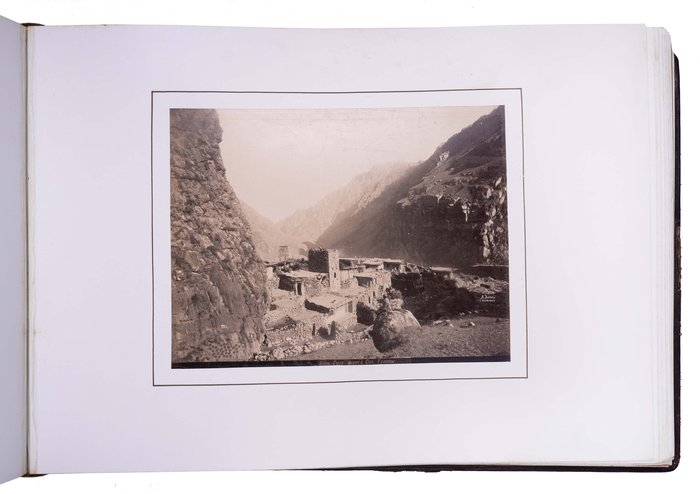
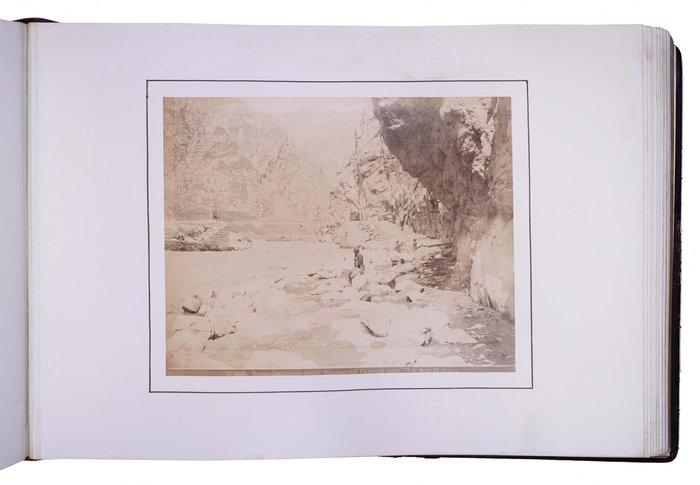
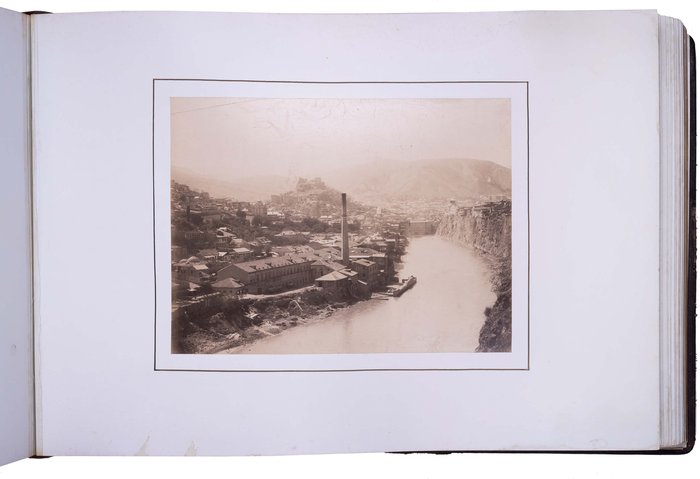
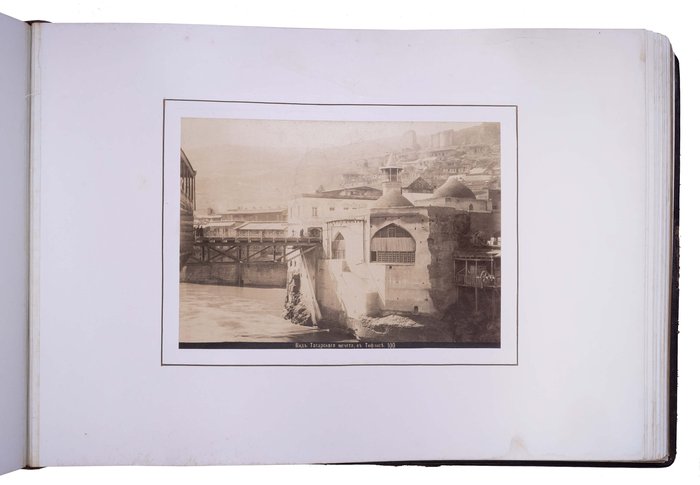
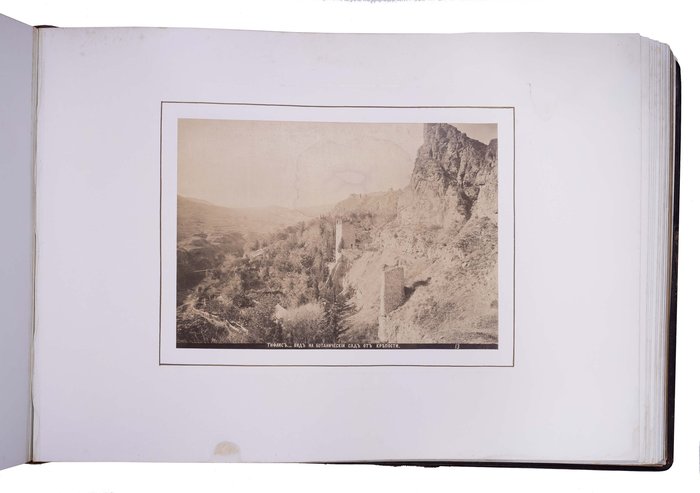


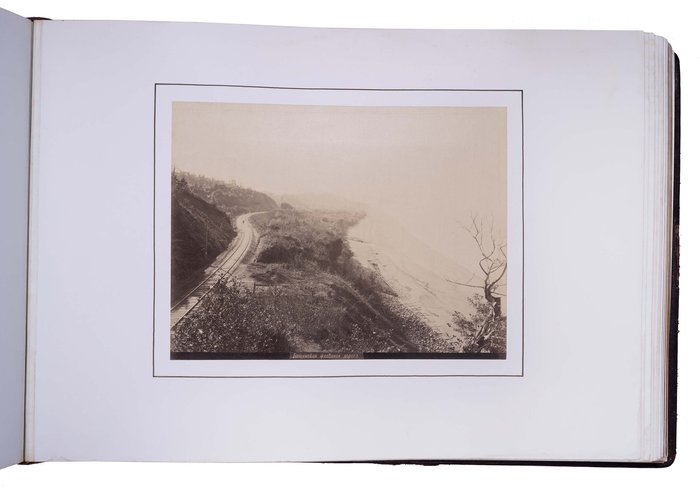
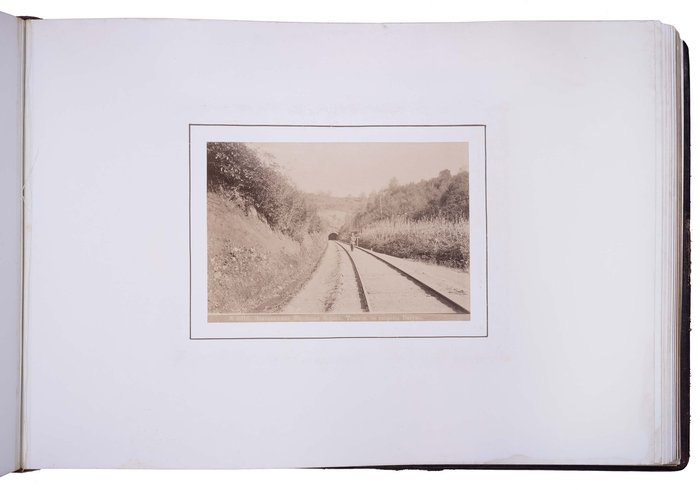
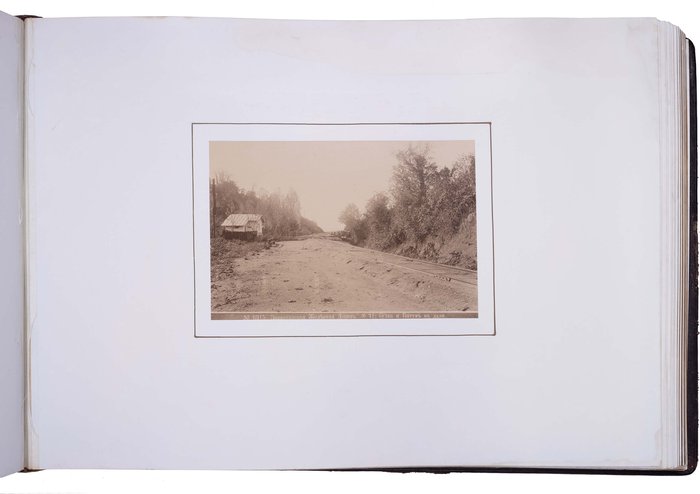
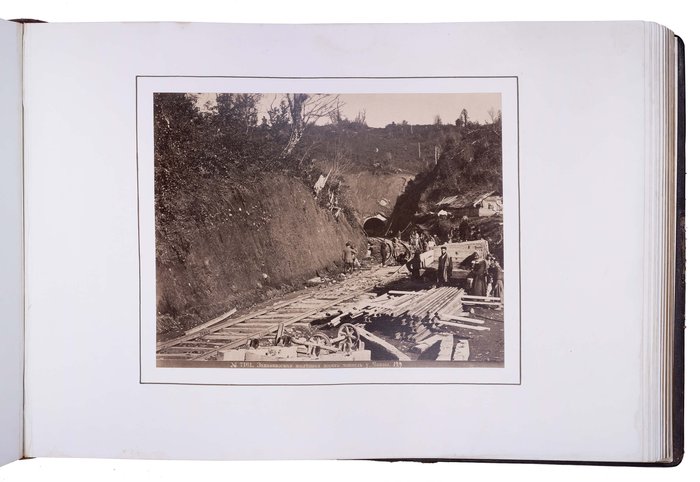
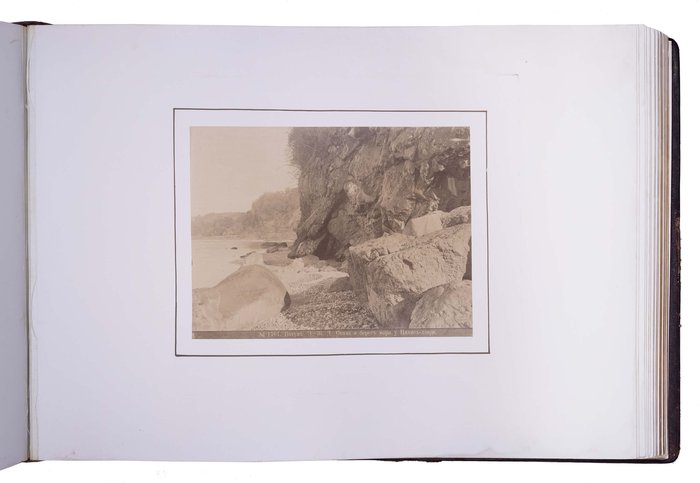
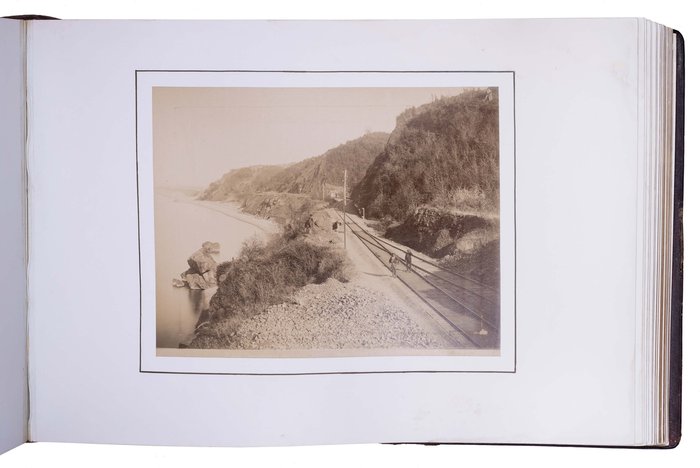
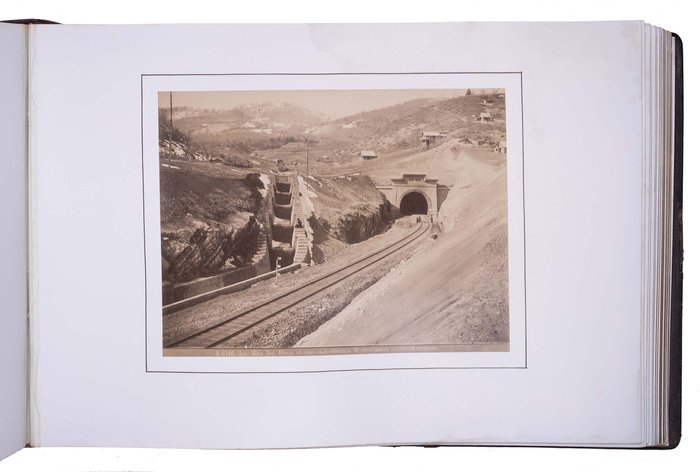
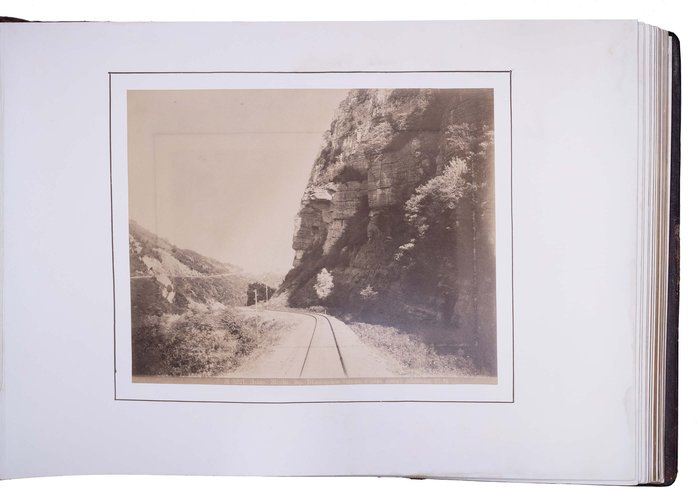
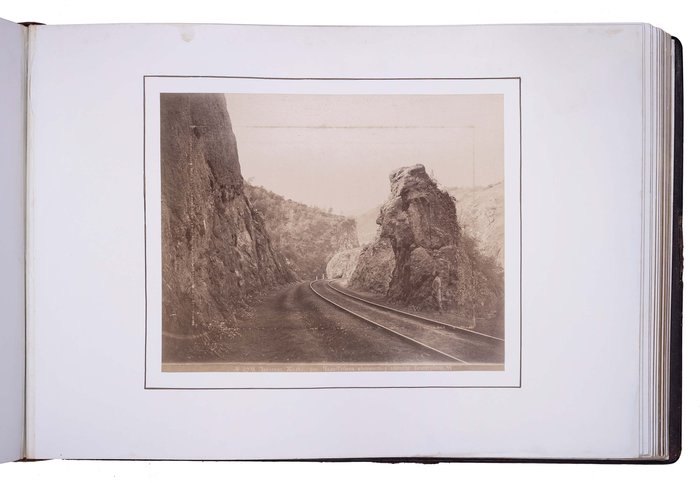
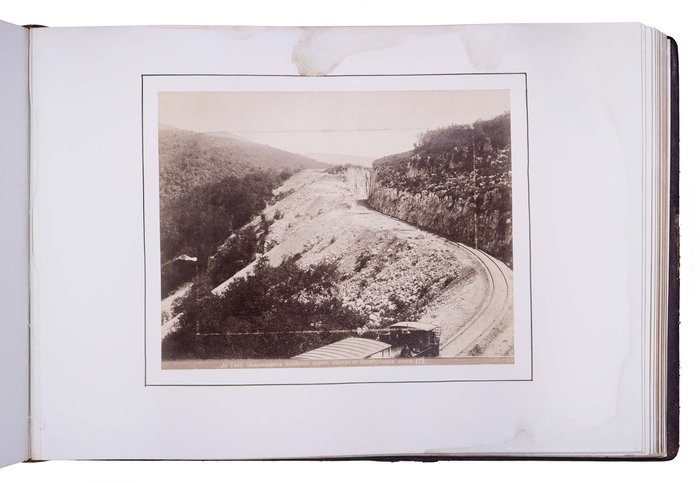
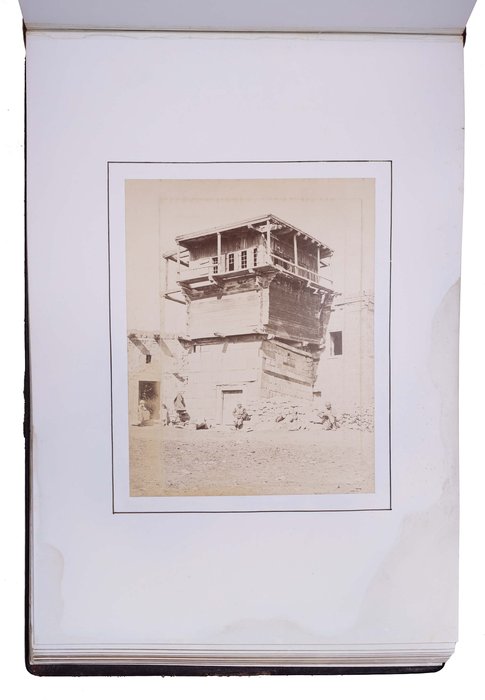
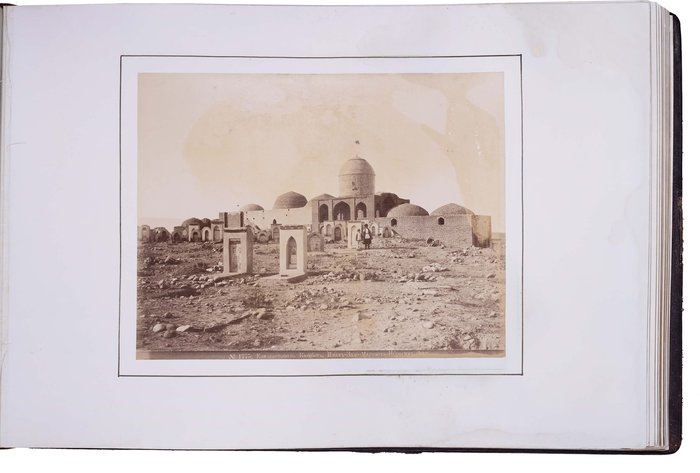

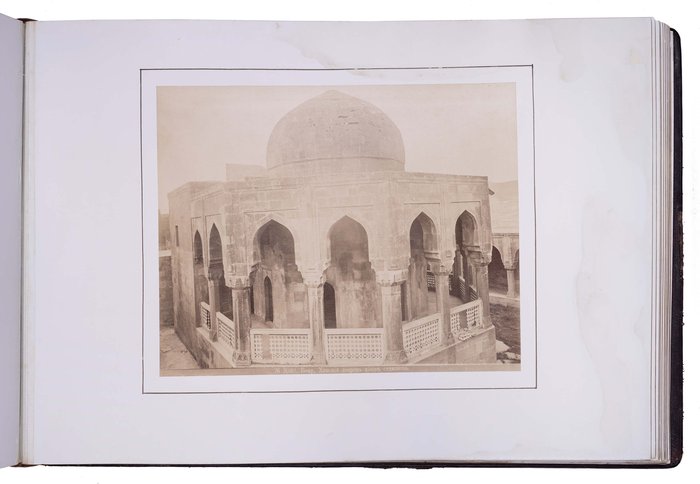
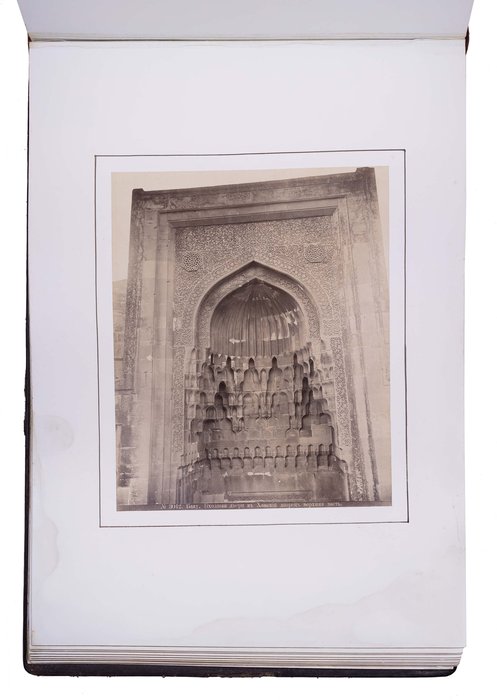
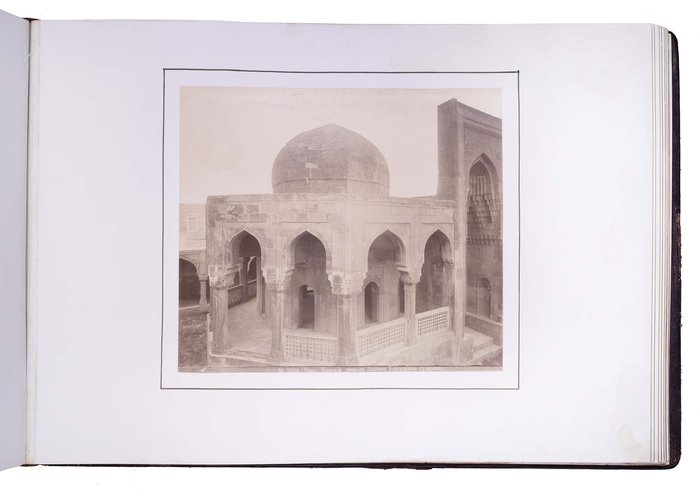

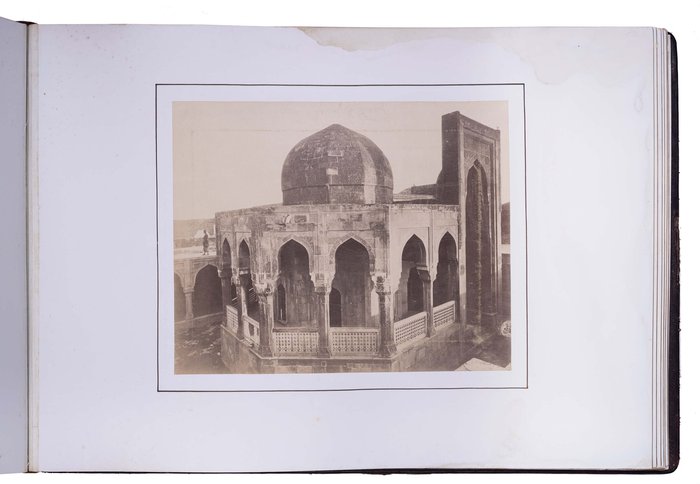
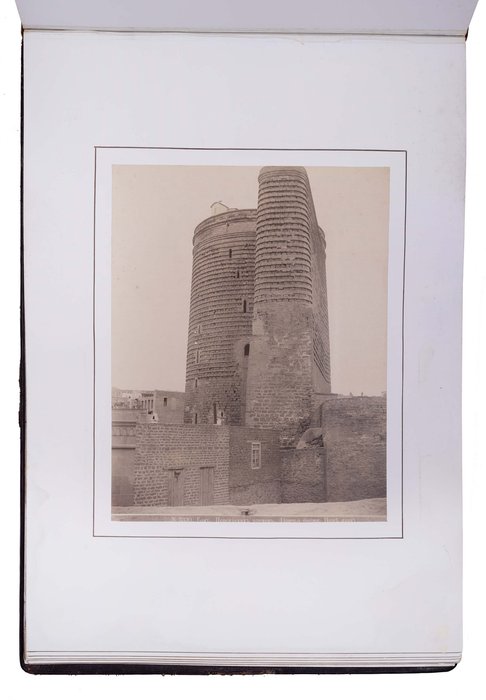
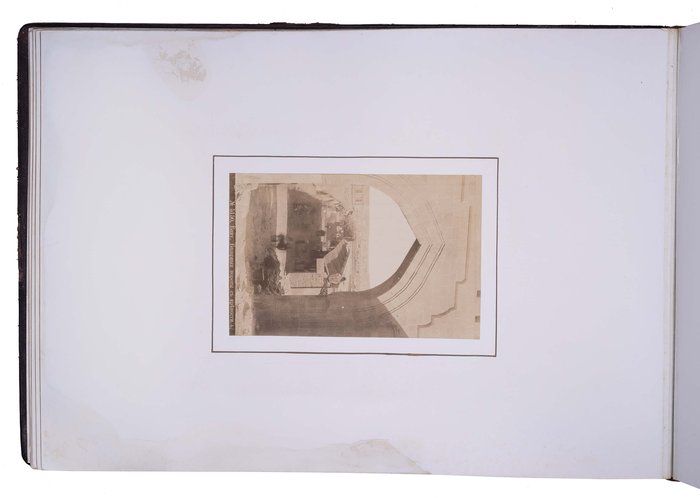
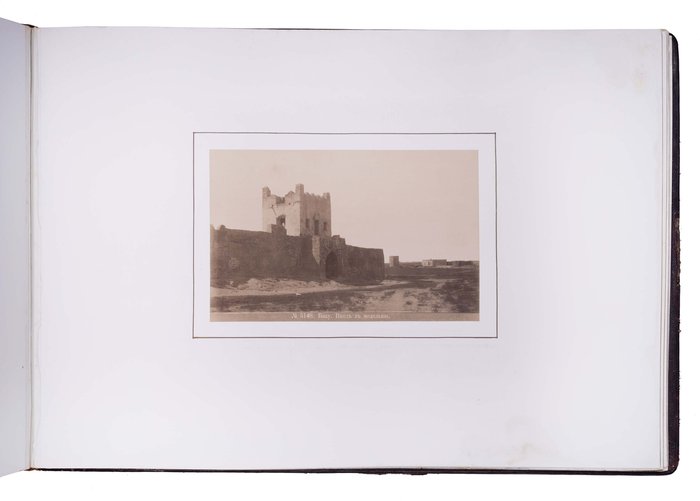
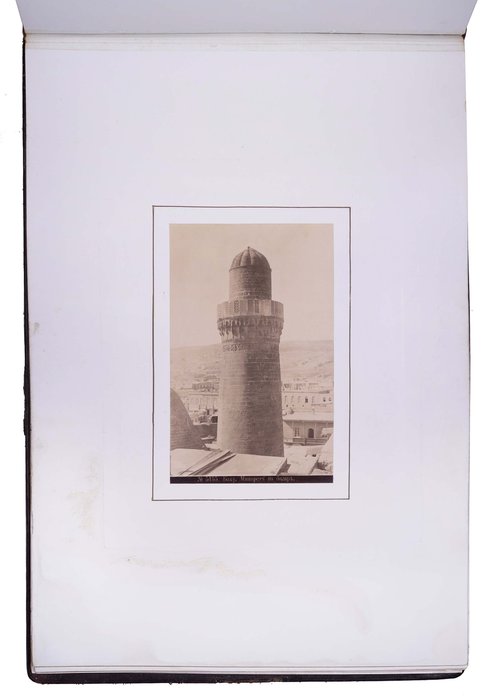
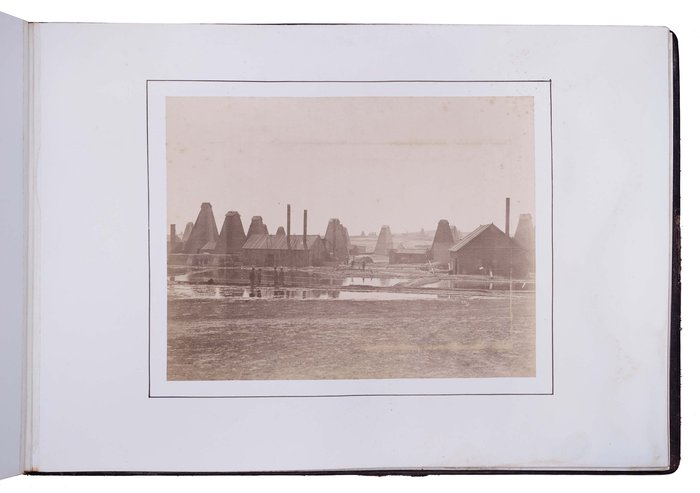
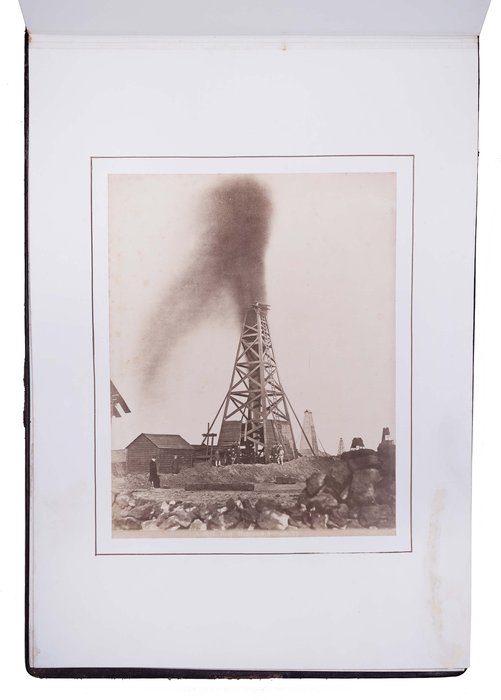
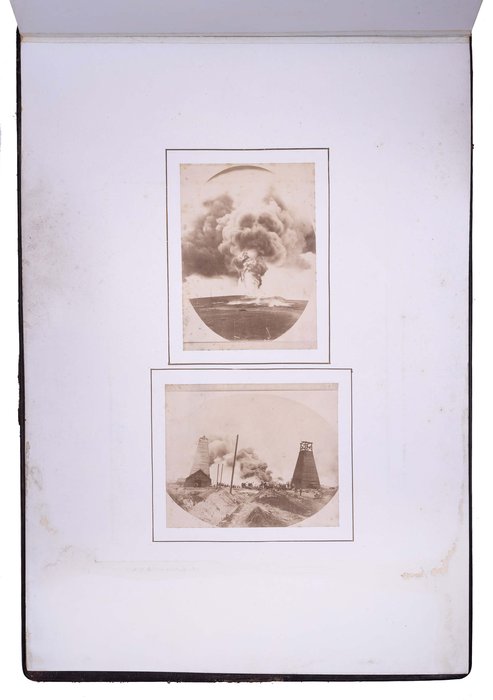
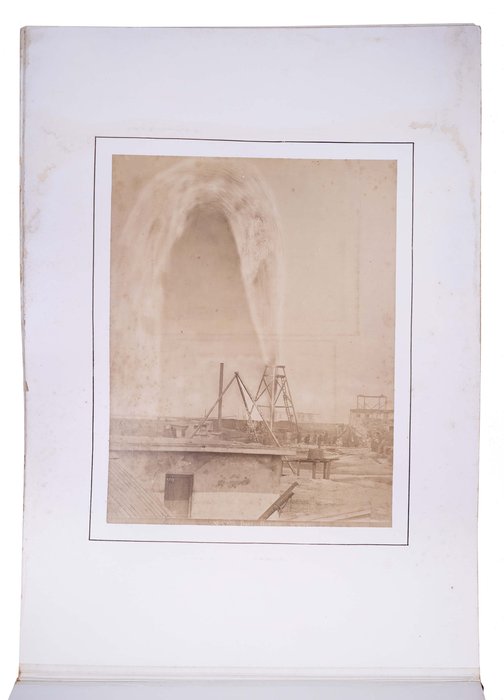
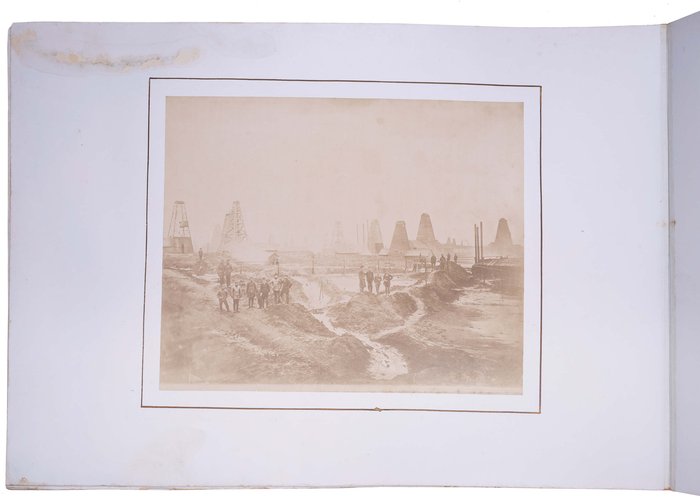


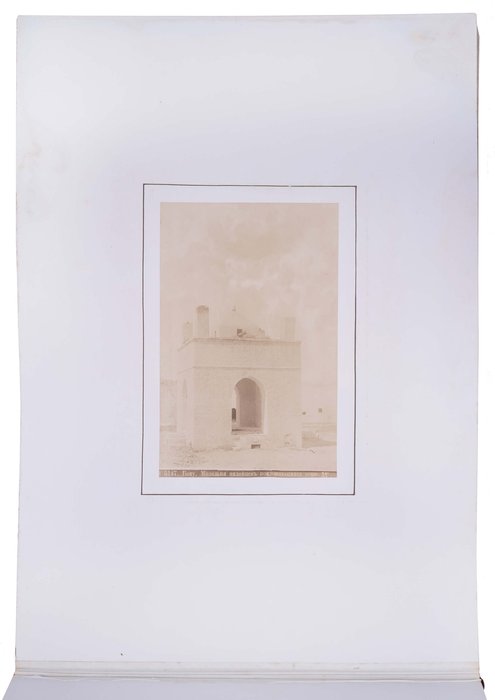
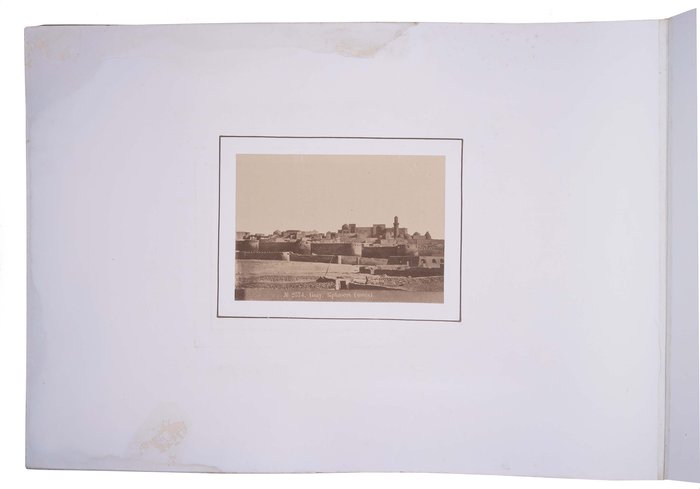
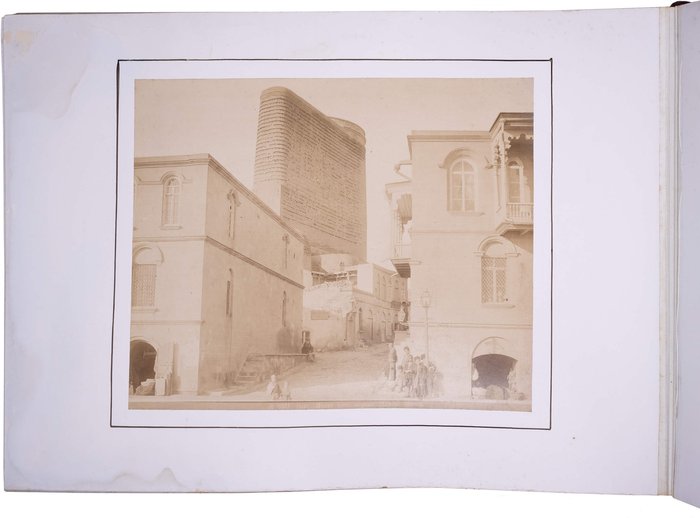
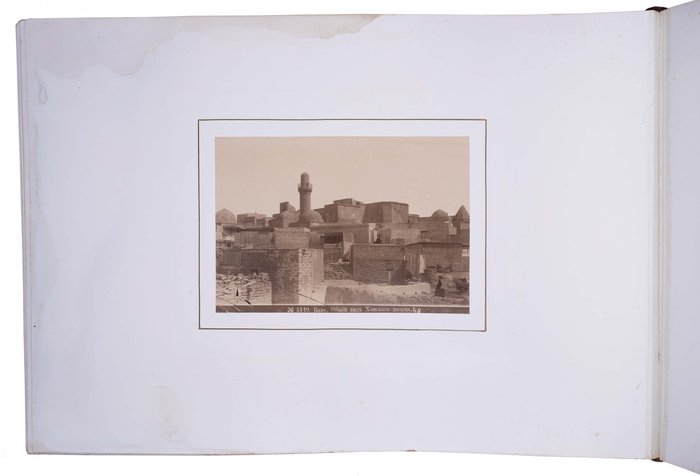
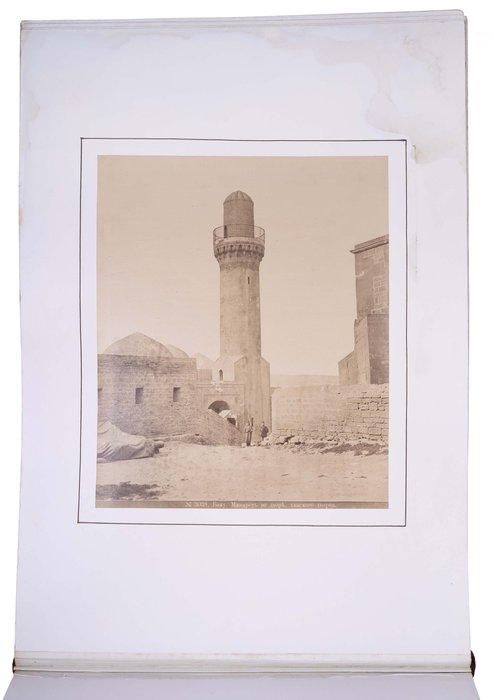

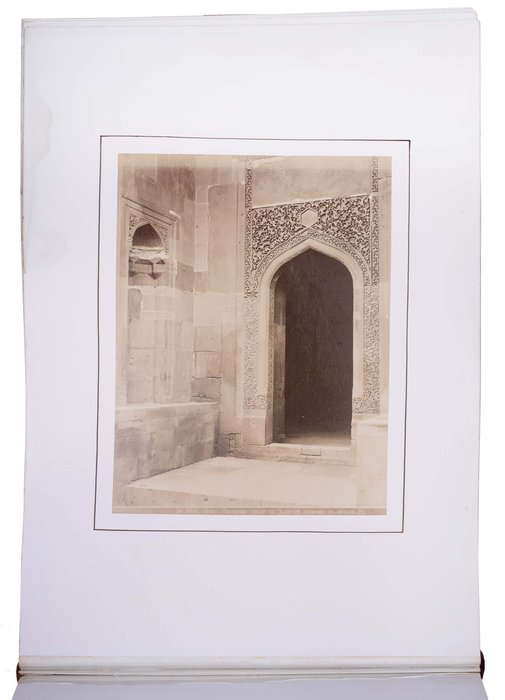
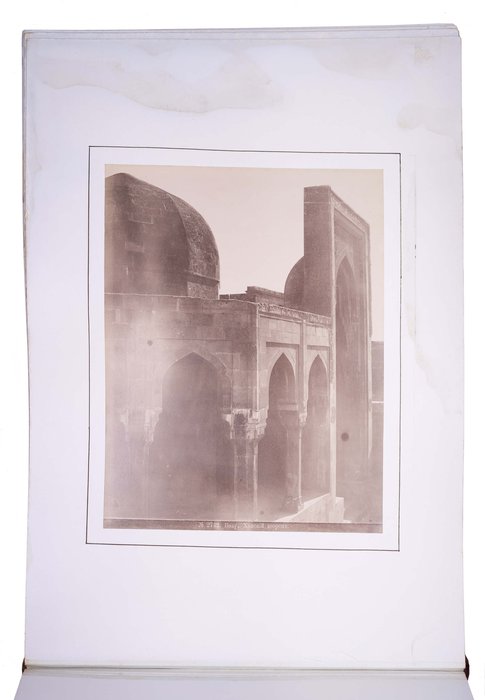
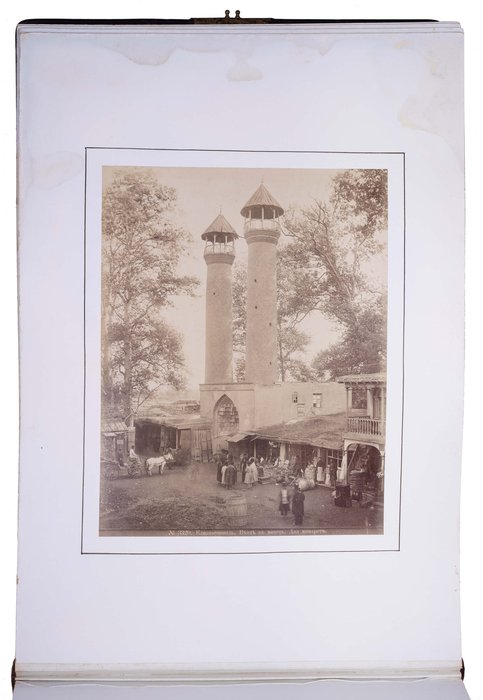
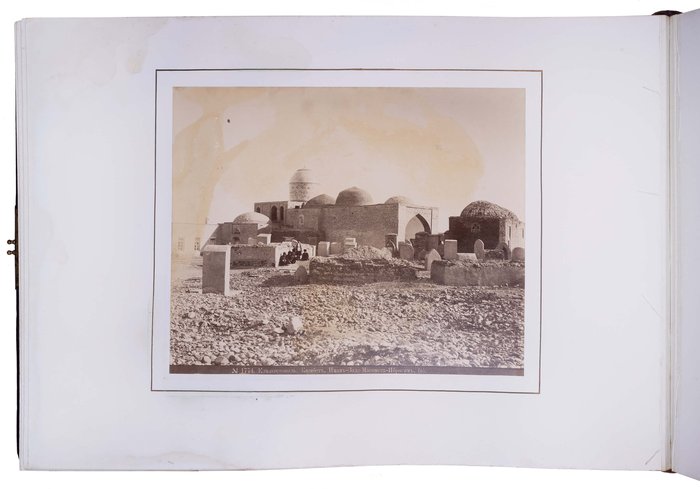
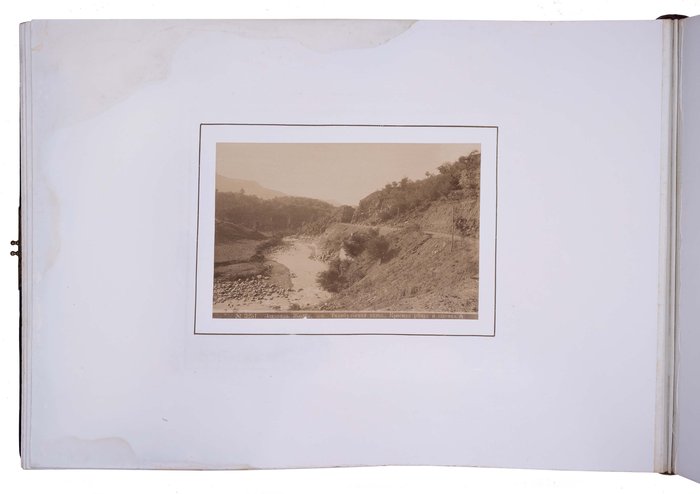
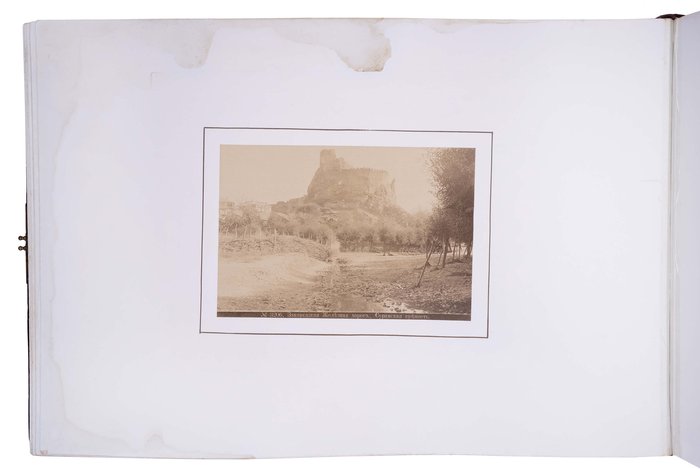
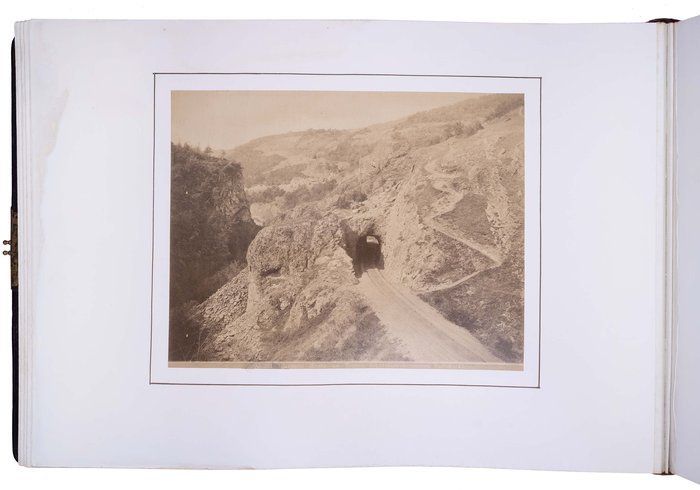
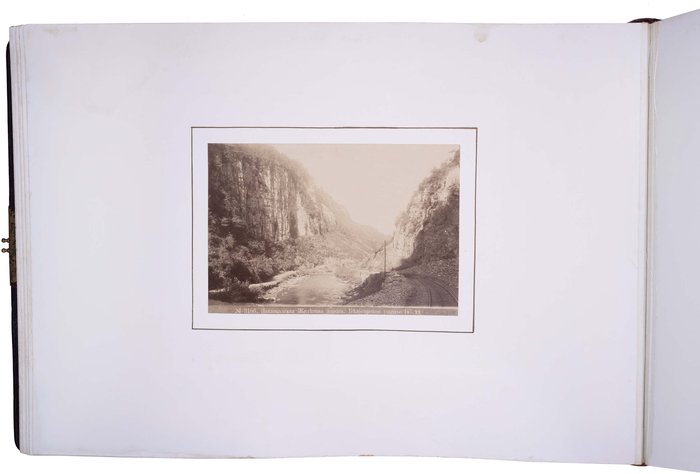
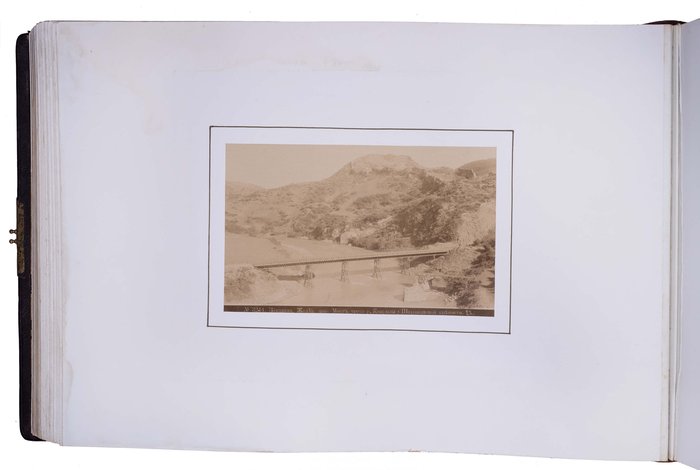
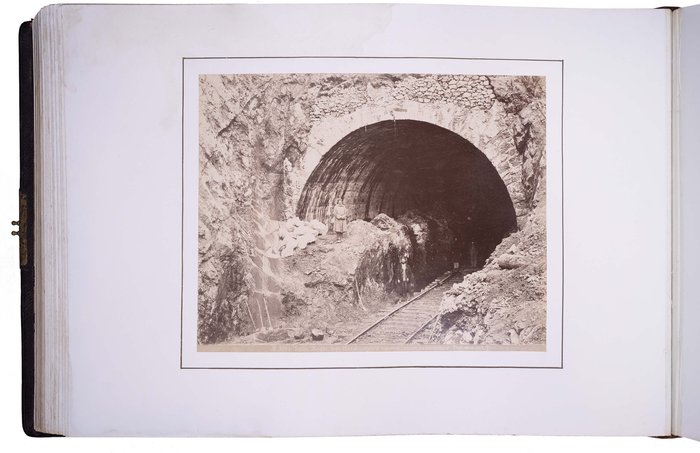

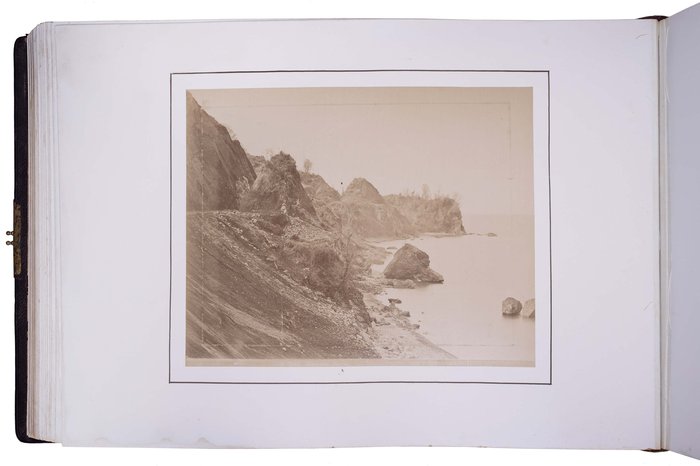
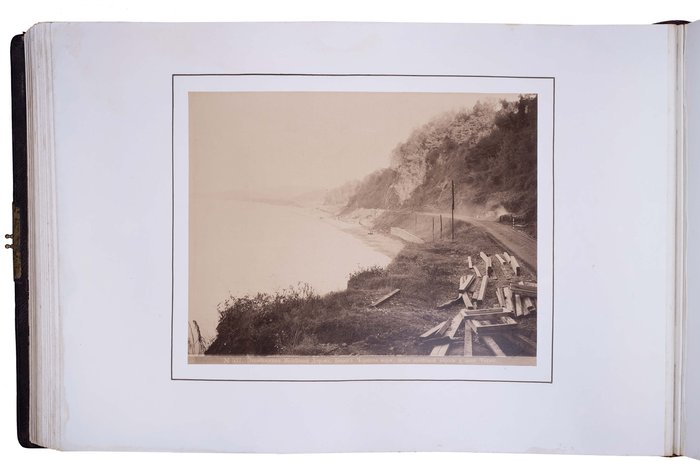
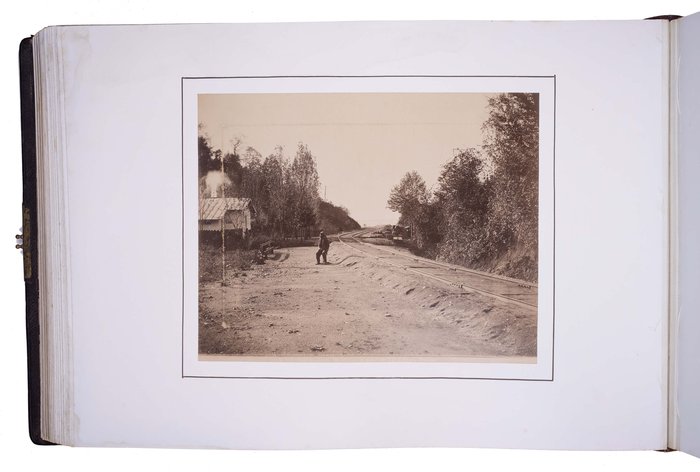
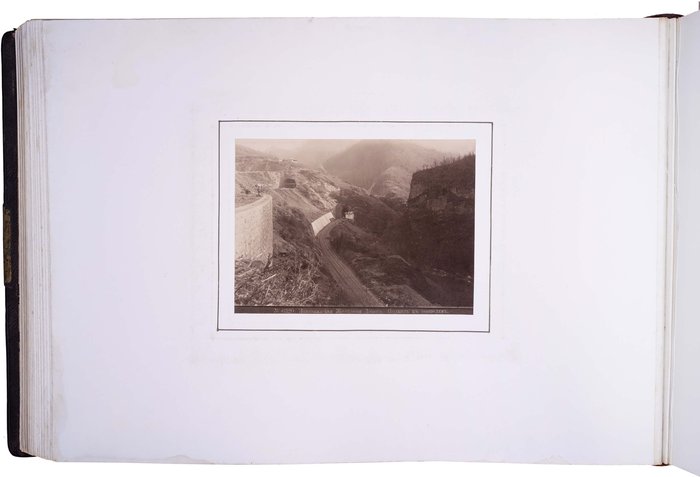
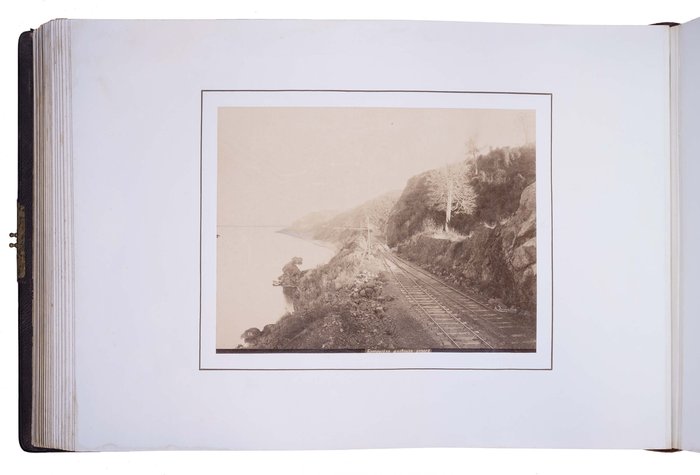
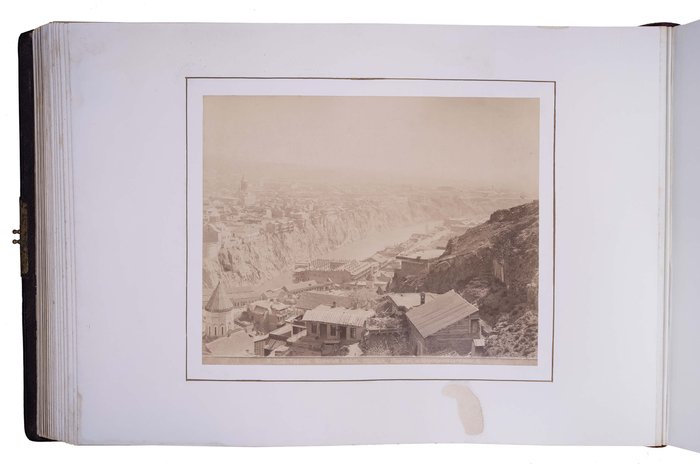
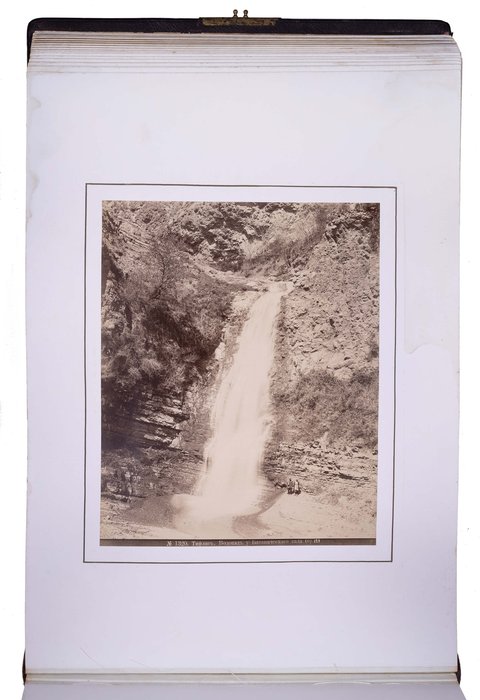
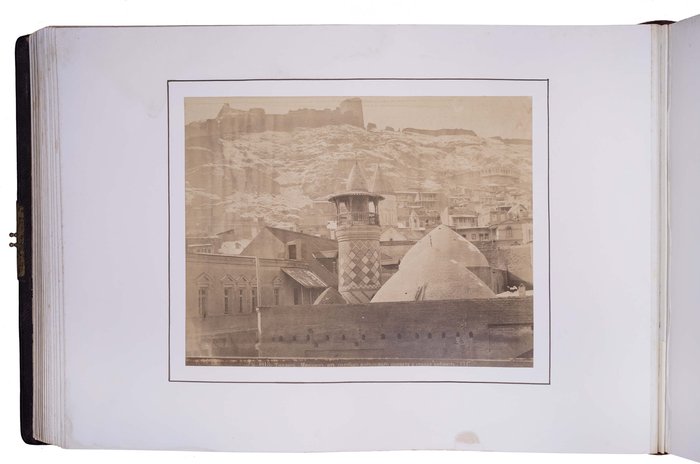
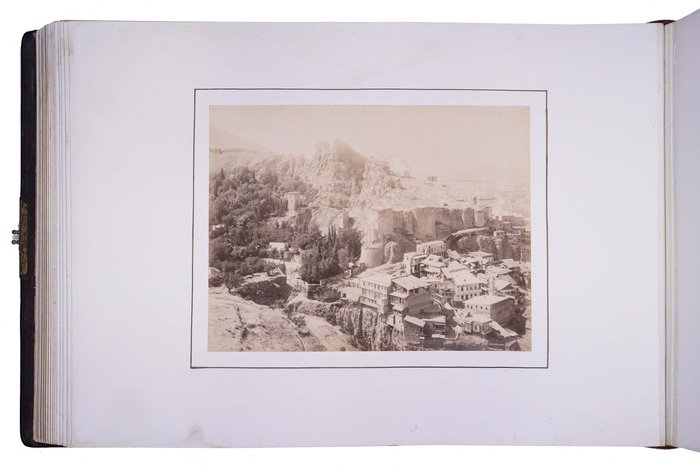

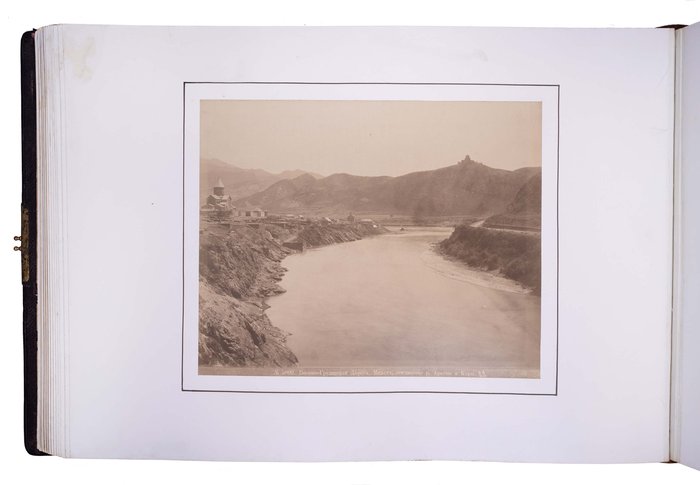
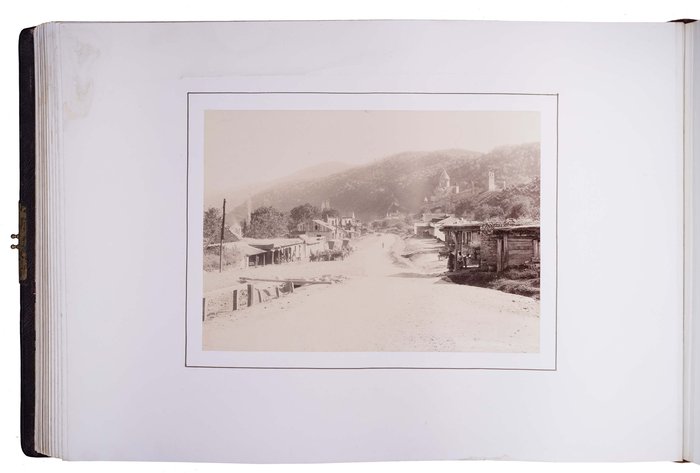

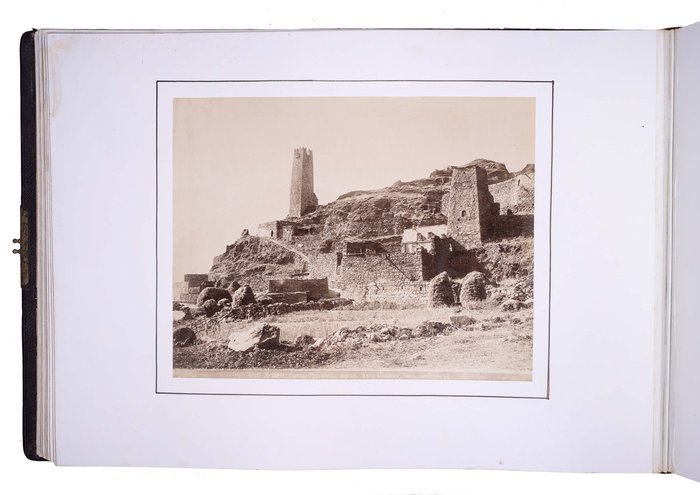
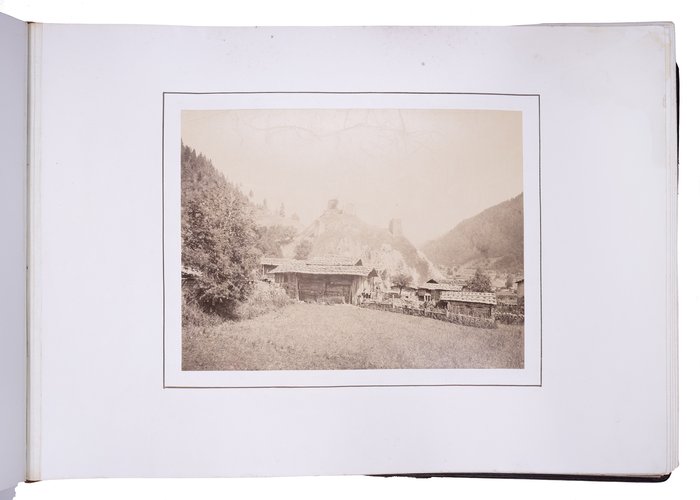
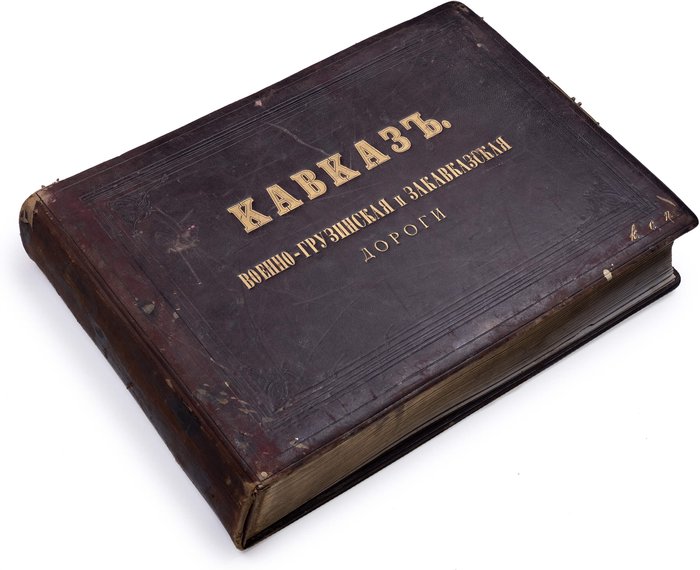
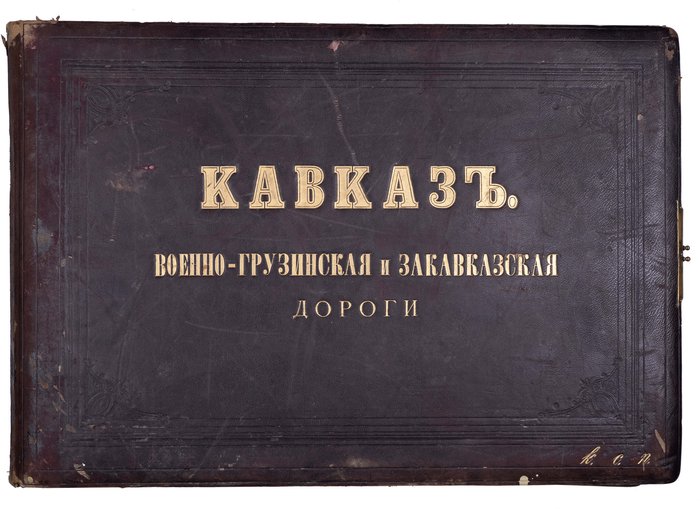

#BK2177
Ca. 1880-1890s.
Oblong Folio album ca. 33x48 cm (13x19 in). 61 card stock leaves.
With 122 mounted albumen photos from ca. 25,5x21 cm (10 x 8½ in) to ca. 13x19 cm (5 x 7 ½ in). Approximately half of the photos captioned and/or numbered or dated in negative. Period brown full leather, with owner’s Gile initials ‘k.s.p’ on the front board. Gilt-lettered title “Kavkaz. Voyenno-Gruzinskaya i Zakavkazskaya dorogi.” on the front board; the inner sides of both boards with moire paper; all edges gilt. Several mounts with minor chipping on extremities, few leaves with minor losses of the outer layer of paper, not affecting the images, a couple of photos mildly faded, binding is slightly bumped, but steady.
Impressive album with large early photos of the region, taken by the prominent local studios, the pioneers of the photography in the region Yermakov (Tiflis), Engel (Kislovodsk) and Mishon (Baku), including rare images of Acheron oilfields, Ancient Islamic Architecture of Baku and Ganja, newly-built Transcaucasian Railway alongside Black Sea, tunnels in construction, ancient Christian architecture alongside the Military Georgian Highway, the mountain range, the dwellings of the locals, the street scenes in Ganja and Tiflis, now lost architecture of Tiflis, including from its Azeri district, the image of the oldest Zoroastrian temple in the region etc.
Photographs were taken in 1880s-1890s and some are dated.
The album opens with 6 photos of the Verkhniy Lars in Ossetia (currently on the border of Georgia and Russia, the only operating land border checkpoint), with the panoramic views and an image of the local, staring over the rock. One of the images show Dudarov watchtower in Ossetia in well-preserved state, now in critical condition. The album moves to Darial Gorge on the Georgian side, with the views of Terek, as well as the image of the horseman and another image of the stagecoach on the road. Moving down the Georgian Military Highway, the images of Devdoraki glacier, local huts, the fortress of Queen Tamara and Pansheti and Sno fortress are pictures. A number of images show the significant mountains of the Caucasus range, including 3 excellent shots of Kazbegi and Devil’s Valley.
A number of images show the villages of Pasanuri, Mlety and Ananuri - often showing the locals and their dwellings.
8 photos show the views around Dzhvari monastery (the place, where the ‘Demon’ poem by Lermontov is set) and the town of Mtskheta - the ancient capital of Georgia, including the breathtaking view through a hole in monastery wall of Dzhvari downhill on Mskheta, and two rivers embracing the town.
8 panoramic photos of Tiflis give a great impression on the town at the time, including documenting the architecture that no longer exists, like Tartar bridge in Old town, the old minaret on the city mosque, factories and churches.
Late in album the focus is moved to Transcaucasian Railway, showing the parts of it that went alongside the coast of the Black Sea from Batumi (opened in 1880s), altogether 20 photos are included, together with 2 photos of construction of the Chakva tunnels, bridge over Kvirila river.
Moving into Azerbaijan, 4 photos of Ganja (Elizavetpol) are shown, 3 of them showing the local mosques and 1 showing the market in front of the mosque.
Twenty photos show Baku, its various mosques, the streets, the people and the city views. Most of them are taken by Yermakov. According to hiscatalogue, he only has had around 50 photos ever shot in Baku, this being a good representation of his work there.
A very important shot of Zoroastrian temple is included - built in the XVIIIth century, following the long tradition of fire worshipers in South Caucasus.
Six photos at the end show the oilfields and the oil development, including the photos by Mishon, one showing the group of 21 workers at Cherniy Gorodok (Black Town), another two showing the fountains of oil, two last ones showing fire on the oilfield.
Eighty-four photos in the album are firmly attributed to Dmitri Yermakov (1846-1917), the captions in negatives correspond with their numbers in Yermakov trade catalogue (see Yermakov, D. I. Fotografiya. Tiflis. Katalog fotograficheskikh vidov i tipov Kavkaza, Persii, Yevropeyskoy i Aziatskoy Turtsii : kollektsiya iz 18-ti tysyach vidovTiflis : Parovaya tip. Shtaba Kavk. voyen. okruga, 1896), one of the most celebrated photographers of the Russian Empire, the pioneer of his craft in the region, in 1870, he opened his own photo studio in Tiflis. During the Russo-Turkish War of 1877-1878, D. I. Ermakov was a war correspondent and was part of the field photography staff of the Caucasian Front. His archive in the 1910s consisted of 25 000 negatives, now they are used widely in reproductions - it’s fair to say that through Yermakov’s camera we have the image of the Caucasus in Imperial Time. He has traveled extensively, in the 1870s he was introduced to Naser al-Din Shah Qajar in Persia and created a very important series of photographs there, gaining him the title of Photographer of His Majesty the Shah of Persia.
Alexander Mishon (1858-1921) has played an equally pivotal role in the photographic development of Azerbaijan. Forn in Kharkiv, he moved to Baku in 1884 and by 1887 he opened up the first photo-studio in the city, later forming the Baku society of photography lovers, that has popularized the use of photography in the region. In 1898 he shot one of the earliest films in Russian Empire ‘The Oil Gush in Balakhany’, that was shot using a 35 mm film on a Lumière cinematograph and is considered the first film in Azerbaijani cinematography. He has produced a few other documentaries, including "Fire on Bibi-Heybat", "Popular Festivities in the City Garden", "Caucasian Dance", and one humorous feature film sketch called "Got Caught" - all of them are considered the silent movie firstborns.
Alexander Mishon was the photographer from North Caucasus, the author of photographs of industrial and railway construction in Russia, the author of the series "Caucasian Types" and "Views of Georgia", had photo workshops in Kislovodsk, Pyatigorsk and Vladikavkaz.
The album, despite its name, is not a collection of photos picked up during a trip, but rather a representation of the life of South Caucasus at the time, likely created by a local official or wealthy person as made as a gift or a report on the development of the region.

